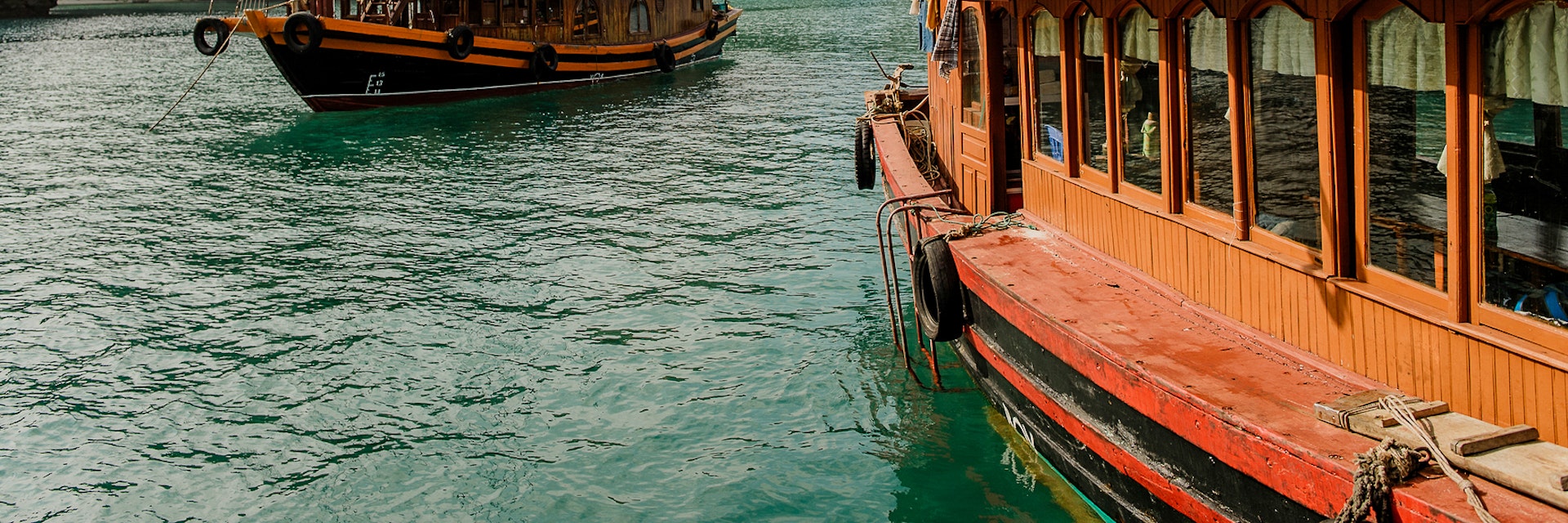
Helena And Laurent Martin / Stocksy United

Southeast Asia
Wrapped in rainforests, edged by golden sands, crowned by volcanoes, studded with ruins of lost civilizations: this is Southeast Asia as you've always imagined it.
Attractions
Must-see attractions.
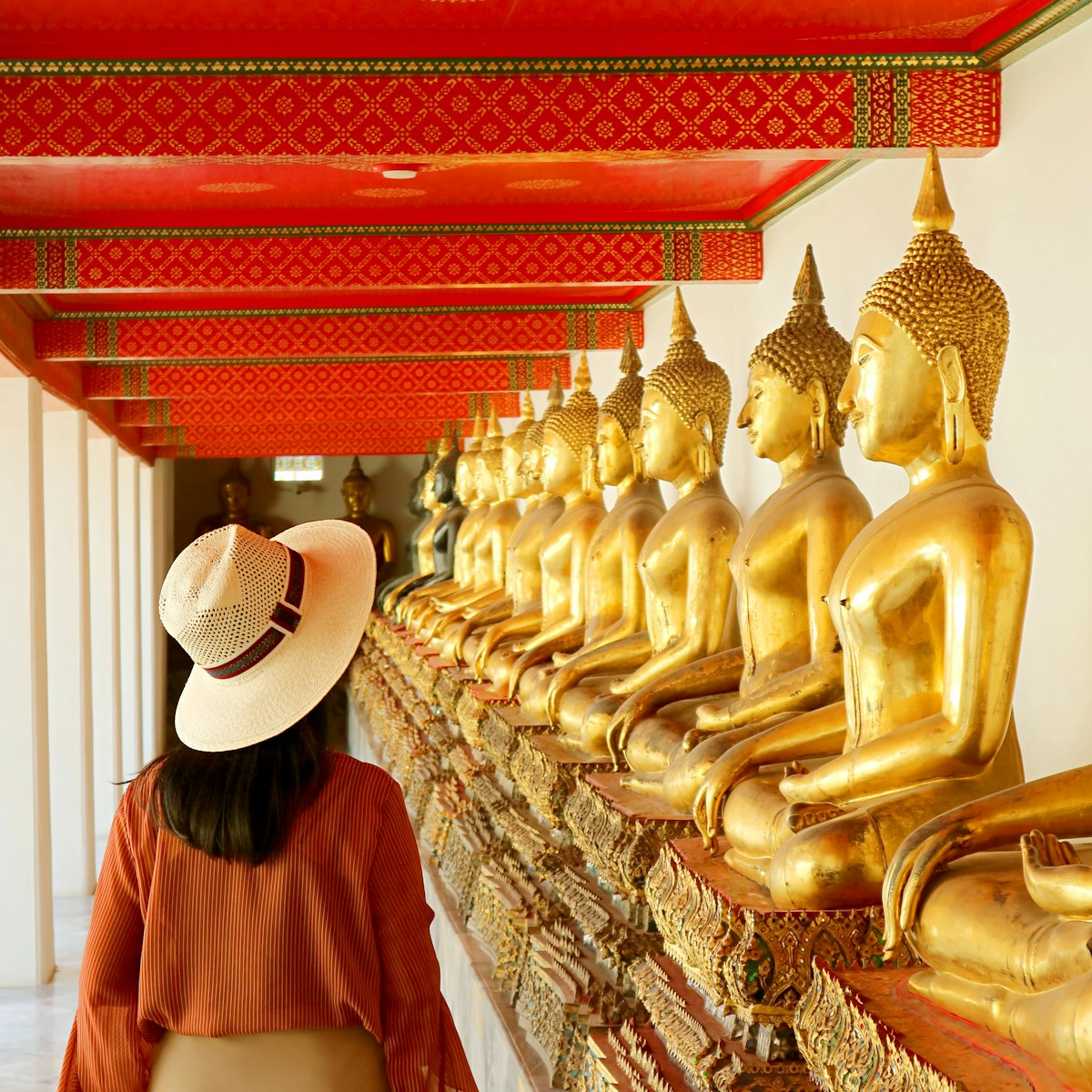
Ko Ratanakosin & Thonburi
Wat Pho is our absolute favorite among Bangkok's biggest sights. In fact, the compound incorporates a host of superlatives: the city's largest reclining…
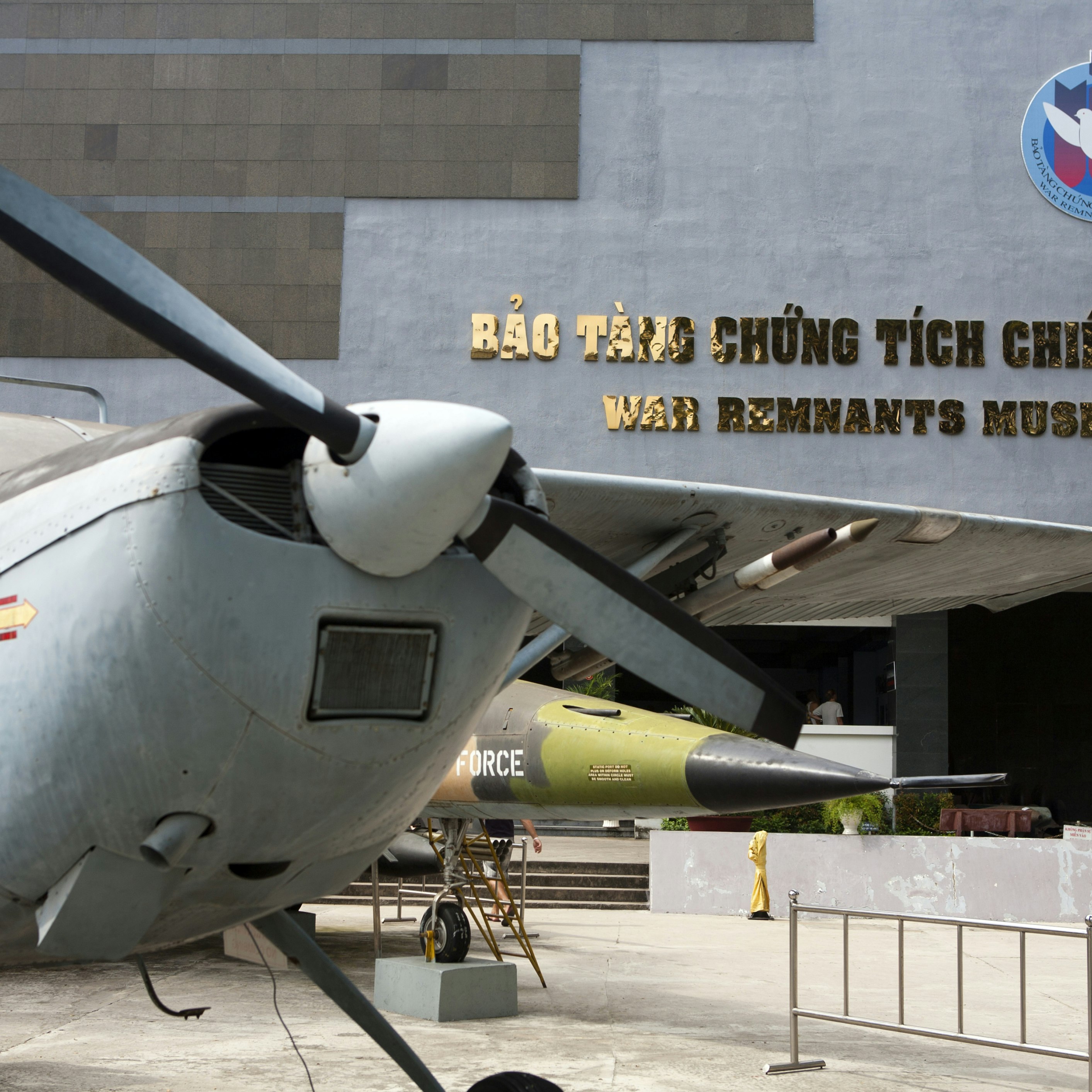
War Remnants Museum
Ho Chi Minh City
To understand the US invasion of Vietnam, and contextualize its devastating impact on the country's civilians, this remarkable and deeply moving museum is…
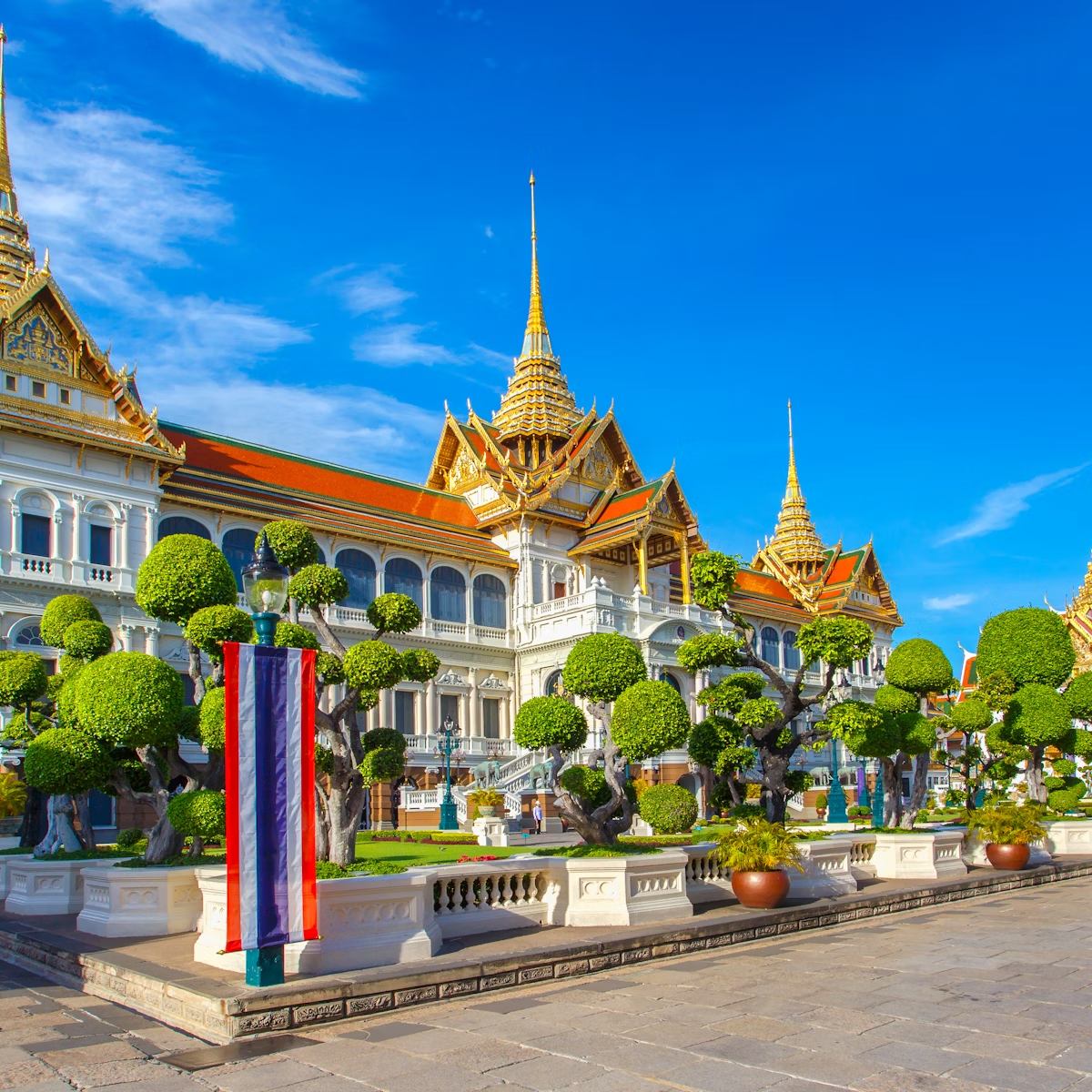
Grand Palace
The Grand Palace (Phra Borom Maharatchawang) is a former royal residence in Bangkok that was consecrated in 1782. Today, it’s only used on ceremonial…

Wat Arun is the missile-shaped temple that rises from the Chao Phraya River's banks. Known as Temple of Dawn, it was named after the Indian god of dawn,…
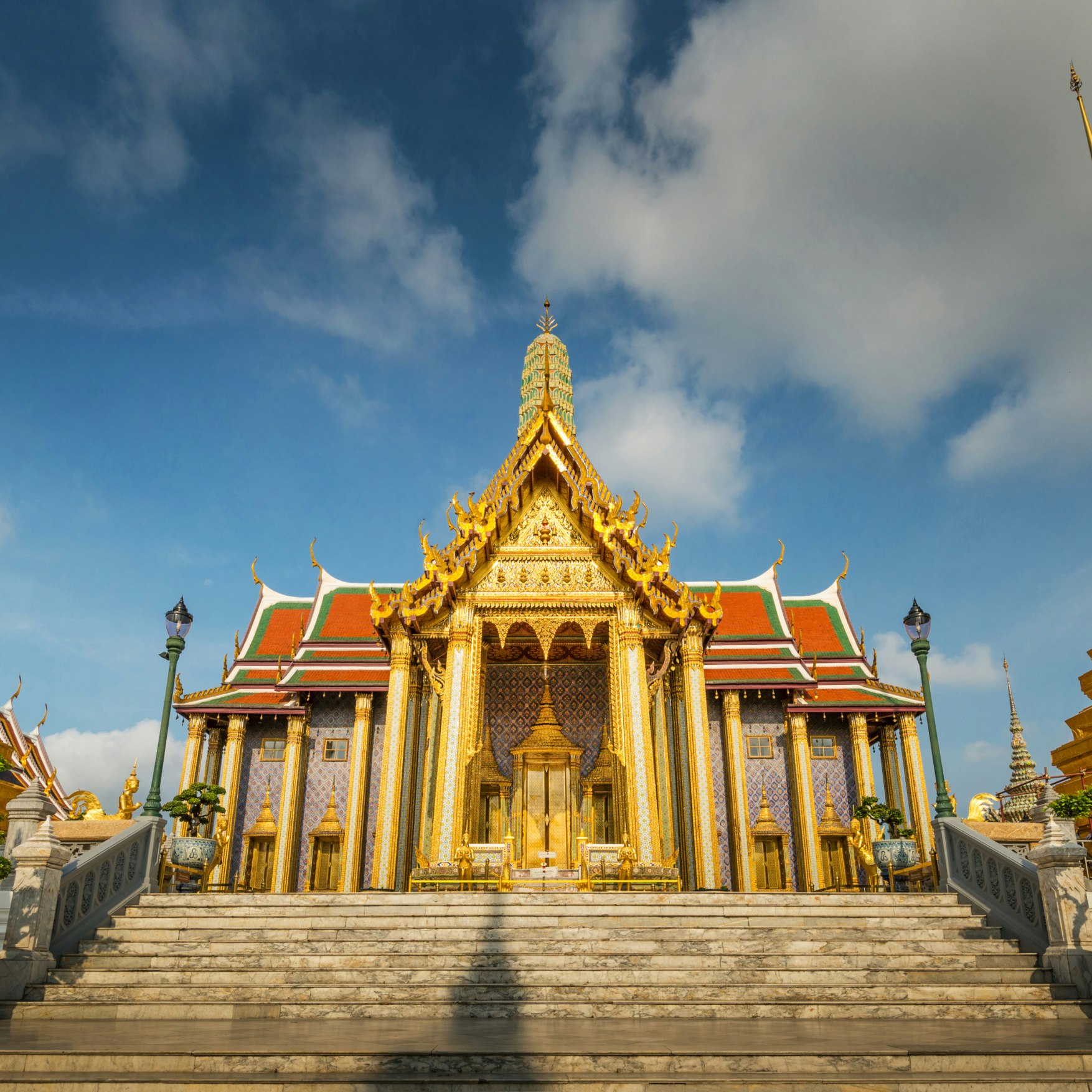
Wat Phra Kaew
Architecturally fantastic, the Wat Phra Kaew temple complex is also the spiritual core of Thai Buddhism and the monarchy, symbolically united in what is…
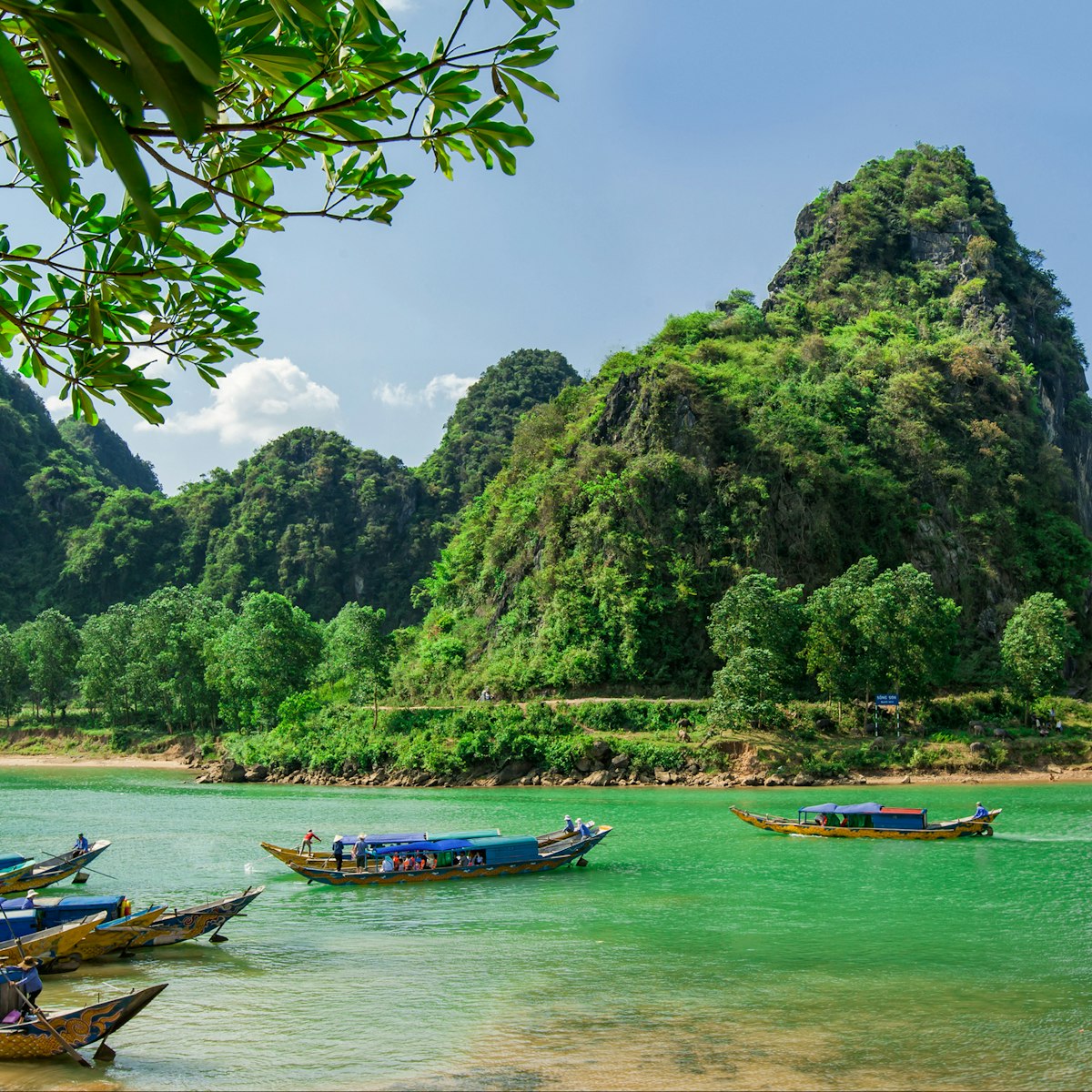
Phong Nha-Ke Bang National Park
North-Central Vietnam
Designated a Unesco World Heritage Site in 2003, the remarkable Phong Nha-Ke Bang National Park contains the oldest karst mountains in Asia, formed…
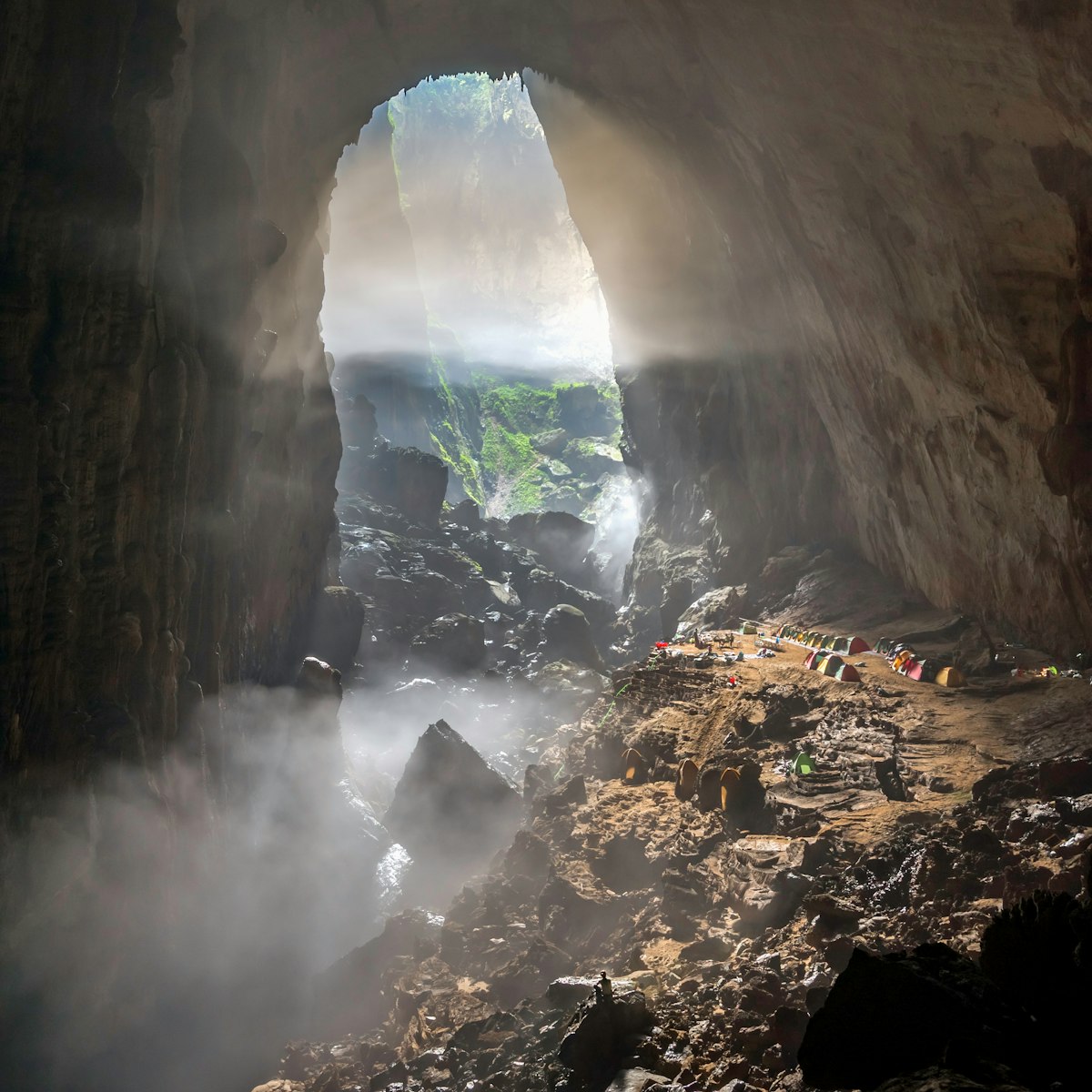
Hang Son Doong
Hang Son Doong (Mountain River Cave), located in the heart of Phong Nha-Kẻ Bàng National Park, is known as the world's largest cave, and is one of the…
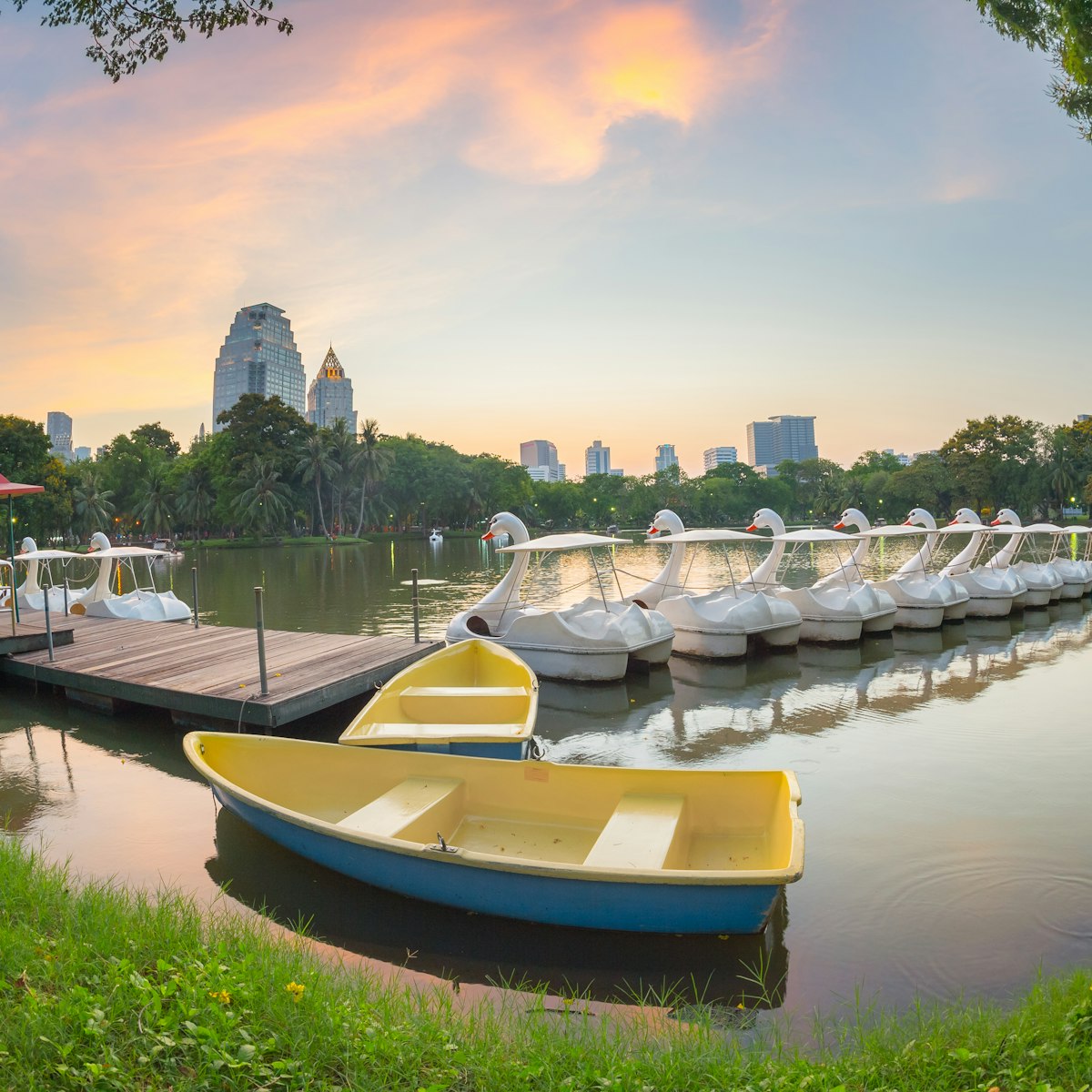
Lumphini Park
Named after the Buddha’s birthplace in Nepal (Lumbini), Lumphini Park is central Bangkok’s largest and most popular park. Its 58 hectares are home to an…
Latest stories from Southeast Asia
Filter by interest:
- All Interests
- Adventure Travel
- Art & Culture
- Beaches, Coasts & Islands
- Food & Drink
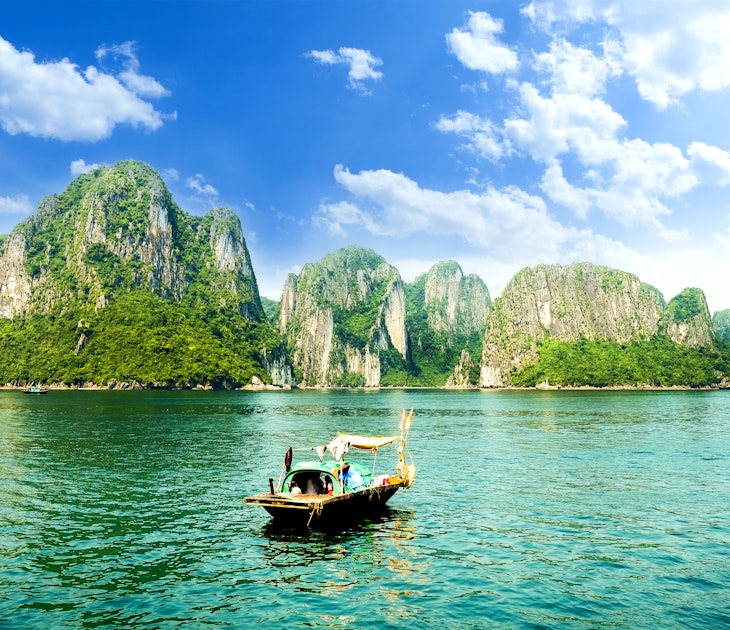
Nov 6, 2023 • 5 min read
From the stunning Halong Bay to the sand dunes of Mui Ne, Vietnam offers up a bewitching array of superlative natural landscapes. Here's our favorite 10.
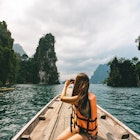
Mar 3, 2022 • 9 min read

Nov 15, 2021 • 5 min read
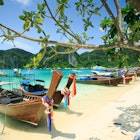
Sep 11, 2020 • 3 min read
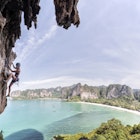
Jan 14, 2020 • 6 min read

Nov 12, 2019 • 1 min read

Nov 10, 2019 • 5 min read

Sep 10, 2019 • 7 min read

Sep 9, 2019 • 5 min read
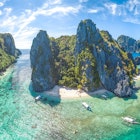
Aug 2, 2019 • 5 min read
Purchase our award-winning guidebooks
Get to the heart of Southeast Asia with one of our in-depth, award-winning guidebooks, covering maps, itineraries, and expert guidance.
Southeast Asia and beyond
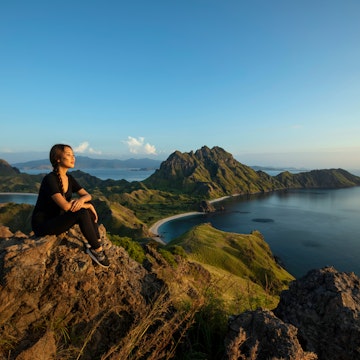

Ultimate SOUTHEAST ASIA Travel Guide
Southeast Asia is a fascinating part of the world that offers beautiful islands, beaches, lush jungles, unique wildlife, tasty food and intriguing culture. This Southeast Asia travel guide is designed to uncover some of our favorite places and things about this region and help you plan your own trip to this unique part of the world.
Defining Southeast Asia can be referred to as the region that resides between Asia and Oceania . It is made up of eleven countries including Brunei, Cambodia, East Timor, Indonesia, Laos, Malaysia, Myanmar, Philippines, Singapore, Thailand and Vietnam.
These countries are bordered by China to the North, Australia to the South, the Andaman Sea to the West and the Pacific Ocean to the East.
We’ve spent more time in Southeast Asia than we care to admit, thinking hard on it we’ve spent no less than 9 months traveling the region over multiple trips at the time of publishing this guide.
We’ve visited across all seasons and while we haven’t been everywhere or to every country (yet!), we’ve done enough leg work to offer you some useful insight on travel to Southeast Asia.
Destinations
Southeast asia travel: quick tips, don’t visit southeast asia without:.
UNIVERSAL TRAVEL ADAPTER

GET A GUIDEBOOK

REUSABLE WATER BOTTLE

SOUTHEAST ASIA BUCKET LIST
Philippines island hopping.
Hopping islands in Coron is one of the best things to do in the Philippines or even Southeast Asia for that matter. You’ll experience white-sand beaches and turquoise waters set against green island interiors. It’s idyllic and one of our favorite places in the world.
DISCOVER THE ANGKOR TEMPLES
One of the most impressive ruin sites we have ever seen is the Angkor Temple Complex in Cambodia. We’ve even been twice! Angkor Wat is the most impressive but we enjoy checking out the temples that have been reclaimed by the jungle too.
SEE WILD ORANGUTANS
Southeast Asia is the only place in the world where Orangutans still exist in the wild. It is possible to track orangutans in Sumatra , Indonesia and Sepilok Borneo . Both are off the beaten track but worth the effort. We’ve seen orangutans in both places!
MORE THINGS TO TRY IN SOUTHEAST ASIA
There is no shortage of great things to do in Southeast Asia during your visit and the biggest problem you’ll face is fitting them all into your itinerary.
Each country has its own offering and unique things to check out during a visit, so be sure to look at our country guides once you decide where you’re itinerary will take you.
SPEND SOME TIME IN BANGKOK: (Thailand) Bangkok is the first city in Southeast Asia that we ever set foot in and that was back in 2010 when we went on our honeymoon! We’ve been back to the city 7 times since then and always recommend it to people who want to visit the region. It’s a huge, sprawling megacity with as much modern convenience as you’d find in any major western city. Combine that with the amazing food, Thai culture and abundance of temples and you pretty much have the perfect city.
TOUR TEMPLES IN CHIANG MAI: (Thailand) Heading north is a popular part of most people’s Thailand itinerary and Chiang Mai is worth the effort. The heart of the city lies within a wall with a surrounding moat and touts a series of beautiful temples to explore.
GET A BAMBOO TATTOO: (Thailand) This isn’t for everyone, but if you’ve thought about getting a bamboo tattoo in Thailand , just do it! Both of us did and have nothing but positive things to say about the whole experience.
VISIT THE PHI PHI ISLANDS: (Thailand) One of the most beautiful chain of islands in the Andaman Sea, the Phi Phi Islands are worth a visit despite the harsh backpacker vibe they portray. Yes, backpackers flock here, but there are also plenty of nice resorts to stay at and other islands to tour during the day that are nearby.
TEMPLE HOP IN BAGAN: (Myanmar) (England) Alongside the Angkor Temples in Cambodia, Bagan is the most impressive temple complex in Southeast Asia. Covering 40 square miles, this complex offers up impressive temple structures from three distinct time periods. Our biggest piece of advice? Give yourself at least 3 days to see the best it has to offer.
UNWIND IN PENANG: (Malaysia) The island of Penang, which sits off the western coast of Malaysia, may just be our favorite island in Southeast Asia. It’s a place that blends tropical jungles with white sand beaches and old-world history with Asian culture. It has a little bit of everything and we that is why we love it. From the street art and amazing good in Georgetown to the Monkey beach trek in Penang National Park , we’d visit a hundred times over and never be bored.
TOUR KUALA LUMPUR: (Malaysia) We won’t lie, we have a love, hate relationship with Kuala Lumpur but that doesn’t stop us from going back. The city has a lot of offer travelers, including a delicious food scene, great architecture and the famed Batu Caves just outside the city.
LEVEL WITH HISTORY IN PHNOM PENH: (Cambodia) Travel is so much more than lying on beaches and touring sites, it’s a valuable window into the past too. If you find yourself in Phnom Penh it is worth your time to learn more about the Khmer Rouge genocide that happened in parallel with the Vietnam War. The museums and killing field sites are sobering but a necessary part of learning world history when you travel.
DO THE BUFFALO RUN IN VIETNAM: Starting in Hanoi, the Buffalo Run tour takes you off the beaten track and deeply explores the very best of Vietnam, north of the demarcation line. This is not a well-traveled path, so you’ll feel like you’re the only one there. You’ll stop off in places like Cuc Phong National Park, Trang An, Phong Nha, the DMZ, Vinh Moc Tunnels, Hue and Hoi An.
CRUISE AROUND HALONG BAY: (Vietnam) One of the best things to do in Vietnam is to cruise Halong Bay and for good reason, it’s gorgeous! Massive limestone karsts grow out of bright green seas paired with island accommodation and white sand beaches. It’s a great way to unwind, especially if you have jetlag from the flight to Southeast Asia.
WATCH WILDLIFE IN THE AMAZON OF THE EAST: (Borneo) We are total suckers for a thick rainforest and Borneo delivers. The island is literally known as the Amazon of the East and features some of the most incredible primary rainforests you can find on the planet. With that comes some incredible wildlife viewing, it’s a birders paradise with more than 688 resident and migratory species. You can also see the endemic Proboscis Monkey, orangutans and if you’re really lucky some pygmy elephants.
GO SCUBA DIVING AT SIPADAN ISLAND: (Borneo) If you’re a scuba diver then you likely already know about Sipadan Island . It is arguably the best place in the world for diving and we do not disagree. Pair it with the incredible muck diving and manta cleaning stations around nearby islands like Siamil and Mabul to make the ultimate dive trip in Southeast Asia.
TRACK KOMODO DRAGONS: (Indonesia) There is only one place in the entire world where the world’s largest reptile, the Komodo Dragon , still lives in the wild. This is the Komodo Islands in eastern Indonesia. Not only are these islands absolutely stunning, seeing the dragons is a once in a lifetime experience too. It’s not possible to stay on the islands, so be sure to book yourself a Sailing Komodo Island tour when you arrive in-country.
GET OFF THE GRID IN RAJA AMPAT: (Indonesia) Located off the coast of the remote island of Papua, Raja Ampat is part of Indonesia’s West Papua province. This place is a straight-up paradise. It offers insane jungle hiking through untouched forests, island views, rich culture and some of the most pristine coral reefs we have ever seen. It’s hard to get to and expensive but oh so worth the effort.
EXPLORE BALI: (Indonesia) If you’ve never been to Indonesia before, we’d happily recommend Bali be added to your itinerary. It is one of those Southeast Asia classics that shouldn’t be overlooked. From the beaches in Kuta, the islands of Nusa and the rice terraces that surround Ubud , there are plenty of things to do in Bali during a visit.
CATCH A SUNRISE AT BOROBUDUR TEMPLE: (Indonesia) Another temple, I know, but this one is spectacular and worth the visit. Catching a Borobudur sunrise is almost otherworldly and worth the 3am wakeup call to see buddha silhouettes against volcanos erupting against the sunrise. The temple is located on Java island, not far from Yogyakarta.
FOODIE BUCKET LIST
Southeast Asia is a foodie’s paradise, and the region is an incredible palace to eat your way around. In fact, a big part of Southeast Asia travel is the food, so don’t be afraid to try the local stuff!
Thai cuisine needs no introduction, and Malaysian food is possibly the most underrated in the world. There are lots of curries and noodle dishes, with a great mix of Malay, Chinese, and Indian cuisine to try.
Burmese food involves more curry and noodles, while Vietnam is famous for Bahn Mi and Pho . Indonesia has its fried rice and rendang. Singapore is home to some of the world’s only Michelin-starred street food stalls !
SOUTHEAST ASIA FESTIVALS
Southeast Asia is packed with events and festivals throughout the year, and every country has unique celebrations to offer visitors.
In Vietnam, the biggest celebration is Tet , the New Year in February. Chinatowns everywhere celebrate Chinese New Year around the same time.
In Thailand, you can visit the famed Songkran , a water festival that brings in the Thai New Year in April.
In Bali, you can find processions and parades throughout the year, while in March, the Day of Silence is a unique local occasion to be part of.
The Philippines has more local festivals than anywhere else, a throwback to their Spanish ancestry. The major ones are Sinulog in January and Holy Week before Easter.
Pack like a pro on your trip to SOUTHEAST ASIA!
Popular regions in southeast asia, mainland west.
Thailand is a Southeast Asia travel destination that needs little introduction. The Land of Smiles is home to beautiful islands in the south, rugged mountains in the north, and of course, the thrilling capital, Bangkok. There’s sun, there’s sand, there’s culture, and there’s great food. Myanmar is little visited compared to its Southeast Asian neighbors, but the county recently began to open up to tourism and saw a boom when it did. Myanmar is unlike anywhere else in the region. Explore ancient Buddhist pagodas, visit the cultural climes of Mandalay and see the fading colonial ruins in Yangon .
Malaysia and Singapore are home to the best food you could eat when you travel to Southeast Asia. Visit the foodie stalls and white sand beaches of Penang , and the modern sights of Kuala Lumpur before heading south to Singapore – one of the most modern and exciting cities in the world.
MAINLAND EAST
The eastern mainland is made up of Laos , Cambodia , and Vietnam . Aside from their shared French-colonial history, these countries couldn’t be more different. Vietnam is the rising star of the region, offering an epic adventure if you travel between Hanoi and Ho Chi Minh City. See the scars of the Vietnam War and explore the magnificent nature, scenery, history, and delectable food that this modern nation offers. In Cambodia , a trip is inseparable from the harrowing past ; you’ll learn about the Khmer Rouge as soon as you land in the capital. You can visit the ruins of Angkor Wat or head to the beaches of Sihanoukville. Laos is untouched, but who knows how long it will stay that way. One of the poorest and most rural countries you could visit when you travel to Southeast Asia, Laos is also the most unexpected.
Borneo is one of the world’s largest islands and this unique destination is home to some of the best rainforests on the planet. Borneo offers hiking, mountain climbing, beaches, and diving . The island is divided between three countries: there’s Malaysian Borneo in the north and tiny Brunei. The south is Kalimantan, an Indonesian province.
THE ISLANDS
If you’re looking for island hopping opportunities, snorkeling, diving, and diverse culture, then Indonesia or the Philippines are the best countries to include in your Southeast Asia travel itinerary. Indonesia has Bali , one of the region’s most popular islands, but there’s also the culture and history of Java, relaxation, and slowness on Lombok , the wild nature of Sumatra or Komodo , or the beautiful marine life of Raja Ampat . The Philippines is beautifully diverse, home to the highlands and rice terraces of the Cordilleras, but also the rugged islands of Palawan , including the stunning and popular Coron and El Nido . We will not lie, Indonesia and the Philippines are our two most beloved countries in Southeast Asia. We’ve been back to visit them both, multiple times, and it’s the first place we head each time we return to the area.
SOUTHEAST ASIA TRAVEL BUDGET
Setting a budget for travel to Southeast Asia is highly dependent on your travel style. It is possible to visit just about anywhere across the continent on any budget and still have a great trip. That said, you can make your trip as basic or as luxurious as you desire.
To help you set your budget, we’ve included some base range price estimations for Southeast Asia travel. Of course, keep in mind that prices can fluctuate based on seasons, availability and festivals.
If you’re looking to travel on a budget, be sure to check out the 12 Tips on How to Travel Cheap before you start planning.
ACCOMMODATION: Accommodation is good value when you travel to Southeast Asia. Guesthouses, hostels, and homestays will cost between USD 10 and USD 20 per night (less if you don’t care about the cleanliness). Private rooms can be between USD 20 and USD 50. Above this price range, you can find more luxurious accommodation . Popular resort destinations in Thailand or Bali will charge USD 100 or more per night for fancier hotels.
FOOD: Food is incredibly inexpensive in Southeast Asia; you can find local eats for as little as USD 1 per plate in most countries. Prices go up in touristy destinations (we’re looking at Thailand and Bali again) and western-style restaurants. You still won’t often pay more than USD 10 per meal , however.
TRANSPORT: Local transport is affordable across Southeast Asia, and international transport is equally cost-effective. Buses and trains vary in standards and prices. Local transport will be just a few dollars for day-long journeys, but you pay more for comfort. Mopeds can be hired for between USD 5 and USD 10 per day. Budget international flights can be as low as USD 30 if booked in advance for a two-hour flight.
ACTIVITIES: Activities vary in cost from country to country but expect to pay between USD 30 and USD 70 for a day of diving . You can enjoy a boat tour for around USD 30 a day, or hire trekking guides for a similar price. For the most part, activities are very cost-effective in comparison to western prices.
20 USD PER DAY
Living in hostels, lounging on beaches, and eating local food. If you’re looking to include many destinations in your Southeast Asia travel plans, or want to enjoy lots of day trips and activities, raise that budget to USD 50.
50-100 USD PER DAY
Midrange travelers will be able to enjoy the comforts of private rooms and guesthouses, taxi rides, and tourist buses. You can enjoy street food, restaurants, and plenty of activities. Your money will go far on this budget and you won’t miss much.
200 USD + PER DAY
Luxury travelers can get a lot for their money when they travel to Southeast Asia. Stay in premium resorts in Bali, Borneo, or the Thai Islands. Enjoy restaurant-quality food, private day tours and drivers, and plenty of spa treatments!
WHERE TO STAY IN SOUTHEAST ASIA
Below you will find some of the places we have stayed during our travels in Southeast Asia. These are individual properties that we enjoyed and would recommend to other travelers.
For more in-depth information, be sure to check out the following articles:
- Where to Stay in Bangkok: Best Districts & Hotels
- INAYA Putri Bali Nusa Dua: Resort Review
PLANNING TO BACKPACK SOUTHEAST ASIA?
Southeast Asia is an extremely popular destination for backpacking because you can do a lot throughout the region on a very small budget. We’ve experienced this region on both the high end and budget side, including spending 6 months backpacking during our 2 year RTW trip .
If you’re looking for some breakdowns on how we did this, check out the overviews below.
HOW TO GET AROUND IN SOUTHEAST ASIA
If you’re traveling around mainland Southeast Asia, you can cross most borders overland. You could travel all the way from Hanoi to Singapore overland using buses and trains. The transport varies from cheap, slow local buses to faster, luxury sleeper buses and trains.
The same applies to the Philippines and Indonesia, although you’ll need to combine buses with boats. In the Philippines and Indonesia, you’re often better off flying, as destinations are spread over large areas. If you have time, you can take inter-island ferries.
If you’re visiting Borneo, you’ll need to fly in. You can travel by bus between major cities and destinations in Malaysian Borneo and Brunei, but Kalimanatan is much less developed and more challenging to travel around.
Most land borders into Myanmar are off-limits, so you need to fly into Yangon. From there, you have bus and train connections across the country.
BUS: If time is on your side, there are many instances where taking the bus will be the best option for getting between places. There are usually two classes operating the popular routes, this includes tourist buses and local buses. Tourist buses are usually comfortable coaches with AC and WIFI. Local buses will be rough and not have AC. Both will get you where you need to go.
FLIGHTS: Thanks to budget airlines like Air Asia, Southeast Asia is incredibly well served by low-cost carriers offering regular flights and cheap fares. Major cities, and increasingly, many more regional airports, have connections between one another. In most cases – particularly over longer distances – flying is cheaper than taking the train or bus.
TOP SOUTHEAST ASIA TOURS
Iconic thailand.
15 Days from Bangkok, Thailand Visits: Chiang Mai, Ayutthaya, Kanchanaburi, Khao Sok, Ko Samui, Krabi & Bangkok
EXPLORE VIETNAM
13 Days Hanoi to Ho Chi Minh City Visits: Hanoi, Halong Bay, Mai Chau, Hue, Hoi An & Ho Chi Minh City
DISCOVER SOUTHEAST ASIA
18 Days Bangkok to Siem Reap Visits: Bangkok, Chiang Mai, Luang Prabang, Hanoi, Halong Bay, Ho Chi Minh City, Phnom Penh & Siem Reap
WHEN TO VISIT SOUTHEAST ASIA
Southeast Asia is a vast area that sprawls over both sides of the equator. For the most part, you can expect countries to be hot, humid, and tropical when you travel to Southeast Asia – but this isn’t always the case.
The north of Vietnam is much more temperate and has cold winters, while the same can be said of Myanmar’s northern mountains. However, most areas you will visit during your Southeast Asia travel itinerary will have distinct wet and dry seasons .
North of the equator, the dry season is usually November to April. Most of Indonesia, however, has its dry season from May through to October. The dry season is the best time to explore Southeast Asia; there’s little chance of rain and thunderstorms, and the visibility if you’re snorkeling or diving is perfect.
Even in Indonesia, peak season is from November through to January, and tourist numbers and prices increase dramatically over the Christmas holidays. Try to travel in the shoulder seasons instead;, you might get a little rain, but you’ll escape the worst of the crowds.
For more in-depth information, check out:
Best Time to Visit Bali: Month by Month Breakdown
Best time to visit the philippines: month by month breakdown, inspiration for your next southeast asia trip, safety in southeast asia.
Southeast Asia travel is generally safe, even for first-time travelers (which is why it’s a popular backpacking destination). In touristy destinations, however, you do need to be super-careful of scams and low-level thievery.
This is especially so in places like Bali and Bangkok. On buses, try to keep your belongings close and safe, and on the party islands in Thailand, be careful! Take our advice and be sure you’re prepared. Check out 25 Essential Safety Tips for Travel
Each county has its own laws and customs, so read up before you cross the border. What goes in Thailand might not be so welcome in Malaysia. Some countries are Muslim, others Buddhist, and some Christian – it’s a diverse region!
For personal experiences, check out:
- 5 Reasons Why Bali Is Not the Paradise You Think It Is
- Culture Shock: Our First 24 Hours in Bali
SOUTHEAST ASIA TRAVEL: BOOKING RESOURCES
Southeast asia travel guide: related articles.
Looking for more info? Check out all the articles we’ve written on travel to Southeast Asia and start planning your dream trip.
What To Do in Chiang Mai, Thailand (18 Amazing Attractions, Festivals & Food)
24 amazing malaysia attractions you cannot miss, essential el nido palawan guide: what you need to know, ultimate philippines itinerary for 10 days, 2 weeks or 3 weeks, 21 incredible things to do in the philippines, 15 essential things to do in boracay, 15 stunning things to do in palawan, philippines, ultimate puerto galera, philippines guide: diving & beaches, busuanga island palawan: ultimate guide to the last frontier, culion island palawan: is this the next philippines hot spot, kayangan lake in coron: the philippines most famous photo spot, 15 incredible islands in coron you must visit in the philippines, 20 beautiful places in the philippines for your bucket list, what to wear in bali: the ultimate packing list, 15 awesome things to do in manila (itinerary for first time visitors), 15 best things to do in yangon, myanmar, 35 amazing things to do in southeast asia (across 7 countries), 25 epic & best places to visit in southeast asia, 21 epic things to do in bali.


2 Weeks In Southeast Asia: 7 Itineraries
DISCLAIMER: This post might have links to travel services and products that we enjoy. We might make a commission from it at no extra cost to you.
Southeast Asia is probably one of the most diverse regions of Asia. There are only 11 countries in Southeast Asia , but each country has their own languages, own traditions, cultures, history and things to offer its visitors.
Southeast Asia is home to stunning white sand beaches, beautiful mountains to hike, and authentic dishes that the world has come to enjoy.
If you combine the islands in the Philippines and Indonesia, you are talking about nearly 20,000 islands. These two are also regions with active volcanoes and surfing spots.
While Thailand and Vietnam are proud to present their delicious food that not even your favourite Thai and Vietnamese restaurants could come close to replicating.
Alright, I’m not trying to overwhelm you. Southeast Asia has so much to offer to all kinds of visitors; hiking, food adventure, surfing, beach bumming, exotic animals and fruits, and so much more in between.
2 weeks in Southeast Asia is not enough, that’s for sure . However, with plenty of planning, you can cover many areas and do so many things.
I will show you seven travel itineraries for Southeast Asia featuring Thailand, Vietnam, Cambodia, The Philippines, Indonesia, Malaysia, and Singapore. Be prepared, this is a long-form guide . You can also book mark this article or save on your Pinterest.
In the next chapter, I will also share some things you should know before you go, such as visa, language and currencies, getting around, and which month you should come and visit to maximise your time.
TIP : This post is quite long, I recommend you use the table of contents below. Each itinerary shows the places to see and hotel recommendations.
BASIC TRAVEL INFORMATION FOR SOUTHEAST ASIA
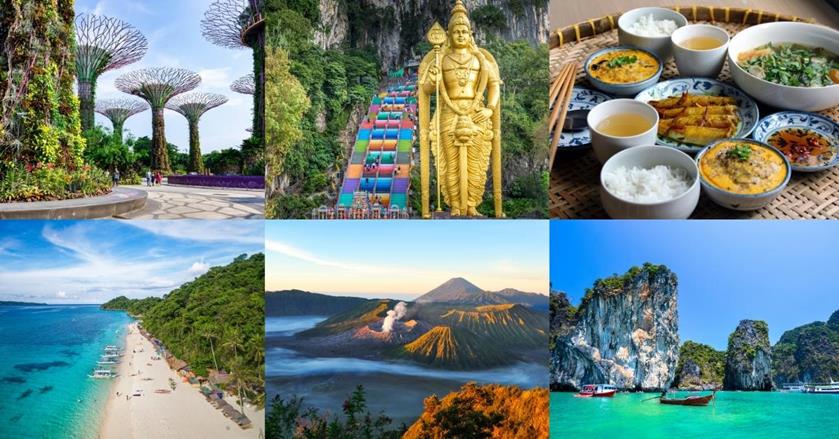
These are the only basic things you should remember before booking anything. If you plan to do something very specific, I recommend reading more to ensure you are not visiting during bad timing or the wrong season.
When is the best time to travel to Southeast Asia
Although Southeast Asian countries are pretty close to each other, the seasons can’t be any more different .
For example, Vietnam actually has a winter season if you are visiting the northern region, while the typhoon season in the Philippines and Thailand is a bit different.
November to February is a good time to visit Southeast Asia . It’s drier, cooler, and has less chance of rain – it’s the perfect time for hiking and doing water activities.
However, in the north of Thailand and Vietnam, these months could be colder than expected, and the visibility in the mountains could be poor.
Are 2 weeks enough for Southeast Asia
Two weeks can be a decent amount of time for a Southeast Asia trip , depending on your travel style and priorities. With careful planning and prioritising of destinations, you can visit a few countries and experience some of the highlights of the region.
However, keep in mind that Southeast Asia is a vast and diverse region with many unique cultures and attractions, so two weeks may feel rushed for those who want to explore more extensively . Plus, travelling between countries can vary from a bus ride to taking a one to 3-hour flight.
You can probably visit 1-2 countries in Southeast Asia in under 14 days if they’re near one another. A good example of this is Vietnam and Cambodia or Thailand and Cambodia.
But, many capital cities in Southeast Asia have direct flights, making it easy to spend one week in one country and the second week in another country. The bottom line is to plan to see 3-4 cities when making your travel itinerary .
Which countries are sharing land borders
Some destinations in Southeast Asia are the best combination on a single journey. Countries like Malaysia, Singapore, Vietnam, Myanmar, Cambodia, and Laos have land border points, and backpackers suggest getting the best out of these border-crossing relationships.
Crossing the land borders can also lessen the expense and save you time at the same time .
I spent two weeks between Singapore and Malaysia, but I also spent 2 weeks in Thailand and Cambodia. I crossed the land border for both trips. On the other hand, my 2 weeks in the Philippines and Indonesia were via non-stop flight.
How to get around
There’s not really one answer except – using the Grab or Gojek app . These are ride-hailing apps like Uber or Lyft. These apps offer rides for cars, taxis, and even motorbike taxis in this region.
Grab and Gojek apps work in almost any major city in Southeast Asia, except in Laos, Myanmar, Brunei, and Timor Leste.
There are also other apps like Bee, inDriver, Angkas, etc – but not all these apps work in the entire region of Southeast Asia.
Buses are the cheapest way to get around , while domestic flying is also pretty good, and flight tickets are affordable. There are usually taxis but beware of drivers who will tap their meter to get your fare higher.
Countries like Vietnam, Thailand, and the Philippines have some short and long-distance train systems. Singapore has a fantastic metro system throughout the country.
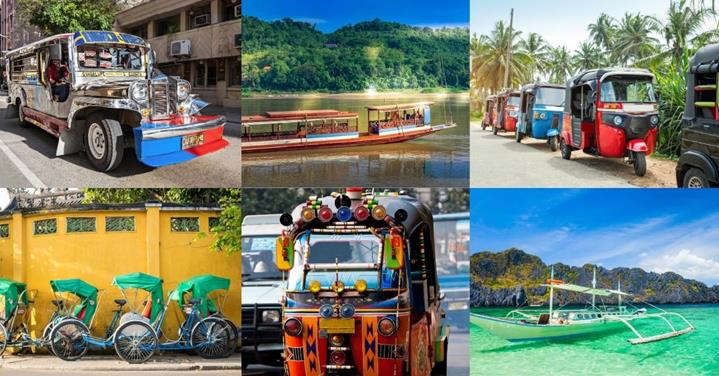
Language and currency
Languages and currencies in Southeast Asia vary from country to country. However, getting your USD, GBP, AUD, and CAD converted to the local currency is easy . With the exception of Cambodia.
Cambodia uses USD and Cambodian Riel. You can pay with these currencies pretty much anywhere (in cash). The ATM will even dispense USD, but if you pay $1 for a $.50 worth of an item, you won’t get a chance (not even in Riel).
There are ATMs in all major cities and airports and payment with the card has been taking off, but cash is still king in Southeast Asia . You might be able to pay for your hotel with your card, while the rest will be in cash.
English is widely spoken in the Philippines, Singapore, Malaysia, and Indonesia, while these countries also have their own main languages (Tagalog, Malay, Mandarin, and Bahasa Indonesia).
In Vietnam, Thailand, and Cambodia – if you are in big cities, it’s easy to get by with English. Most younger locals can communicate well in English.
It’s also helpful to download the local languages on your Google Translate app. It’s not the best, but it’s surprisingly helpful.
Southeast Asia trip budget for 2 weeks
The budget for Southeast for 14 days can vary a lot. Although this region is generally affordable, the prices of services such as accommodation, transportation, and tours are very different for each country.
Your budget will depend on the places you want to see. For example, Singapore costs almost the same as Europe or North America. But Vietnam, Laos, and Indonesia offer super affordable accommodations.
To give you some ideas: On average, around $700 to $900 is a decent budget for 2 weeks in Southeast Asia for one person. This includes mid-range accommodation, transportation, a tour, and okay food.
You can go on a shoestring backpacker budget of $500 to $700 , but that means staying in a shared dorm room, booking a standard tour, eating street food, and most likely booking a bus for transport instead of flying or taking the train.
For honeymooners or luxury travellers, $1,500 to $2,500 is an extraordinary budget that allows you to stay in comfortable hotels or resorts, comfortable transportation, and high-end restaurants.
Visa and COVID-19 policy
Each country has different visa policies. Some allow most European, North and Latin America, and neighbouring countries to enter visa-free or for a small fee. Here’s a quick summary of visa requirements in Southeast Asia:
- Brunei – visa-free for 14 to 90 days
- Cambodia – secure your visa in advance , valid for 30-90 days
- Indonesia – apply for an eVoa valid for 30-90 days
- Laos – visa on arrival or evisa for 30 days
- Malaysia – visa-free for 30-90 days
- Myanmar – must get an evisa for 90 days
- Philippines – you get 30 days visa-free
- Singapore – no need for a visa for 30 days
- Timor Leste/East Timor – visa-free or visa-on-arrival for 30 days
- Thailand – at least 30 days visa-free
- Vietnam – apply for an evisa valid for 30 or 90 days
All the countries in this article have fully reopened their borders to international tourists. Each country has implemented different COVID-19 protocols, but many have removed them.
f you’re vaccinated, it’s best to bring your vaccine card just to be sure and pack some masks. Many capital cities (condensed cities) still require wearing masks in public transportation and health facilities.
DISCLAIMER : Each country has different policies in place, please do your research before booking anything. We are not responsible if you are not allowed to enter the country.
Travel arrangement tips
For those who enjoy planning a trip in advance, make sure to book your hotel at least 3 months prior to arrival especially if visiting in December and during the Lunar New Year .
Domestic flights, buses, and trains can be booked last minute as long as you’re not visiting during Christmas, New Year’s, or Lunar New Year (peak season).
2 WEEKS IN SOUTHEAST ASIA ITINERARY
We have 7 travel itineraries here for spending 14 days in Southeast Asia. You don’t have to follow the itineraries religiously, but it will give you an idea of how many days to spend in each city, how to get from one place to another, and which countries are best to combine.
You should check out our compilation travel itineraries for Southeast Asia to help you decide where to go.
Package tours
If it’s your first time in Southeast Asia and you want this trip to be a little less stressful, you might want to consider booking a package tour.
This type of tour is great because the tour company will arrange 90% of the things you need to book on your behalf. This includes planning transportation, finding accommodation, arranging tours and activities, hiring tour guides, and even porters if needed.
A package tour is ideal for solo travellers, family adventurers, and retiree people . Even travellers between 18-year-olds to 30s would sign up for package tours for a smooth sailing trip.
If you have two weeks in Southeast Asia, you can book the 10 days and leave yourself with 4 days to explore on your own, or book the entire 14 days, it’s up to you.
Here’s a list of Southeast Asia tours that you can take a look at . You will also find combo tours or specific-destination tours:
Itinerary #1: Thailand and Cambodia
Cambodia and Thailand are great combo destinations, and they share a land border and both are affordable.
Thailand is the getaway of the Southeast . It’s undeniably one of the most popular countries in this region, offering fantastic beaches, exciting activities, and world-class cuisine.
Thailand is known for the party scene in Bangkok , the paradise-like beaches of Phuket, and the incredible hiking trails in Chiang Mai.
Cambodia is famous for the magnificent temples of Angkor Wat and the dark period of the Khmer Rouge in the 1970s. While the rich history is a significant draw for visitors, this country has much more to offer for those who stay longer than just a quick temple tour in Siem Reap.
Beyond the temples, this charming nation is a must-visit destination for travellers.
Since Thailand and Cambodia share a land border, it’s very easy to travel between them . Although neighbours, Cambodia and Thailand actually have very different cultures, languages, currencies, and histories from one another – making this 2 weeks in Southeast Asia itinerary the best one for first-time visitors in the region.
We have articles for 2 weeks in Thailand and 2 weeks in Cambodia that you can have a look at.
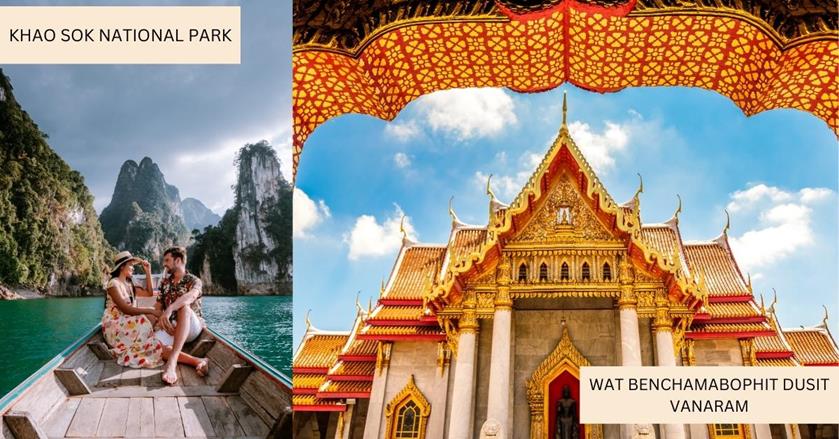
Bangkok for 3 days
Visit Bangkok for its intoxicating blend of old and new, where ancient temples coexist with bustling markets and towering skyscrapers. The city’s vibrant street life and renowned street food offer an immersive cultural experience.
This is Southeast Asia’s party capital for affordable drinks, lively bars, and clubs open until morning.
Bangkok has three major international airports that have direct flights to many cities in Asia, Oceania, and even Europe. This means that Bangkok is an ideal city to start your 2 weeks in Southeast Asia trip.
Phuket and Krabi or Koh Phangan and Koh Samui for 4 days
The province of Krabi is situated in the Andaman Sea. Apart from Krabi, or known to be the beach paradise, here you can hire tour boats or speed boats stretching you to Phi Phi or the four islands (Poda, Hong, Chicken, and Tup).
You can also bathe and glide on Railey, which is only accessible via a short boat ride.
If you want a more twist on your stay, various activities such as snorkelling, rock climbing, cave exploration, and so much more in Phra Nang and Tonsai Beach.
If you’ve wanted a solitary experience with nature and the line of trees itself, consider heading to the caves of Ko Hong. Surrounding the white sand beach are extraordinary cliffs and the soothing rumble of the waves.
Siem Reap and Battambang for 4 days
Siem Reap and Battambang are perfect for four days. Most people spend only one day in Angkor Wat, but it’s such an enormous place you can get a multi-day pass. On the other hand, you can also see other spots in Siem Reap, such as Pub Street, National Museum, and Wat Bo.
From Siem Reap, you can do a day trip to Battambang. It’s known for its bamboo train ride. An old train track has been repurposed by locals, which then became a tourist attraction.
Phnom Penh for 3 days
Phnom Penh is Cambodia’s capital and is rich in history and culture. This is the best place to learn about Cambodia’s dark history during Khmer Rogue. You can visit the Choeung Ek Genocidal Center and Tuol Sleng Genocide Museum (S-21 Prison).
You can also see the Royal Palace, Silver Pagoda, National Museum, Wat Phnom, and the Central Market with three days in hand. Make sure to check out the nightlife at Rue Pasteur No. 51 or Street 308 (aka Bassac Street).
MOVING AROUND : I recommend you start your trip in Thai islands and finish in Bangkok. This is because you now have an option to either fly to Siem Reap or take the bus. From the southern Thai islands, flying ot Siem Reap means you need to connect in Bangkok, while travel by land is just a waste of time. From Bangkok, you can fly or travel by land (much slower) to the islands. From Siem Reap, you can fly to Phnom Penh or take a 6-hour bus or minivan ride.
Itinerary #2: Cambodia and Vietnam
Cambodia and Vietnam are two great destinations in Southeast Asia to combine. These two countries share a land border, and both places are rich in history, have fun beaches, and are affordable. If you only want to see Vietnam, have a read on 2 weeks in Vietnam itinerary .
Start your trip in Siem Reap and go east to Phnom Penh, then cross the border to Ho Chi Minh. From there, you can travel by land or fly to Da Nang to end your trip.
On the other hand, instead of South Vietnam, you can do the northern region . This means that you will fly from Sihanoukville or Phnom Penh to Hanoi or Da Nang and finish your trip either in Hanoi or in Da Nang.
This itinerary is suitable for people who love history but also want to do some water activities. These two places are also super ideal if you’re on a budget because Vietnam and Cambodia are Southeast Asia’s two most budget-friendly countries.

Siem Reap for 3 days
Go to Siem Reap to witness the awe-inspiring Angkor Wat, the largest religious monument in the world, and explore the ancient ruins of the Khmer Empire.
Besides temples, indulge in vibrant night markets, savour delectable Cambodian cuisine, and experience the rich culture through traditional Apsara dance performances.
Phnom Penh for 2 days
Phnom Penh is the place to go to immerse yourself in Cambodia’s rich history and culture. The city, nestled at the confluence of three rivers, boasts iconic landmarks such as the Royal Palace and Silver Pagoda.
The National Museum offers insight into Cambodia’s ancient history, while the Tuol Sleng Genocide Museum and Killing Fields are poignant reminders of its recent past.
Sihanoukville and Koh Rong for 3 days
Nearing beaches and coastal views, Sihanoukville has got to be the perfect venture for lovers of the environment. It has tropical islands and mangrove jungles. Aside from sightseeing and soaking on the beaches, the nightlife is consistently wild on this side of Cambodia.
Beach, waterfalls, national parks, you name it, Sihanoukville offers any adventure to each traveller and guest. Accommodations are affordable, and the restaurant is rich in seafood, perhaps making this place worth visiting.
To make your memorable more exciting, Koh Rong, an island just outside the province of Sihanoukville , is known for its sandy coves and coral reefs. The island is perfect for a getaway trip away from modern life while engaging in many water activities.
Ho Chi Minh City for 2 days
Ho Chi Minh City, formerly known as Saigon, with its dynamic energy and rich history. The city’s streets are filled with motorbikes, street vendors, and aromatic food stalls. E xplore the War Remnants Museum and Cu Chi Tunnels for insights into the Vietnam War.
The French colonial architecture, including the Notre Dame Cathedral, is a great start. Don’t miss the lively markets like Ben Thanh, and indulge in the city’s burgeoning culinary and coffee scene. You can do all these in just two days if you combine Cu Chi Tunnels with a night or city tour.
Da Nang, Hoi An, Hue for 5 days
Da Nang City, a coastal gem in Central Vietnam, offers pristine beaches, such as My Khe Beach, and stunning natural wonders, like the Marble Mountains. The city’s modernity is showcased through its towering skyscrapers, plus the iconic Dragon Bridge.
You can plan a day trip to the ancient town of Hoi An , and the imperial city of Hue provides cultural depth. Da Nang, or Central Vietnam, is the perfect place to finish your trip because you can enjoy the beach and be lazy on the last few days of your vacation.
MOVING AROUND : If you begin your trip in Siem Reap, you can take a bus or private transfer to Phnom Penh. You can also fly, which is quick, but you’ll have to arrive at the airport early anyway. From Phnom Penh, take the bus to Sihanoukville. There’s also a bus from Sihanoukville to Ho Chi Minh City. You will have to get off the bus to present your evisa and get a stamp exit from Cambodia and entry to Vietnam. Back to your bus, you will head to Ho Chi Minh City (Saigon). Da Nang is over 12 hours bus ride from Saigon, so it’s best to take a domestic flight.

Or do – Da Nang, Hoi An, and Hue for 3 days
Instead of spending 5 days in Central Vietnam, you can plan a 3-day trip and then combine a 5-day trip in the north.
Hanoi, Halong Bay, and Sa Pa for 5 days
If you rather explore northern Vietnam, you can fly to Hanoi from Sihanoukville to Hanoi. You can explore Hanoi, Halong Bay, and Sa Pa from there. But you must plan your itinerary carefully to make sure you cover all 3 locations.
Hanoi, the capital of Vietnam, is a city where ancient traditions blend with a modern touch. Wander through the Old Quarter’s bustling streets and markets, or find tranquillity at Hoan Kiem Lake.
You can plan a day trip to Halong Bay from Hanoi, but I recommend you stay at least one night on a cruise there. Then, once you’re back in the city, you can visit Sa Pa next, see the rice fields, and go hiking. I also prefer to have Halong Bay as the last place to visit since it’s a more relaxing location.
Finish your visit to northern Vietnam by making sure that you dine and try authentic pho, bun cha, and Vietnamese coffee.
Itinerary #3: Vietnam and Thailand
This 2 weeks in Southeast Asia itinerary is perfect for people who are visiting the region for the first time . Vietnam and Thailand have a perfect balance of history, culture, food, and beautiful beaches.
Start your holiday learning about the history, culture, and food of Vietnam. I would recommend you don’t plan on spending too much time doing water activities here because you can do that in Thailand.
After Vietnam, head to Thailand, where you can continue immersing yourself in culture and food, plus enjoy the beach and water activities on this country’s pristine coastline.

Hanoi and Halong Bay or Sa Pa for 5 days
Fly into Hanoi and spend your days learning about its history and booking a night or two to Halong Bay or Sa Pa. Go to Halong Bay if you want to do kayaking, cruising, and other water activities.
Head to Sa Pa to learn about the native people of Indochina, see rice paddies and go hiking with the locals.
If you go to Halong Bay, you can take a short flight from there (Hai Phong Airport) to Da Nang. But from Sa Pa, you must travel back to Hanoi to get on the flight to central Vietnam.
Hue, Hoi An and Da Nang for 3 days or Ho Chi Minh City
Three days is a tight schedule for central Vietnam, but it’s doable. It’s a mixture of culture, history, and scenic trips. You can easily combine Hue and Hoi An for a full-day trip. But if you rather see the south of Vietnam, go to Ho Chi Minh City from Hanoi or Halong Bay instead.
Whatever you choose shouldn’t be a problem. Both Da Nang and Ho Chi Minh City have flights to Bangkok. More flights are available from HCMC, but there are plenty from Da Nang too.
Bangkok is such a wild place for many reasons. It’s a city where young backpackers who love to party, cultural enthusiasts, history lovers, and foodies can co-exist and enjoy the same place. Want to party? Go to Khao San Road, If you want to see temples, head to the Grand Palace and Wat Arun.
Would you prefer to see more culture and try local dishes ? Book a boat trip to Damneon Saduak Floating Market or roam through Samut Prakan Ancient City.
You’re now approaching the best part of this itinerary, where you can spend hours on the beach and enjoying the sun. Choose between Phuket and Krabi or Koh Phangan and Koh Samui.
Go to Phuket and Krabi if you prefer a bigger town with lots of things to do but also allows you to lie on the beach and read a book . These are also ideal destinations if you’re travelling with children or as a family.
On the other hand, Koh Phangan and Koh Samui are popular with backpackers and young travellers, perfect for those who want to enjoy the beach, party all night, and go on boat tours.
Both places have plenty of water activities though, but the Phuket area also has some hiking trails unavailable in Koh Phangan.
MOVING AROUND : Arrive in Hanoi. From there, you can reach Halong Bay by bus, private transfer, or by plane. Leaving nothern Vietnam, it’s best to take a domestic flight to central or south of Vietnam. You can reach Thailand by flying to Bangkok. And from Bangkok, you must book a plane to either Phuket or Koh Samui.
Itinerary #4: Philippines and Indonesia
2 weeks in Southeast Asia are well-spent in the Philippines. The Philippines is such a fun region to visit for water activities. Wherever you are coming from, visit from November to February when the weather is cooler and there is less chance of rain.
This is the peak season, so expect some crowd, especially during Christmas.
T his itinerary is perfect for travellers who enjoy the beaches, culture, and outdoor activitie s. In the Philippines, you can go see the marine beauty of Southeast Asia. While in Indonesia, you can go hiking and then finish the trip by soaking up the stunning beaches of Bali.
When you arrive in Manila, spend a day or two to settle down and get through your itinerary again. Perhaps you need to buy essentials such as a sim card with mobile data or book hotels or domestic flights.
READ: 2 weeks in the Philippines or our 2 weeks in Indonesia

Boracay or Cebu or Bohol for 3 days
From Manila, take a flight to Boracay. There are two airports near the island: Kalibo and Caticlan. Kalibo Airport is about an hour’s drive to the port that takes you to Boracay Island. Caticlan Airport is right at the port, where you can catch the ferry to Boracay.
Boracay is popular for its fine white sand beach and crystal clear water. It’s also a spot for snorkelling, diving, jet ski driving, and more. Boracay is also the party island of the Philippines. Spending about 3 days here is a sweet spot.
On the other hand, you can go to Cebu and Bohol instead . The beaches are not as beautiful, but there are lots of scenic places to check out, such as Chocolate Hills, Tarsier Conservatory Park, and the Turtle Sanctuary in Panglao.
Go choose Boracay if you like to party and want to see one of the most beautiful beaches in Southeast Asia. Head to Cebu if you’re a nature lover and prefer a less busy place.
Coron or El Nido for 3 days
Next, you can take a flight from Cebu to Palawan. Now, there are two ways to explore Palawan: from north to south or the other way around. If you want to see the underground river, you want to fly to Puerto Princesa. But if you want to visit Coron first for the beautiful reefs, diving spots, and famous WII shipwreck, fly into Coron.
Coming from Coron , you can spend about 2 days here, and then you can take a ferry to El Nido – another snorkelling spot loved for the fine white sand beach. Enj oy 2 days here. For the final leg, head to Puerto Princesa or Sabang, where you can visit the Underground River.
If starting from Puerto Princessa, reverse the itinerary above. You can fly both from Coron and Puerto Princesa directly back to Manila.
East Java for 3 days; Mount Bromo or Mount Ijen
Choose between Mount Bromo and Mount Ijen; both are located in Surabaya. Mount Bromo is more popular, and Mount Ijen is a bit more challenging and requires an overnight stay along the trail.
So, go for Mount Ijen if you want some adventure, but if you’re after a scenic view, Mount Bromo is the place to go.
Bali for 4 days
Bali Island, a tropical paradise in Indonesia, is known for its stunning beaches, lush rice terraces, and vibrant coral reefs. The island’s rich cultural heritage is showcased through its ancient temples , such as Uluwatu and Tanah Lot, and traditional dance performances.
Ubud, the cultural heart, offers art, yoga, and wellness retreats. Adventurers can go surfing, diving, and trekking.
Four days here can be a little too short because there are loads of things to do. But with good planning, you can visit 2 cities and still have an extra day to just chill at the beach. If you only want to see Bali, we have 2 weeks in Bali itinerary .
MOVING AROUND : When you fly into Manila, hop on a domestic flight to Boracay (Caticlan) or Cebu. From Cebu, you can get on another plane to reach Palawan (fly to Coron or El Nido). When leaving the Philippines, you have to connect in Manila to reach Surabaya. To get ot Bali, there are lights from Surabaya directly yo Bali (Denpasar).
Itinerary #5: Singapore and Malaysia
This is my favourite itinerary for 2 weeks in Southeast regarding a perfect mixture of rugged and comfortable . It’s pretty easy to travel between two countries since they share a land border and direct flights.
Malaysia offers a classic Southeast Asia experience with its diverse culture, language, and food. On the other hand, Singapore offers fantastic shopping malls, skyscrapers, and ease of travel.
Challenge yourself by going on adventures in Malaysia, where you can visit Penang, Langkawi, and even the Cameron Highlands. Then, find your comfort in the bustling city of Kuala Lumpur and Singapore if you enjoy shopping and modern architecture.
Our compilation fo travel itineraries for 2 weeks in Singapaore and Malaysia will be perfect for you or the 2 weeks in Malaysia post.

Singapore for 3 days
Arrive in Singapore, which is home to the best airport in the world – Changi Airport. It is such a busy hub, yet it offers comfort. Many flights are coming here, so you shouldn’t have difficulty getting a direct flight to Singapore from anywhere in the world.
In just 3 days, you can visit Marina Sands, Gardens by the Bay, Singapore Botanic Gardens, Universal Studios, see the remarkable Merlion, and enjoy the food at Maxwell Food Centre for hawkers stands.
Kuala Lumpur for 4 days
You can take a bus from Singapore to Kuala Lumpur, which is a 5-hour drive. You can also fly, but it might cost more.
Kuala Lumpur is known for its stunning skyscraper called Petronas Twin Towers – a beautiful spot for a panoramic view of the city and the Strait of Malacca. You can also go for a day trip to Genting Highlands and Port Klang.
It is a melting pot of cultures with tasty dishes from various regions in Asia . The city’s culinary scene reflects its diversity, offering a mouthwatering array of Malay, Chinese, and Indian cuisine. Don’t miss the bustling markets, trendy shopping malls, and vibrant nightlife.
Penang for 3 days
Penang Island, often called the “ Pearl of the Orient ,” is a cultural kaleidoscope in Malaysia. The island’s capital, George Town, is a UNESCO World Heritage site, boasting a rich colonial history, stunning temples, and vibrant street art.
Penang’s street food, influenced by Malay, Chinese, and Indian cuisines, is legendary. The island’s picturesque beaches and lush green hills complement the cultural treasures, making Penang a diverse and captivating destination.
Langkawi for 4 days
Langkawi Island, often dubbed the “ Jewel of Kedah, ” is a tropical paradise in Malaysia. With its pristine beaches, crystal-clear waters, and lush rainforests, Langkawi is perfect for relaxation and adventure.
The island’s cable car and Sky Bridge offer breathtaking views of the surrounding archipelago.
This island is duty-free. This means it’s more affordable than any place or city in Malaysia, especially regarding alcohol and imported brands. Apart from that, there are also mangroves to visit that you can kayak through or do exciting water activities such as parasailing and boat tours.
MOVING AROUND : From Singapore to Kuala Lumpur, you can either take the bus or fly. You can reach Penang from KL by bus or plane, Then from Penang to Langkawi, you can take a 4-hour ferry or book a domestic flight.
Itinerary #6: Thailand and Laos
If you only have 2 weeks in Southeast Asia, can you blame a person for wanting to visit Thailand?
This itinerary is perfect for people who want to do lots of hiking, thrilling activities, and be around nature . Northern Thailand has some fantastic hiking trails, while Laos offers incredible forests and exciting excursions such as wild swimming, ziplining, and water rafting.
Crossing the borders between Thailand and Laos is quite straightforward as well . Apart from taking a short flight, there are lots of land border points that you can cross by bus, motorbike, or even boat.
If you only want to go to Laos, we have an itinerary for 2 weeks in Laos that you can check out.

I have been to Bangkok at least 10x. It’s a mixture of travelling around Thailand and taking a long connection before my next flight. And every time I go there, I always find something new to do. It’s really a fantastic hub for Southeast Asia.
You can visit Bangkok for a blend of traditional Thai culture and modern charm . If you’re into culture, explore the magnificent Grand Palace to immerse yourself in spirituality at temples like Wat Arun.
Shop at bustling markets and contemporary malls where you’ll also find tasty local dishes or unwind with a traditional Thai massage. It’s so easy to spend 3 days in Bangkok or even a week.
Chiang Mai and Chiang Rai for 4 days
It’s time to leave the busy city of Bangkok and find a relaxing atmosphere – to the mountains! Chiang Mai and Chiang Rai, nestled in Northern Thailand, are havens for those seeking relaxation and outdoor adventures.
With a laid-back atmosphere, these cities boast serene temples, lush mountains, and aromatic coffee plantations.
The temperate climate makes activities like hiking and trekking more fun. For people who are into yoga or meditation, there are loads of retreats that you can sign up for. And of course, there are still lots of temples to check out and admire.
Luang Prabang for 3 days
Enter Laos by starting your trip to Luang Prabang. With its gilded temples, saffron-robed monks, and charming French colonial architecture, it’s like a page torn from a fairy tale.
Take a cruise down the Mekong River or hike Mount Phousi for an unforgettable sunset. Finish the day by visiting the night markets for some souvenirs or trying out Laotian delicacies. Don’t forget to head to Kuang Si Falls to enjoy a refreshing dip and go wild swimming.
Vang Vieng for 2 days
Vang Vieng is your gateway to untamed beauty and for those looking for an adrenaline-pumping adventure. Located between the stunning karst landscapes, this vibrant town is a great city escape.
Go on a tubing expedition , which is the number one activity here or ride a hot air balloon for a scenic view of Laos.
Vientiane for 2 days
Vientiane is the capital of Laos, offering a mixture of colonial and modern beauty. Walk along the Mekong River or go on a cruise to see the stunning sunset. You should also visit the beautiful temples like Pha That Luang and Buddha Park.
The city’s culinary scene is very interesting. It’s the Orient cuisine with a French twist . From ancient heritage to lively markets and delectable food, it’s a perfect way to end your 2 weeks in Southeast Asia.
MOVING AROUND : From Bangkok, you can take a train, bus, or fly to Chiang Mai. Flying would be the fastest way, while the bus is the most affordable choice. There are minibuses that will take you between Chiang Mai and Chiang Rai. Then, a combination of a bus and boat from Chiang Mai to Luang Prabang, through crossing the Huay Xai. A minivan ride or train from Luang Prabang to Vang Vieng. Then Vang Vieng to Viantiane is a short minivan ride.
Itinerary #7: Borneo
When thinking of 2 weeks in Southeast Asia, Borneo doesn’t really come up as the first destination in mind. However, it’s definitely wroth a visit.
Borneo is divided into three countries; Malaysia, Brunei, and Indonesia. This is a great itinerary for travellers who love nature and want to explore Southeast Asia through hiking, visiting national parks, and seeing wild animals.
One thing you have to remember, though is Borneo is a tricky place to visit.
If you go during the dry season, you’re most likely able to enjoy the hike without getting on muddy trails, and the weather is cooler, but it also means the colours are not too vibrant.
If you come during the rainy season, the forest is more alive, but there’s a chance the hiking trails are closed due to mudslides.
The best time to go is at least a month after the rainy season . During this time, the forest is still lush green, but the soil has likely dried up, and the trails are open to the public again.

Sandakan for 3 days
Sandakan is where you want to go if you want to see Proboscis monkeys, orangutans, and other wild animals from Borneo. There’s also a turtle sanctuary which is perfect for visiting in October since it’s the “setting off to the water” season for baby turtles.
You might have to arrive in Kuala Lumpur or Kota Kinabalu, then take a bus or fly to Sandakan.
Kota Kinabalu for 3 days
If you’re ready to hike, Mount Kinabalu is the first place to go. It is home to various flora and fauna and home to many wild orangutans.
It’s recommended to stay at least 1 night here and must come with a local guide for safety reasons. It can be done in one day, but you must start early as it can take a total of 12 hours or more, and you don’t want to be caught in the dark.
After that, you can enjoy Kota Kinabalu town proper, where you can visit historical sites and cultural locations such as Mari Mari Cultural Village and Sabah State Museum. Finish your visit by catching a sunset at Tanjung Aru Beach.
Labuan for 3 days
Labuan is a federal territory of Malaysia. This means they have their own government and policy but generally align with Malaysia. It’s an island, so you can either reach it by ferry or take a quick flight. Labuan is rich in history and exciting water activities.
Explore World War II relics, frolic on pristine beaches, and revel in thrilling water sports. If you like diving or snorkelling, don’t miss a trip to the Labuan Marine Park and visit Kuraman, Rusukan Besar, and Rusukan Kecil.
Brunei for 3 days
Continue heading down south and reach the country of Brunei. Keep in mind, this is a Muslim country; hence alcohol is not sold here and can easily be found.
Most attractions are located in the capital city, Bander Seri Begawan. But if you want to explore nature, go to Bukit Ladan Forest or Labi Forest.
Sarawak for 2 days (Sibu or Kuching)
For your final place on the itinerary, the Sarawak region of Brunei is the destination. Sarawak is the dazzling jewel of Borneo. With its lush rainforests, stunning caves like Niah and Mulu, and enchanting tribal cultures, Sarawak is an adventurer’s destination .
If you’re visiting during the right season, you can attend the Sarawak Rainforest Music Festival. During this event, you can get up close with orangutans and savour the rich flavours of the local cuisine.
From longhouse stays to jungle treks, Sarawak is an amazing place to finish your 2 weeks in Southeast Asia adventure.
MOVING AROUND : You most likely have to arrive in Kota Kinabalu then catch another flight to Sandakan or take the bus. You can also start the trip in Kota Kinabalu, then go to Sandakan, then to Labuan on a flight. From Labuan, there’s a ferry that will take you to Brunei. Decide if you want to go to Sibu or Kuching. In that way, you’ll know which city to fly into or if you can take a bus..
SUMMARY OF 2 WEEKS IN SOUTHEAST ASIA
Southeast Asia is easily one of my favourite regions in the world. It’s affordable, adventurious, rich in culture, offers the best cuisine, and is also an amazing place when it comes to exploring the wild nature.
2 weeks in Southeast Asia might not be enough to see and enjoy all its glory, but it’s a good start. If you find out in that 14-day trip that you enjoyed your time here, this just means you can always come back in the future and go somewhere else.
The final take I want you to get from this post is when choosing where to spend your limited time, make sure the places are near one another or have a direct bus or flight to save your time.
Also, research the weather in each country or island you’re visiting because the rainy season in the Philippines is very different compared to Indonesia, Thailand, and even Vietnam.
TO SAVE THIS ITINERARY, PIN THIS IMAGE BELOW:

Nomadic Matt's Travel Site
Travel Better, Cheaper, Longer
Southeast Asia Itineraries: From 2 Weeks to 3 Months
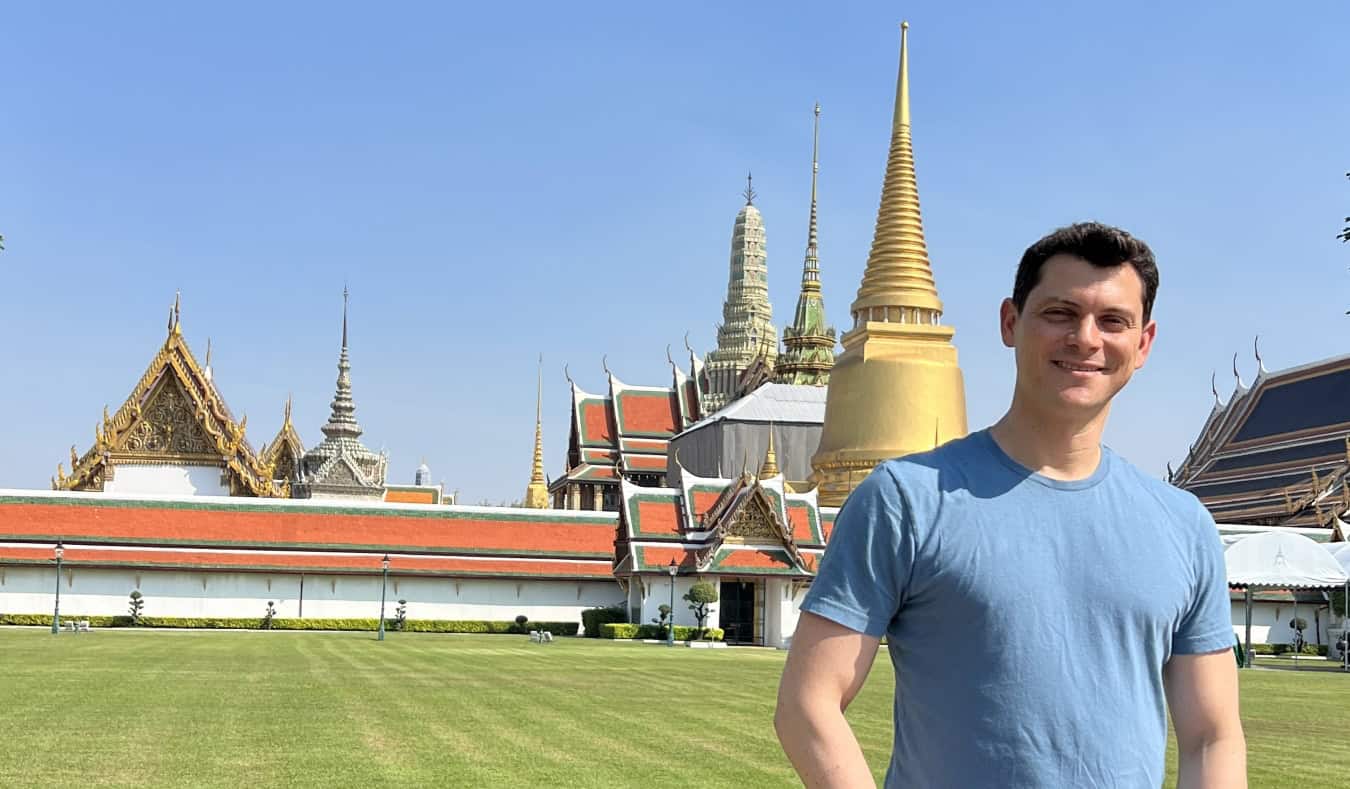
Itinerary planning is a complex beast. There’s no single best route out there. Everyone has different travel desires, goals, and needs (let alone budgets). It’s why I’ve always shied away from discussing itinerary planning for long-term travel .
Showing someone how to plan a trip is one thing, but actually planning a trip for someone else is tricky, because I don’t know what they want or like.
Because, at the end of the day, there is no such thing as a perfect itinerary. You have to go where you want to go and, while suggested routes can help inspire you, at the end of the day, only you can plan the best route for you.
However, that can feel overwhelming, especially when you’re trying to tackle an entire region like Southeast Asia . So, in this post, I’ll provide a few suggested itineraries to help you conquer this fantastic region.
For the two-week itinerary, I’ll break things up by day, but as we get into one-month and three-month territory, you’ll have a lot more flexibility with your time, so I’ll give rougher estimates of how to spend it.
After all, part of the beauty of travel is keeping yourself open to serendipitous moments and experiences!
Table of Contents
Southeast Asia Two-Week Itinerary
Southeast asia one-month itinerary, southeast asia three-month itinerary, the best time to visit southeast asia, what visas do you need for southeast asia.
If you only have two weeks in Southeast Asia, I suggest sticking to just 1-2 countries so that you don’t spend all your time in transit. You’ll also be able to better soak up the atmosphere if you’re not trying to cram too much in. With a more limited time frame, just accept that you’ll have to leave some things to look forward to on your next trip!
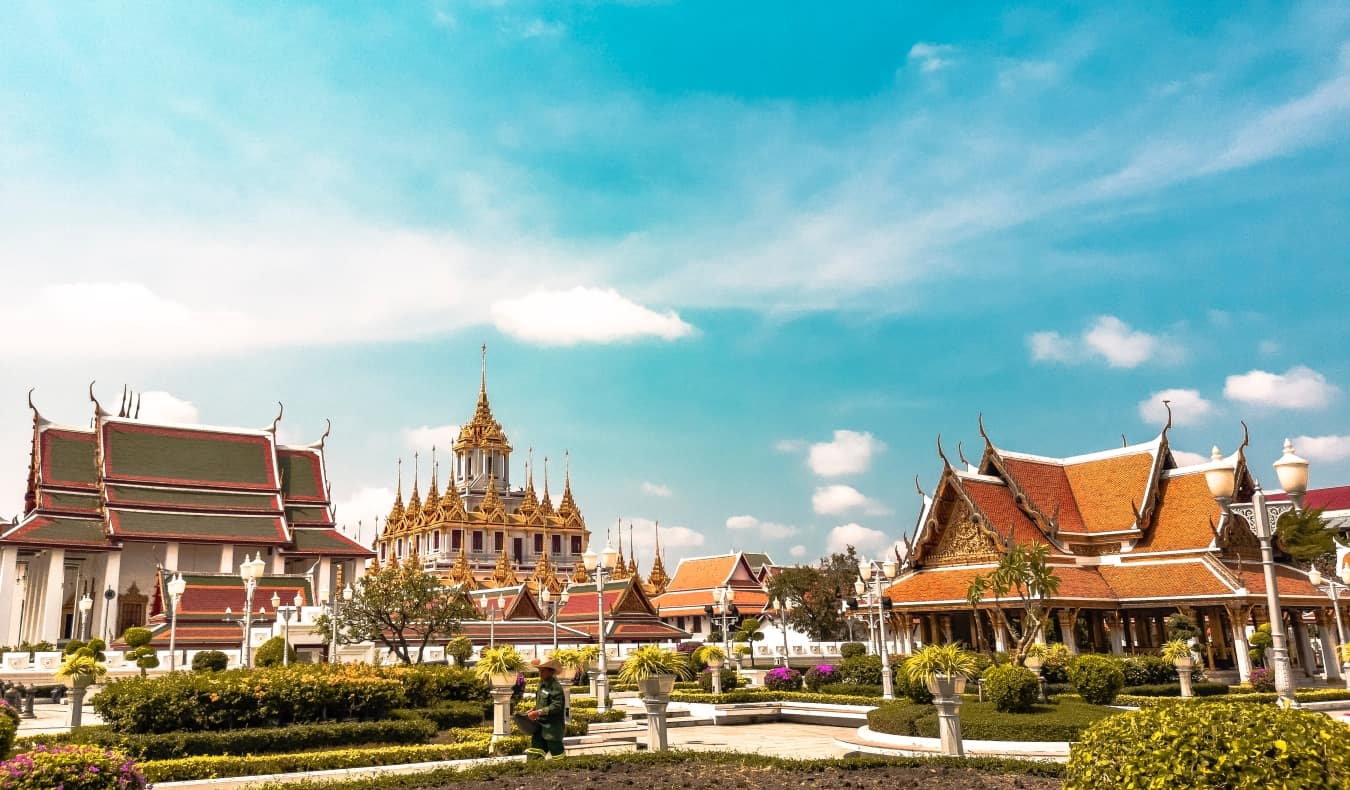
Take a walking tour to get your bearings and get local recommendations from the guide. Bangkok Walking Tours or Free Bangkok Walks are two great free options — just remember to tip your guide at the end!
For a more in-depth tour, you can take a city highlights tour , on which your guide will take you through some of Bangkok’s major attractions.
While the famous Damnoen Saduak floating market just outside of Bangkok exists mostly for the benefit of tourists, I still like visiting it. The tours that go there leave early in the morning and last about half a day. It’s not a great place to shop (prices are much higher than elsewhere), but the area is good for photography and eating.
WHERE TO STAY IN BANGKOK : Lub d Siam – This is a very popular spot for backpackers looking to stay somewhere other than the infamous party district that is Khao San Road. The hostel is modern, the rooms are spacious, and there are plenty of common areas to socialize in, including a café/bar.
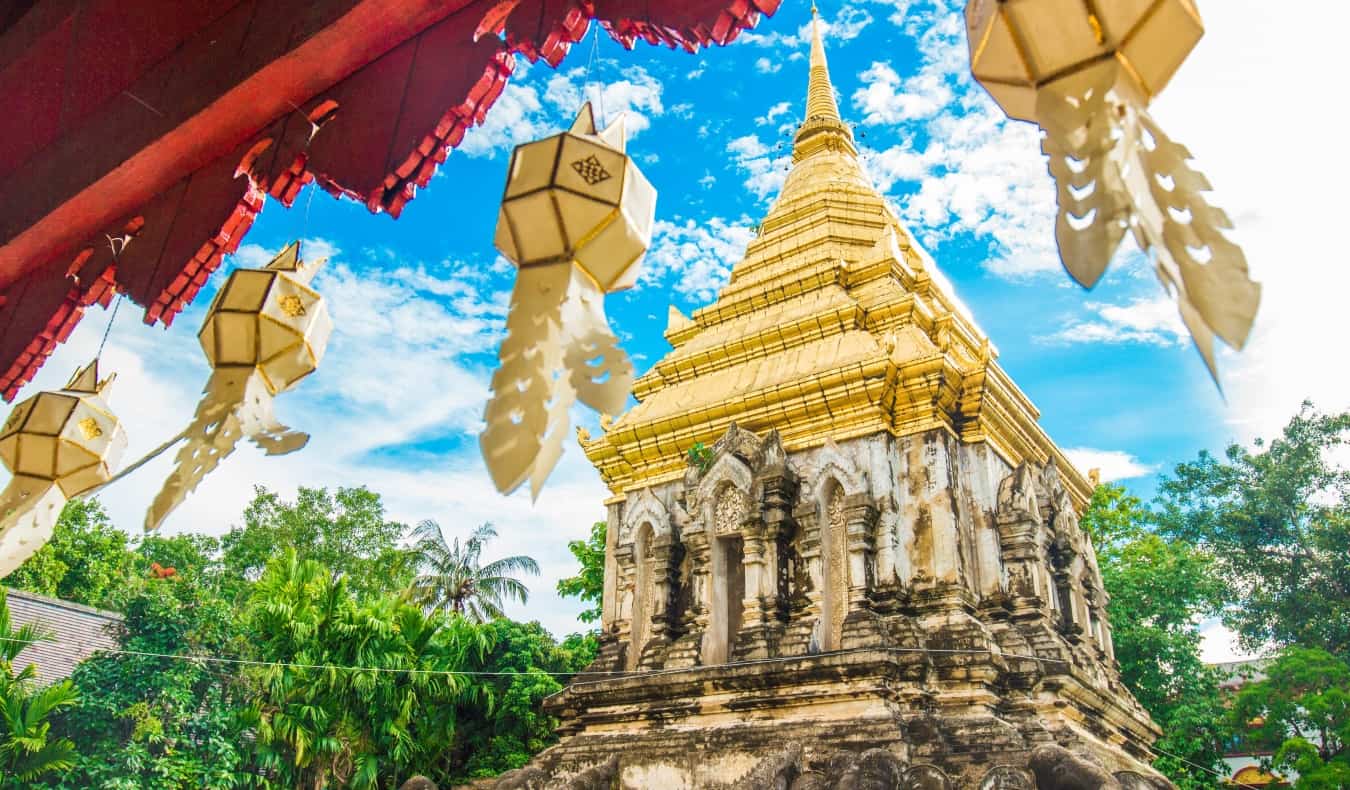
Wat Phra That Doi Suthep is Chiang Mai’s most famous temple (the pagoda supposedly contains relics of the Buddha himself). It offers beautiful views of the surrounding area and, at 6pm each day, you can watch the monks chant. The main other temples are Wat Chiang Man, Wat Phra Singh, Wat Suan Dok, Wat Chedi Luang, and Wat Jet Yot. Walking tours that visit several of these main temples start at 500 THB.
If you want to see elephants, a good way to get up close with them is to volunteer at or visit Elephant Nature Park. This sanctuary near Chiang Mai rescues abused and injured elephants from around the country. It’s a phenomenal place, and after coming here, you will know why you should never ride an elephant. A one-day visit costs 2,500-3,500 THB for adults.
WHERE TO STAY IN CHIANG MAI : Hostel Lullaby – This fantastic hostel in the heart of Chiang Mai was even voted the best in Thailand. Besides the comfortable facilities, there are a ton of perks here, including free bikes, free breakfast, and free Thai boxing, cooking, and yoga classes.
Days 7-9: Chiang Mai to Bangkok Here you have a few options: stay longer in Chiang Mai to do more jungle trekking; head up to Chiang Rai to see the famous White Temple; or take the long way back down to Bangkok, stopping for a night in each of Thailand’s ancient capitals (Ayutthaya and Sukhothai) or spending some time in one of the national forests, such as the incredible Khao Yai National Park .
Once back in Bangkok, you can either head into Cambodia to see Angkor Wat if you’re ambitious, or just hang out in Bangkok for a few more days before your flight home.
If you choose to go to Angkor Wat, here are my recommendations:

Be sure to visit the Landmine Museum. Landmines have devastated the country, maiming and killing thousands. They still cause destruction today, as remaining mines from the Vietnam War (which spilled over into Cambodia) are discovered every year. The museum has an in-depth exhibit that is very worthwhile, as it gives perspective on their use, dangers, and efforts to remove them.
Also, spend a day at Angkor Wat , the ancient site that was the center of the Khmer Empire that once ruled most of Southeast Asia. The temple was built in the 12th century and covers over 500 acres.
While a single-day visit can cover the main temples, this is an amazing site to explore, so I highly recommend two days (at least).
You can hire a tuk-tuk for the day or rent bicycles and explore on your own. Tuk-tuks have room for 3-4 people, making it a cheap and convenient option if you can split the ride with other travelers. You can also take a full-day guided tour to learn even more from a professional.
Admission is $37 USD per person for a day pass, $62 USD for a three-day pass, and $72 USD for a seven-day pass.
WHERE TO STAY IN SIEM REAP : Mad Monkey – This is a fun, lively, and social hostel with a bar, pool, and lots of tours and organized activities to help you meet people and explore the city.
Day 13: Bus back to Bangkok Take the bus back to the Thai capital, where you can spend the last day of your trip exploring more of the many things to see and do in Bangkok , or just simply hang out, relax, and eat all the delicious Thai food you can before your journey home.
Day 14: Departure day Head off to the airport knowing that you made the most of your two weeks in Southeast Asia. Chances are that you only whetted your appetite for traveling through this amazing region of the world, and you might already be planning your next trip on your way back home!
With one month, you’ll be able to take it a little slower, see more places, and get off the beaten path a bit more. You can add another country and leave more flexibility in your itinerary.
Days 1-3: Bangkok Follow the Bangkok itinerary above, and stay for a few more days if you like! There are endless things to do in Bangkok.
For more recommendations, check out my free Bangkok city guide .
Day 4: Bangkok–Chiang Mai With one month, you can choose to take the day train from Bangkok to Chiang Mai. It’s not only cheaper but a nice way to see the countryside. Sure, you “waste” a day, but you see the countryside, experience how Thais take the train, and can eat from vendors who briefly board at every stop.
The day train remains one of my favorite experiences in Thailand. Just make sure you have a good book as the journey is 10-13 hours long.
Days 5-7: Chiang Mai See the Chiang Mai itinerary above. For more recommendations on things to do, check out my free Chiang Mai city guide .
Days 8-10: Slow boat from Chiang Mai to Luang Prabang, Laos After spending your first week in cities, take a load off and drift down the river on a slow boat. These boats generally take two days, stopping overnight at a guesthouse along the way. It’s a beautiful way to see the scenery and recharge a bit from a busy week.
Alternatively, if you want to save time, you can fly between the two destinations, or skip ahead in this itinerary to Vietnam .
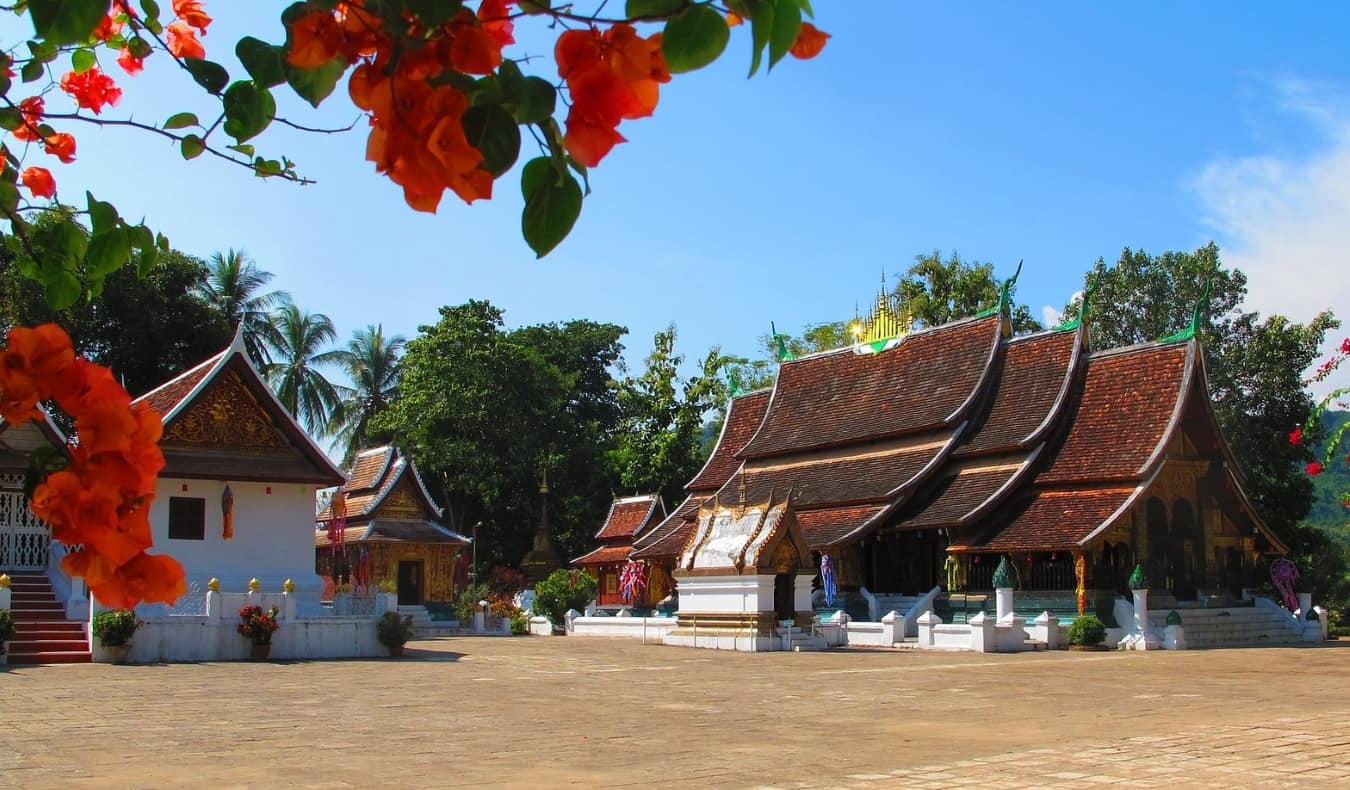
Although it’s small (around 56,000 people live here), there’s a lot to see and do, with dozens of temples, streets lined with French colonial architecture ( this walking tour hits all the highlights and then some ), a bustling night market, river tours , and waterfalls. I came here for three days but ended up staying a week!
Start off with a visit to the “Buddha Caves” (officially, the Pak Ou Caves). They hold over 6,000 Buddha statues that the locals still use for worship. There are standing Buddhas, sitting Buddhas, reclining Buddhas — you name it! You can visit solo or book a guided tour .
While you’re here, don’t miss the iconic Kuang Si waterfalls (you’ve probably seen them on Instagram already). They flow through the limestone-rich jungle and empty into a series of three gently cascading pools. While it’s one of the most popular attractions in the area (avoid the weekends, when it’s super busy), the Kuang Si Falls was also one of the most breathtaking things I saw in Laos.
Other things to do here include:
- The Royal Palace
- Mount Phousi
- Wat Xieng Thong Monastery
- The alms ceremony
- Kayaking the Mekong River
For more things to do, check out my free guide to Luang Prabang .
WHERE TO STAY IN LUANG PRABANG : Downtown Backpackers Hostel 2 – This is a great little hostel with free breakfast, moped rentals, clean dorms, and super helpful staff.
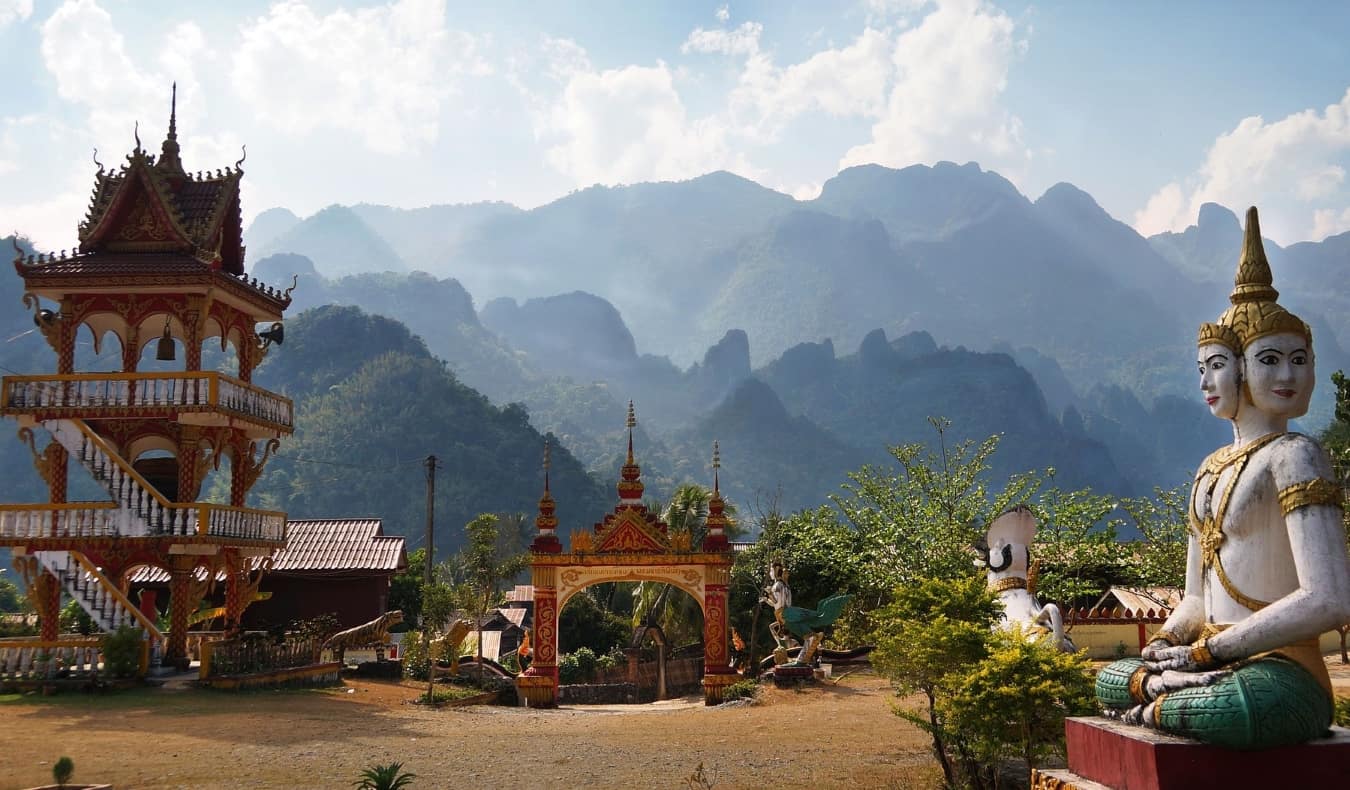
Kick things off with a tubing trip down the river. It’s the best way to relax and stay cool. A tubing and kayaking tour costs around 575,000 LAK.
And if you want to stretch your legs, climb Pha Poak Mountain. It’s only a 30-minute climb to the top, where you’ll be rewarded with an incredible view of the area’s limestone mountains.
Other things to see and do in Vang Vieng include:
- The Golden Cave
- Hot air balloon rides
- The Blue Lagoon
For more things to do, check out my free guide to Vang Vieng .
WHERE TO STAY IN VANG VIENG : Nana Backpackers Hostel – This is a fun, social hostel with a swimming pool, movie room, small gym, and bar with free vodka and whiskey every night from 7pm to 9pm.

Nowadays, the city is a hub for café culture, cheap spas, golden temples, and diverse riverside markets. Much of its historical center has kept its colorful colonial architecture intact too, making it a nice area to stroll around.
Wander the wide boulevards, take in the crumbling mansions, chill out in Chao Anouvong Park, enjoy the flavorful local cuisine (there are a ton of delicious French bakeries here as well).
Make sure you visit Buddha Park, a sculpture park is just 25 kilometers (15 miles) outside of Vientiane. There are around 200 Hindu and Buddhist statues here, all of which appear to be centuries old (they’re not — they were made in the 20th century out of concrete). While not “historic” per se, it’s still worth visiting, as there are all kinds of unconventional designs, including a three-meter (9.8-foot) demon head that you can enter, and staircases from heaven and hell that you can climb. Admission is 15,000 LAK.
You’ll also want to admire the Great Stupa (Pha That Luang). It’s a 44-meter (148-foot) gold-covered stupa (dome-shaped Buddhist shrine) and is the most important monument in the country. Built by King Setthathirat in 1566, its exterior looks like a fortress with high walls. Inside, the walls are covered in Buddhist, floral, and animal imagery. Admission is 10,000 LAK.
Other things to see and do in Vientiane include:
- The COPE Visitor Centre
- Victory Gate (Patuxai)
- Chao Anouvong Park
- Lao Boat Racing Festival
For more things to do, check out my guide to Vientiane .
WHERE TO STAY IN VIENTIANE : Dream Home – This is a fantastic hostel that offers everything you need while staying in the capital. There’s free breakfast, comfy beds, AC, a nightly happy hour at the hostel bar, and a 24-hour reception with friendly staff members.
Days 20-22: Pakse Pakse is the gateway to Laos’ 4,000 Islands (in the Mekong River), so there isn’t a ton to do here other than chill out and relax. It’s a nice place to stop while heading south to Cambodia. Alternatively, you can take a 1.5-hour flight from Vientiane to Phnom Penh to save some time and give you extra days elsewhere.
WHERE TO STAY IN PAKSE : Sanga Hostel – This cozy hostel has super comfortable beds, a restaurant with fantastic home-cooked food (free banana cakes!), and a lovely owner.
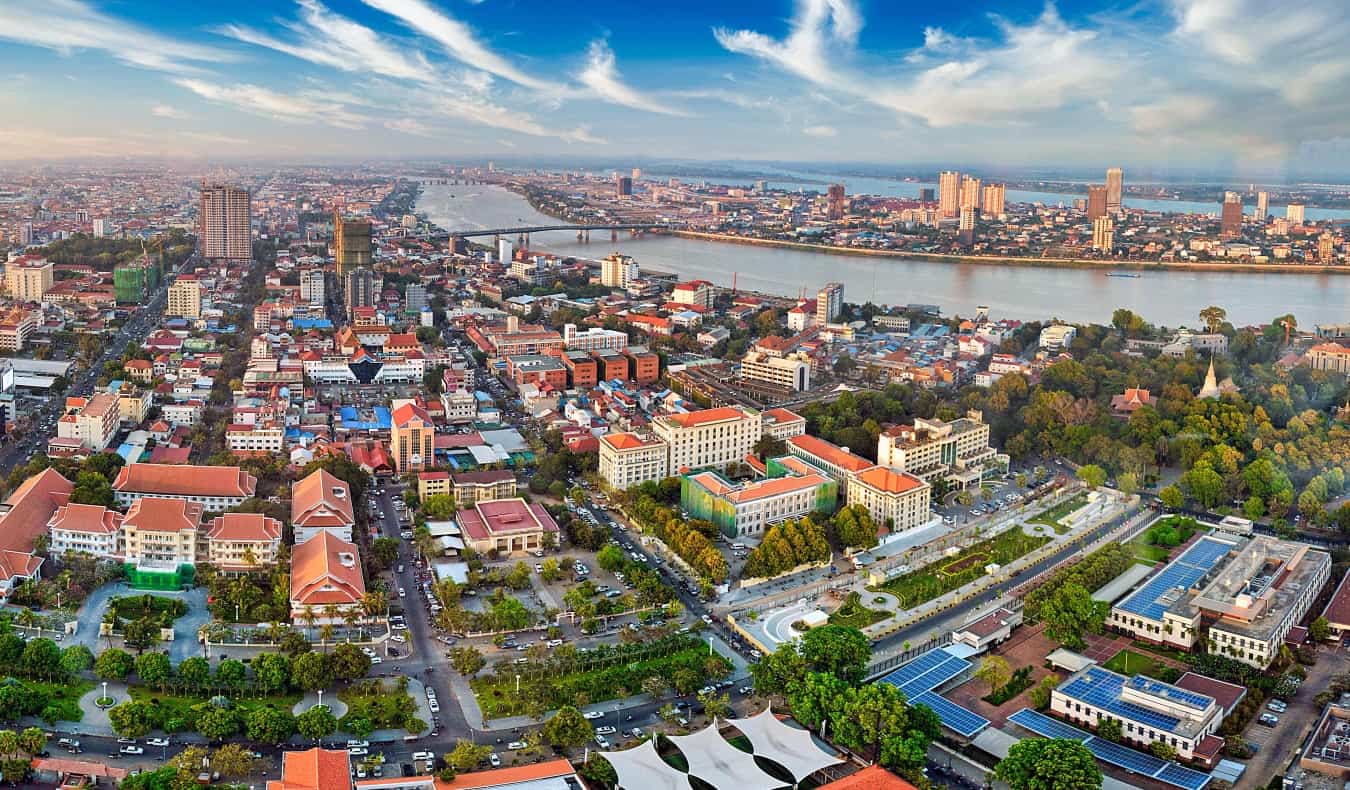
The Royal Palace is home to beautiful flower gardens and the Silver Pagoda, whose floor is made up of more than 5,000 silver tiles; inside is an emerald-covered Buddha and a diamond-covered Maitreya Buddha. The palace also has murals around its outer wall that tell the story of the Ramayana.
On the palace grounds are five stupas, with the two largest to the east containing the ashes of Kings Norodom and King Udung (the two most famous kings of modern Cambodia) and a statue of King Norodom on horseback.
The most important thing to see here, however, is the Tuol Sleng Genocide Museum and the Killing Fields. Tuol Sleng is a former school where the Khmer Rouge interrogated and tortured people in the 1970s. You’ll see rusty beds and torture devices, in sharp contrast to the beautiful trees and lovely jasmine smell in the gardens.
After, head to the Killing Fields. It may not be the most cheerful way to spend an afternoon, but it makes for a hallowed and memorable experience, a testament to the dangers of uncontested power. Admission to the Killing Fields and the Tuol Sleng Genocide Museum is $20 USD. This includes a guided tour so you can get an in-depth look at this haunting place.
For more things to do, check out my guide to Phnom Penh .
WHERE TO STAY IN PHNOM PENH : Mad Monkey – This is a lovely social hostel with a bar, restaurant, beer garden, and swimming pool. They organize all kinds of events and tours, so it’s easy to make friends here.
Days 27-29: Siem Reap Follow the Siem Reap and Angkor Wat itineraries from above.
If you have time, visit Tonle Sap, Southeast Asia’s largest freshwater lake and UNESCO nature reserve. It is 52 kilometers (32 miles) from Siem Reap. Sailing down the river and around the lake gives you a look at how closely Cambodian life is tied to this major waterway. Guided tours to Tonle Sap start at $20 USD.
Day 30: Bangkok Head back to Bangkok for your flight home!
If you have three months to spend, you don’t want to have everything plotted and planned out to the day, like you might want to with the shorter itineraries above. Having flexibility to change plans is a must (and will make your travels much more enjoyable). On a trip of this length, you don’t want to burn yourself out too fast!
With three months, you have enough time to be flexible and still see a lot. I’d recommend rough planning in weeklong chunks.
MONTH ONE: Thailand
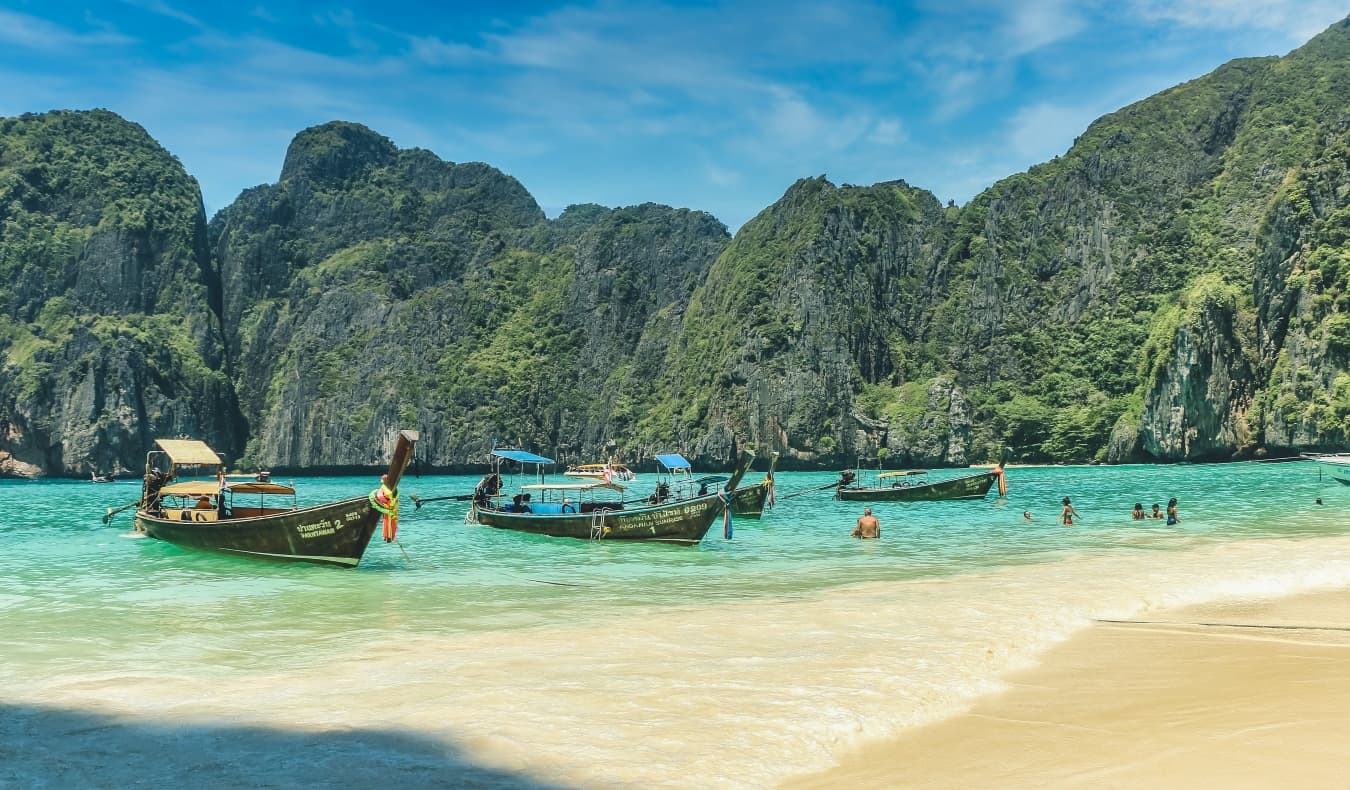
Week 1: Bangkok and Backpacking Kanchanaburi Province Follow the three-day Bangkok itinerary above, and extend your stay by a few days to take things slower and see even more of this vibrant city. You can also do more day trips or even multiday trips to the surrounding region.
When you’ve had your fill of bustling Bangkok, take your time heading north. Kanchanaburi Province is a great place to spend some time, as it’s home to a lush, undisturbed forest, wetlands, and mountains that are perfect for trekking, either on multiday tours or day trips from Bangkok . The area is very biodiverse, with two wildlife sanctuaries: Thung Yai Naresuan, and Huai Kha Khaeng.
However, its history is rather dark. The infamous Death Railway linking Myanmar and Thailand runs through here, which was built during World War II by prisoners of war and civilians. Around 90,000 civilian forced laborers and more than 12,000 Allied prisoners perished in the railway’s construction. The bridge over the River Kwai is also located here, built using POW labor and the subject of both a famous film and a book. While these sights are haunting reminders, they are an essential part of Thailand’s history.
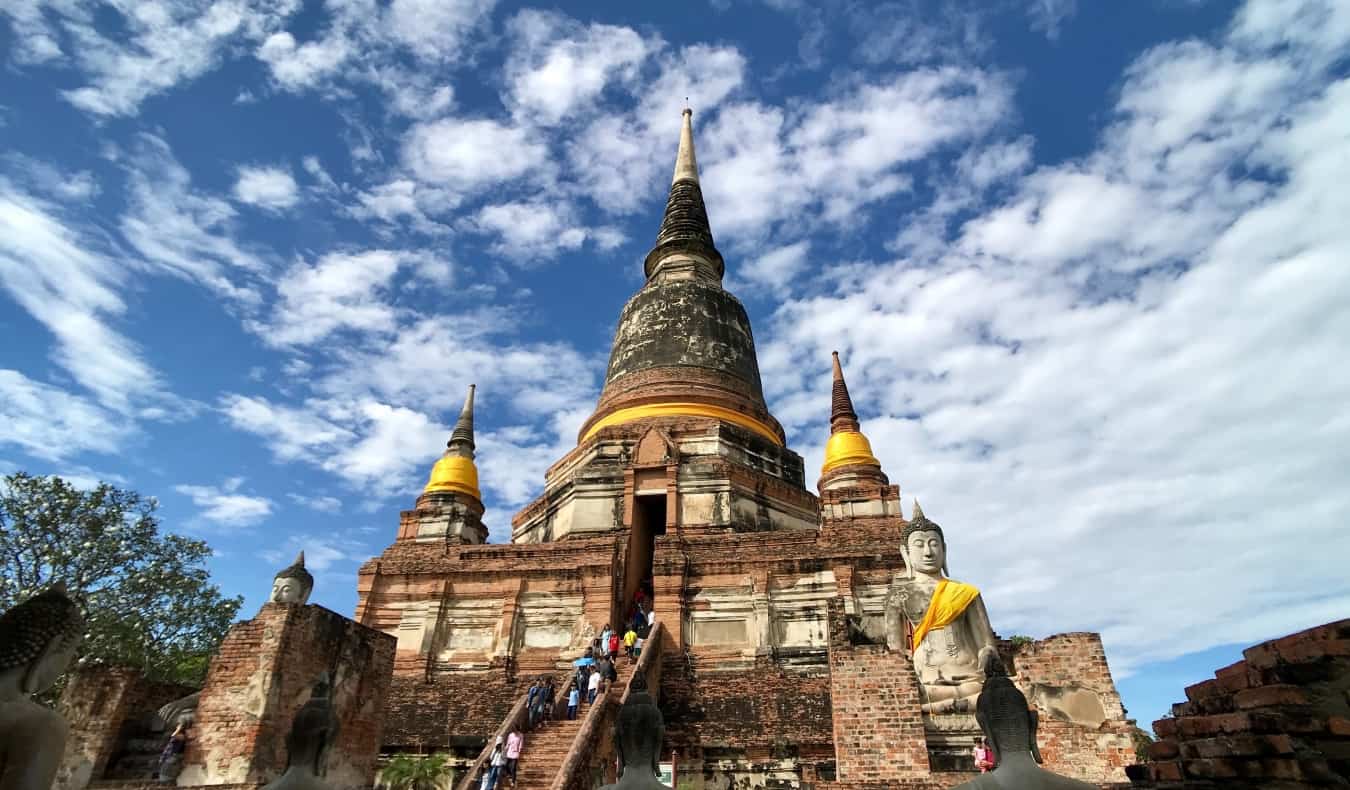
Here are some options to consider for your meandering journey north:
Ayutthaya – Ayutthaya was the capital of Siam from 1350 to 1767, when it was razed by the Burmese during a war. The city’s ruins, with its palaces, temples, monasteries, and statues, form an archaeological park that is now a UNESCO World Heritage Site. It’s about 1.5 hours from Bangkok by train.
You can also visit on a day trip from Bangkok for just 1,105 THB.
Khao Yai National Park – Established in 1962, Khao Yai was Thailand’s first (and one of its best) national park and is now a UNESCO World Heritage Site. It’s visually stunning and empty of tourists but filled with lush flora and fauna, bat caves, and even a few wild elephants. It’s about 2.5 hours north of Bangkok.
There are also day trips to Khao Yai from Bangkok starting at around 2,500 THB.
WHERE TO STAY : Greenleaf Guesthouse – This hostel has the best tour/accommodation deals in the area. Let them know when you’re arriving by train or bus, and they’ll pick you up at the station.
Sukhothai – Sukhothai was the Kingdom of Siam’s first capital city, in the 13th century. There are hundreds of ruined buildings here, including the royal palace and countless temples.
There are actually three ruined cities that make up the UNESCO World Heritage Site, and since they’re a bit spread out, seeing them by bike is a fun way to cover a lot of distance. You can take a full-day or two-hour bike tour with Sukhothai Bicycle Tour .
WHERE TO STAY : Old City Boutique House – This hostel is in a great location, right near the entrance to the historical park. The guesthouse has AC, free breakfast, bike rentals, and friendly owners to help you with whatever you need!
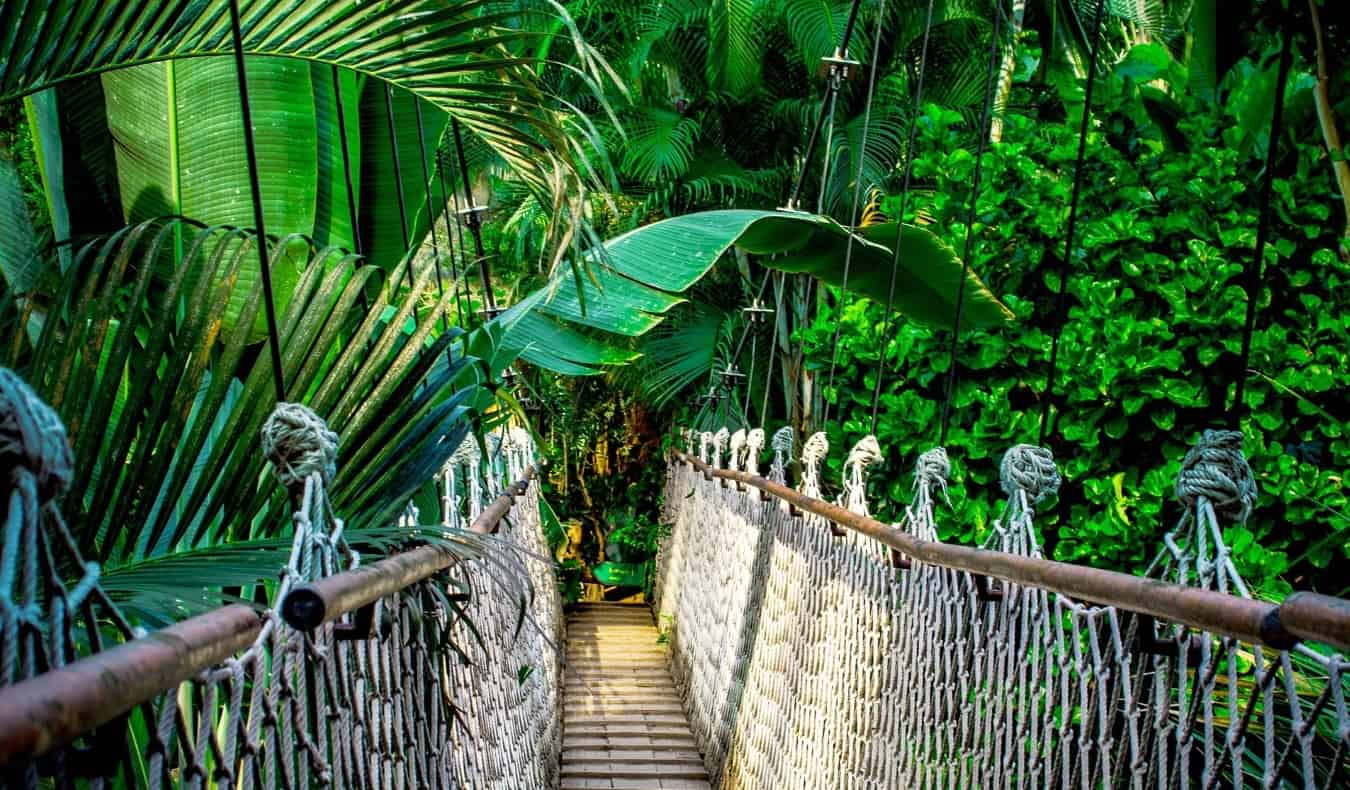
Chiang Mai is the main starting point for all sorts of jungle trekking tours. I like the three-day ones the best, but the longer the tour, the more interesting and secluded places you’ll visit. Be careful with whom you sign up, as many guides simply walk with you and don’t tell you much about the land or wildlife.
Moreover, if you visit a tribal village, make sure that the money stays with the villagers, and that they aren’t being exploited, which unfortunately happens a lot.
If you prefer to do a few different day trips rather than multiday tours, TripGuru Thailand offers full-day tours to Doi Inthanon National Park and the Chiang Dao cave system , among others.
Week 4: Northern Thailand If you want to continue soaking up northern Thailand, a great way to do so is on a motorbike trip. Many people rent bikes and tour the countryside and take in the scenery. This area is particularly popular for a 1–3-day trip. Mai Hong Son Province offers a great loop, starting in Chiang Mai and ending in Pai.
Note: Make sure that if you’re renting a motorbike, you’re comfortable with driving it. And never ever drink and drive. Accidents are incredibly common.
Pai – Pai has grown as a tourist destination in more recent years, but it is still a great place to escape some of the craziness of the larger cities. It’s nestled in rolling green mountains and near incredible hiking trails. Stay on the outskirts of this backpacker town in a lovely little bungalow, rent a bike, traverse the hills, and bathe in the cool waterfalls.
Be sure to take a day trip to the Tham Lot Caves; you can stop off to swim in waterfalls and hot springs on the way.
WHERE TO STAY : The Famous Pai Circus Hostel – This is the best hostel in Pai, with a host of amenities, from air-conditioned dorms, comfortable mattresses, and bamboo bunk beds to an infinity pool, nightly bonfires, a fantastic buffet breakfast, free dinners, and overall, a great atmosphere.
Chiang Rai – Many people visit Chiang Rai on a day trip from Chiang Mai , expressly for the purpose of seeing the White Temple. This intricately designed complex with its reflective pools and shimmering white exterior is designed in the style of a Buddhist temple. However, it’s actually a work of art by Thai artist Chalermchai Kositpipat, and is still currently in the process of being completed.
WHERE TO STAY : Baan Mai Kradan Hostel – This sleek, modern, and centrally located hostel has free breakfast, fast Wi-Fi, comfortable pod-style beds, and plenty of indoor and outdoor common areas to relax in.
MONTH TWO: Laos and Vietnam

Week 5: Slow Boat to Luang Prabang Take the two-day slow boat to Luang Prabang. Once there, follow the Luang Prabang itinerary above, but at a slower pace. You can also spend some time in the surrounding, even smaller villages like Nong Kiew, a sleepy village located a few hours from Luang Prabang. The towering limestone cliffs surrounding it are ideal for experienced climbers, and there are many hiking trails leading to nearby waterfalls and caves. You can take the bus from the city for about 40,000-65,000 LAK.
WHERE TO STAY : Lamorn Guesthouse – This is an incredibly affordable guesthouse located right on the river. The rooms are basic but clean, each with its own private bathroom and air-conditioning.
Week 6: Vang Vieng and Vientiane Follow the itineraries for Vang Vieng and Vientiane above. Then, you can either choose to continue your trip in Laos by heading south to Pakse and 4,000 Islands (in which case, follow the itineraries outlined above), or head on to Vietnam.
If going to Vietnam, you can take an overnight bus to Hanoi or a quick flight from Vientiane. If flying, keep in mind that there are only direct flights a few times a week (otherwise you must connect through Bangkok), so plan ahead if going with that option.
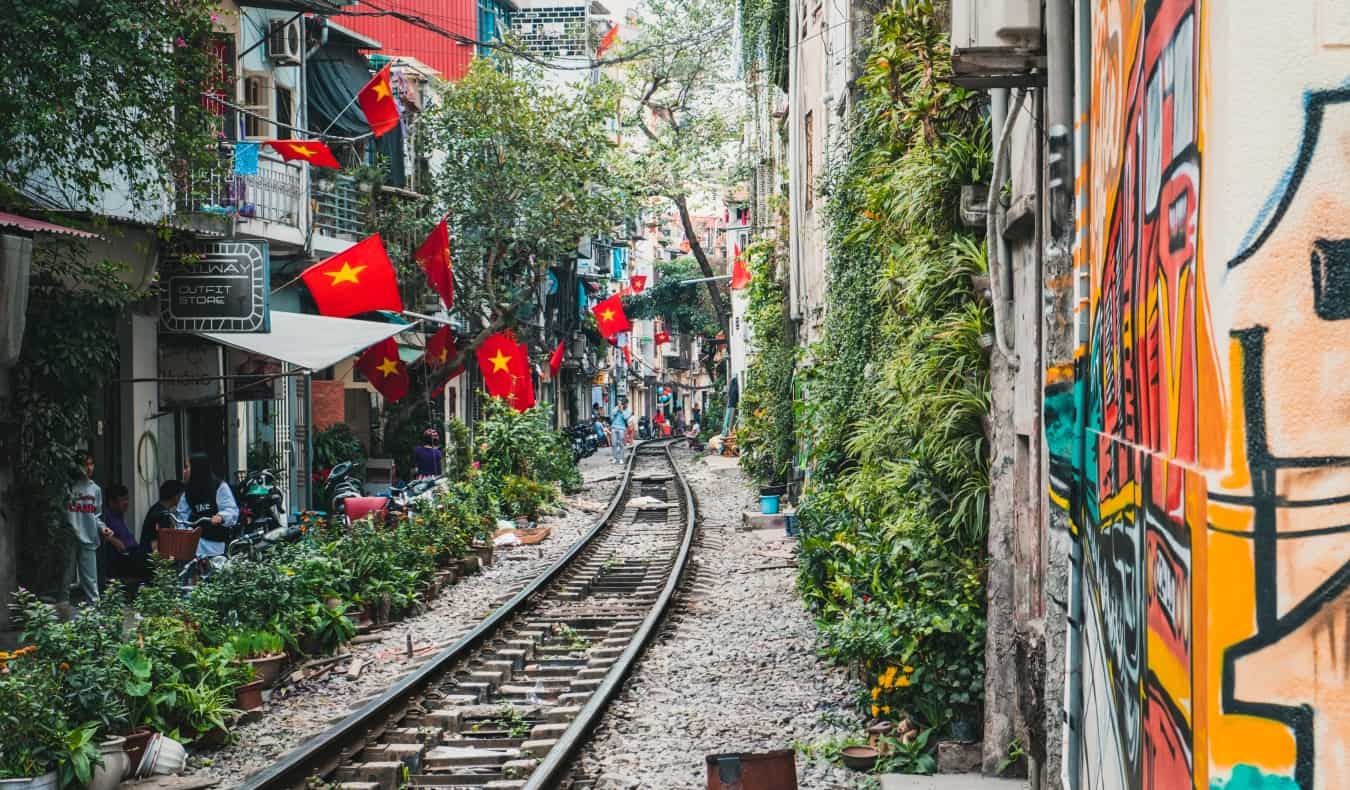
It’s also one of the best places to eat endless bowls of pho, bun cha, or cheap bahn mi from food vendors on just about every street corner.
Start your visit by exploring the narrow streets of the Old Quarter. Its 2,000-year-old streets are a web of shopping opportunities and cheap eateries. There’s also a lot of fascinating Old World architecture that highlights the influence the French had on the area.
Hanoi is also a good base for doing multiday tours to postcard-perfect UNESCO World Heritage Site Ha Long Bay. One of the country’s most popular tourist destinations, the area comprises more than 3,000 islands, all with different activities on offer. Tours here usually last 3-5 days and can include sleeping on a boat or staying on some of the islands around the bay, as well as cave tours and kayaking. If you really want to splash out, take a 3-day luxury cruise .
If you don’t want to do a longer cruise, you can choose a two-day (overnight) cruise or a full-day trip from Hanoi ; however, given that you’re on a three-month adventure, I’d recommend going with the few-day options.
Other things to see and do in Hanoi include:
- The Temple of Literature
- See a water puppet show (an ancient Vietnamese art form)
- Ho Chi Minh Mausoleum
- Dong Xuan Market
- Go on a food tour
- Quan Su Pagoda
For more things to do, check out my guide to Hanoi .
WHERE TO STAY : Little Hanoi Hostel – Located in the heart of the Old Quarter, this hostel has air conditioning, free breakfast, free welcome drinks, and — most importantly — clean, comfy rooms. The staff will help you book tours of the city and surrounding region.
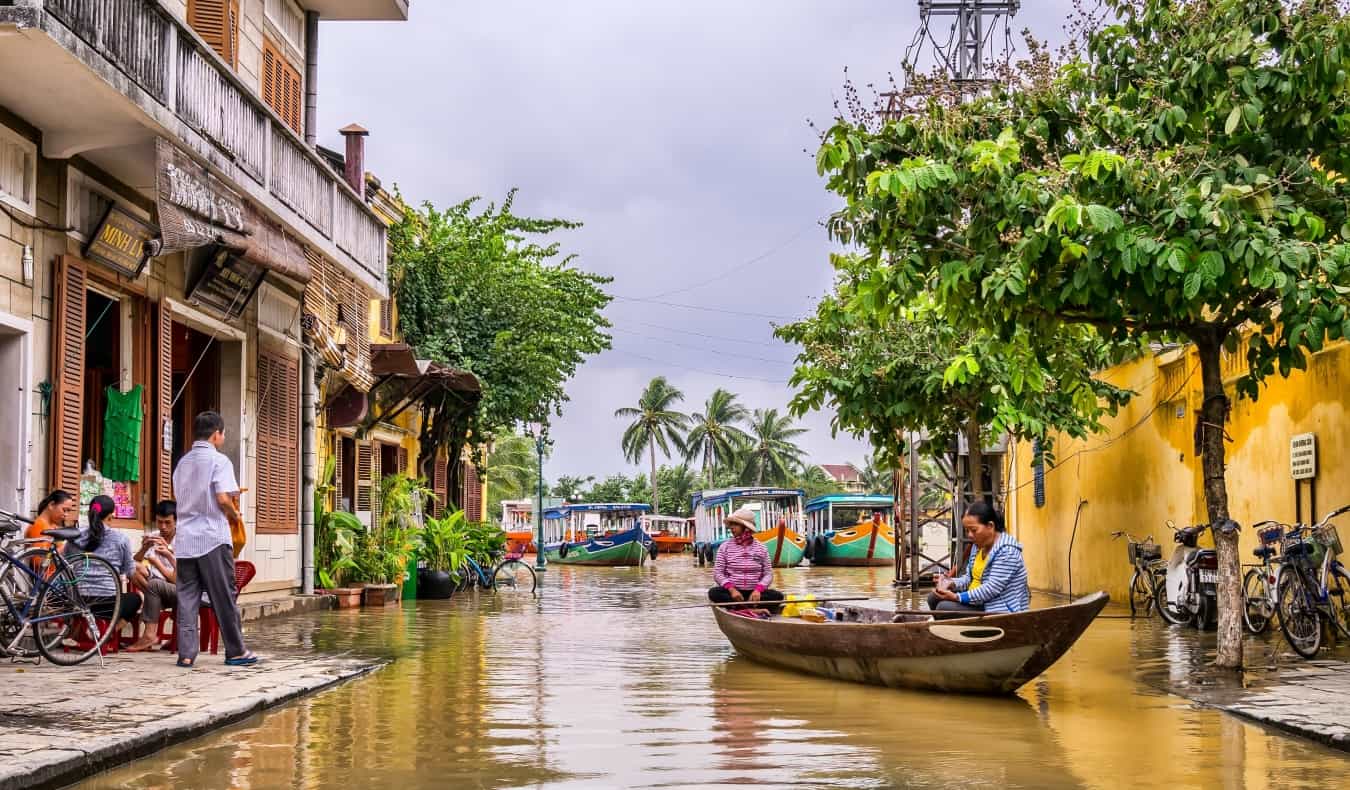
It’s also an extremely popular place for ordering tailored clothing, which is one of the main reasons people come here. You can get anything made here — from custom-made suits to gowns to sundresses to leather boots to sneakers. The tailor shops will even mail all your goods home to you.
Otherwise, Hoi An makes for a relaxing destination in an otherwise hectic country, with the beach only a 15-minute bike-ride from town.
Some of the top things to do here include the following:
- Explore My Son Sanctuary: – This is one of the most important sites relating to the ancient Kingdom of Champa and is said to have been Vietnam’s religious and intellectual center. Even in their ruined state, the remaining Hindu temple structures are impressive. Go in the morning to beat the crowds and heat. A morning guided tour with transportation from Hoi An is the best option.
- Relax on the beach – An Bang and Cua Dai beaches are both close to Hoi An and great places to spend an afternoon. Cua Dai is designated as one of Vietnam’s five UNESCO World Heritage sites; both beaches offer soft white sand and excellent beachside restaurants.
- Attend the Full Moon Festival – Hoi An’s Full Moon Festival is held on the 14th day of the lunar cycle each month and is probably the best time to visit the city, if you don’t mind the crowds. This is a fun time to party with locals, as the streets come alive with folk music, plays, and dancing!
- Learn about (and eat!) all the food – Vietnamese cuisine is fresh, flavorful, and delicious. Hoi An offers a few ways to dive into this incredible cuisine: take a food tour , do a cooking class , or learn how to make Vietnamese coffee !
WHERE TO STAY : Vietnam Backpackers Hoi An Hostel – Located conveniently between the Old Town and the beach, this hostel has a great outdoor pool and terrace, tons of social events, small dorms (max. 6 beds), and rain-head showers with excellent pressure. If you stay in a private room, you’ll even get a free bicycle to use (rentals are also available if you’re staying in a dorm).
Ho Chi Minh City – My favorite Vietnamese city after Hoi An, Ho Chi Minh City (formerly known as Saigon) is the largest and most chaotic in the country. Motorbikes, bicycles, cars, and rickshaws go wherever they please, and lots of street stands and markets spill into the traffic lanes.
It’s a metropolis with a billion things happening at once, and a lot to offer travelers. Stay a few days here to take in the wonderful shops, fantastic nightlife, delicious food, plentiful historic sites, and interesting (though propaganda-heavy) museums.
WHERE TO STAY : The Hideout – This is a conveniently located, social hostel with super clean rooms, free beer at the bar every day, and showers that you can use even after you check out. They organize many tours of the city and area as well.
MONTH THREE: Cambodia
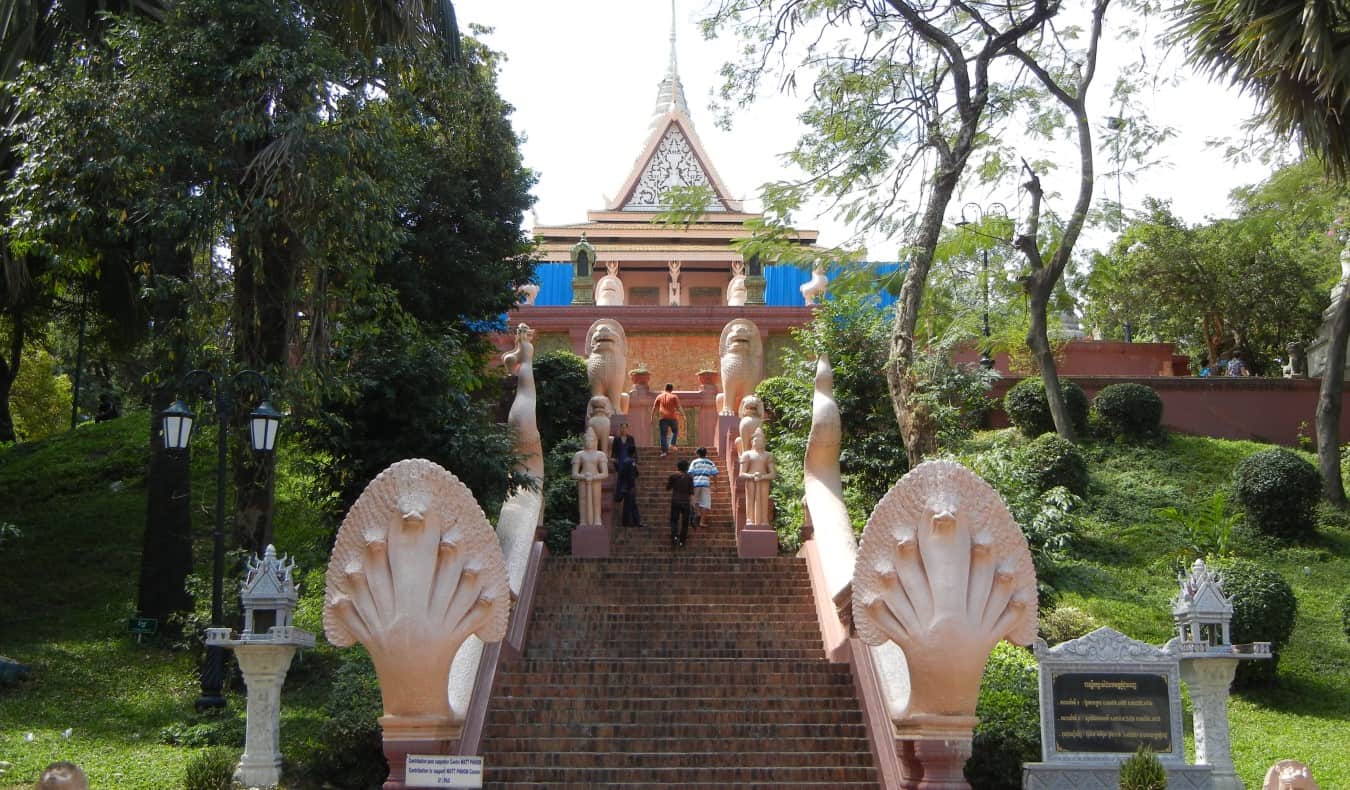
If you’re looking to soak up some sun, Independence Beach and Otres Beach are probably your best bets. But mainly, Sihanoukville is a jumping-off point for other islands and beach towns in the area, such as:
Koh Rong – This island is a 45-minute ride from Sihanoukville. If you’re pressed for time, you can do it in a day trip, but stay overnight if you can. The beaches here are way better than on the mainland (and a lot less polluted), and there’s great snorkeling and diving.
Bokor National Park – Hike through a stunning rainforest or see the atmospheric ruins of the French aristocracy for whom Bokor was a big drawback in the day. You’ll have some amazing views, and there are ruins, waterfalls, and temples all around.
Kep – This quaint beach and fishing village is a quiet version of Sihanoukville but without a party atmosphere, therefore a nice place to relax near the ocean. It’s famous for its pepper crab and empty beaches. Sure, it’s quite sleepy and there’s not a lot to do, but it’s the perfect place to relax, read a book, and eat all the delicious crab. You can also spend some time on nearby Rabbit Island (Koh Tonsay), a secluded and charming escape from the world if you’re looking to disconnect.
Kampot – This is another quiet town on the coast. Most people come here to enjoy the scenic riverside views as well as the rolling hills and pepper farms that surround the city. The area used to be a getaway for the French, so you’ll see old colonial architecture around. At night, the street near the old bridge is lined with fruit shake vendors. Try a million — the city is famous for them. Also, if you only do one thing in this entire itinerary, make sure it’s eating the ribs at the Rusty Keyhole — they are some of the best ribs I’ve ever had.
Week 11: Siem Reap and Angkor Wat Follow the above suggestions for Siem Reap and Angkor Wat but at a slower pace. There’s a lot to see and do in the area. You can easily spend several days just exploring Angkor Wat. You can also do more day trips into the surrounding region.
A great way to spend a day is to head to Koh Ker, located in the jungle around 2.5 hours from town. Koh Ker was briefly the capital of the Khmer Empire, and many of the temples here are over a thousand years old. It’s a massive archeological site that sees far fewer tourists than Angkor Wat.
For another fun day trip, head to Phnom Kulen, considered the country’s most sacred mountain. It’s located just 50 kilometers (31 miles) from Siem Reap and offers some amazing jungles, hiking, and picturesque waterfalls where you can take a dip to beat the heat. You can easily spend a day here. If you head up to the summit, there are some great views, as well as a large reclining Buddha statue. Try to arrive early, as the park fills up by lunchtime.
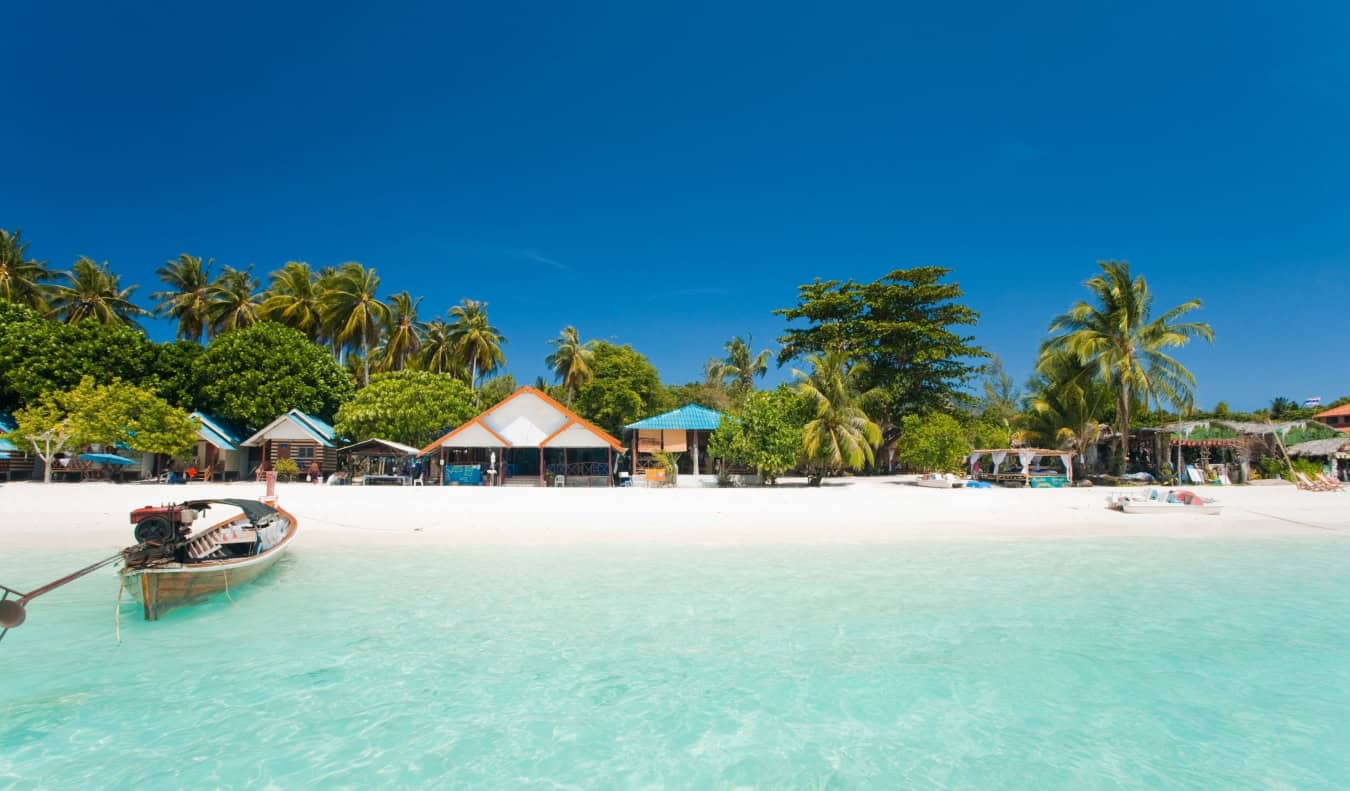
There’s seemingly an island for every type of traveler here. Some are overdeveloped, while others only have a single bungalow. Some of my favorites are Ko Samet, Ko Taruato, Ko Lanta, Ko Chang, Ko Tao, Ko Jum, Ko Lipe, Ko Samui, and the Similan Islands. You could easily spend weeks (or months) bopping around to different islands, but if you’re on your last week, just choose one or two, depending on what you’re looking for.
Some recommendations to get you started:
Ko Lipe – This lesser-known island is one of my favorite places in the world. There are amazing seafood meals, beautiful beaches, and warm waters in which to swim and snorkel . I came for three days and ended up staying for a month. In the last few years, it has become more developed, and it’s not the sleepy little island it used to be, but it’s still way less touristy than many other destinations in Thailand.
Phuket – Phuket is the biggest destination for tourism in Thailand. There are great beaches and amazing activities on this island. While most visitors stick to the overdeveloped south, if you stay away from Patong Beach, you can avoid most of the crowds. In fact, the northern part of the island is one of my favorite places to visit in all of Thailand.
Ko Phangan – This island is home to the infamous Full Moon Party , one of the most famous parties in the world, with a lot of drinking, dancing, and drugs. Each bar has its own sound system, so you’ll hear different music loudly blasting onto the beach every few feet. The beach itself is lined with people selling alcohol, fire dancers putting on shows, and little booths selling glow-in-the-dark face paint.
Ko Tao – If you’re looking to dive in Thailand, go to Ko Tao , which caters specifically to divers. If you dive here, be sure to see Elephant Head Rock, as the reef is home to plenty of fish, snappers, rays, and turtles. Day trips start at 5,900 THB for two dives, including equipment and park fees. If you’ve never dived before, a day trip that teaches you all the basics starts at 2,500 THB while a four-day open water course starts at 11,000 THB.
After your time in the islands, head back to Bangkok for your return flight home.
If you’ve got even longer, this region has so much to offer — from Malaysia to Singapore to Indonesia and more!
The best time to visit Southeast Asia largely depends on your preferences, where exactly you’re going, and what you plan to do. But generally, the dry season, spanning from November to April, is prime time for travelers. During these months, countries like Thailand, Vietnam, Cambodia, and Laos boast sunny skies, lower humidity levels, and comfortable temperatures.
If you don’t mind occasional rain showers, the shoulder season (from May to October) is much less crowded. You’ll get lower prices on accommodations too. July to September is the peak holiday season and when you can expect to pay the highest rates.
This is all a vast generalization though, as it’s a big region and conditions vary drastically depending on where you are. Be sure to check my Southeast Asia Travel Guide and specific country guides for more information.
U.S. citizens don’t need a visa for many countries in Southeast Asia, and where a visa is required, it’s usually pretty easy to get. Assuming the purpose of your trip is tourism only, here are the latest visa requirements:
- Thailand: U.S. citizens can enter Thailand visa-free for up to 30 days.
- Vietnam: U.S. citizens need a visa to enter Vietnam. The easiest option is an e-visa through the Vietnam Immigration website. The e-visa is valid for a maximum of 90 days and does not allow for renewal from within the country. You can also get one through a Vietnamese embassy or consulate.
- Cambodia: U.S. citizens can get a visa on arrival at major entry points or apply in advance for an e-visa. Both options typically allow for stays of up to 30 days.
- Laos: U.S. citizens need a visa to enter Laos. Visas can be obtained on arrival at major entry points or in advance through a Laotian embassy or consulate. You can extend the visa for up to 60 days through the Department of Immigration in Vientiane.
- Myanmar (Burma): U.S. citizens need a visa to enter Myanmar. You can either get an e-visa online in advance or apply through a Burmese embassy or consulate.
- Malaysia, Indonesia, Singapore, and the Philippines: U.S. citizens typically do not need visas for short stays (usually up to 30 days) in any of these countries.
Visa requirements do change periodically though, so be sure to check before your trip in case any of the above has changed. Also ensure that your passport is valid for at least six months after the end of your trip and that you have enough blank pages for entry visas. While not all countries require this, most do!
Southeast Asia is one of the best regions to backpack in. It’s fun, affordable, safe, and has something for everyone. But it can be tricky to plan a trip here, as there is a ton to see and do. So, as you try to craft the perfect Southeast Asia itinerary, just keep in mind that plans change. You meet people or learn about something new, and all of a sudden your meticulous preparation goes out the window.
These days, I leave much more room in case plans change — because they always do. Give yourself that wiggle room. That way, no matter what comes your way, you’ll be able to adapt.
Be flexible. Go slow.
That’s how you plan an amazing itinerary. Not only to Southeast Asia but anywhere in the world!
Book Your Trip to Southeast Asia: Logistical Tips and Tricks
Book Your Flight Use Skyscanner to find a cheap flight. It is my favorite search engine because it searches websites and airlines around the globe, so you always know no stone is being left unturned!
Book Your Accommodation You can book your hostel with Hostelworld as it has the biggest inventory and best deals. If you want to stay somewhere other than a hostel, use Booking.com as it consistently returns the cheapest rates for guesthouses and hotels.
Don’t Forget Travel Insurance Travel insurance will protect you against illness, injury, theft, and cancelations. It’s comprehensive protection in case anything goes wrong. I never go on a trip without it, as I’ve had to use it many times in the past. My favorite companies that offer the best service and value are:
- Safety Wing (best for everyone)
- Insure My Trip (for those over 70)
- Medjet (for additional evacuation coverage)
Looking for the Best Companies to Save Money With? Check out my resource page for the best companies to use when you travel. I list all the ones I use to save money when I’m on the road. They will save you money too.
Want More Information on Southeast Asia? Be sure to visit our robust destination guide on Southeast Asia for even more planning tips!
Got a comment on this article? Join the conversation on Facebook , Instagram , or Twitter and share your thoughts!
Disclosure: Please note that some of the links above may be affiliate links, and at no additional cost to you, I earn a commission if you make a purchase. I recommend only products and companies I use and the income goes to keeping the site community supported and ad free.
Related Posts
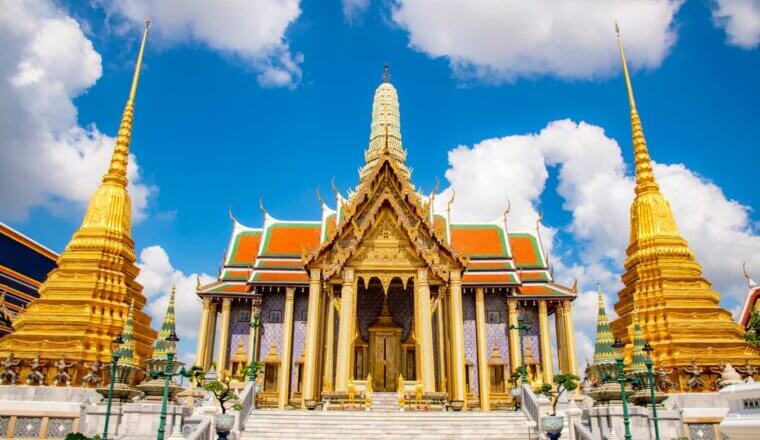
Get my best stuff sent straight to you!
Pin it on pinterest.
Southeast Asia

- 1 Countries
- 3 Other destinations
- 4.1 History
- 4.2 Culture
- 4.3 Religion
- 4.4 Climate
- 6.1 By plane
- 6.2 By train
- 6.3 By boat
- 7.1 By plane
- 7.2 By train
- 7.4 By boat
- 8.1 Landscapes and nature
- 8.2 Museums
- 8.3 Archaeological sites and precolonial heritage
- 8.4 Colonial heritage
- 8.5 Other sights
- 8.6 Itineraries
- 9.1 Water sports
- 9.2 Massage
- 10.2 Shopping
- 10.3 Bargaining
- 13 Stay safe
- 14 Stay healthy
Southeast Asia is a group of diverse tropical countries between the Indian Ocean and the Pacific Ocean, featuring cultures influenced by both India and China and hosting large communities of Overseas Chinese. The region includes Indonesia, the most populous Muslim country in the world, as well as very prominent Buddhist countries, and quite significant Christian, Hindu and Animist communities. Southeast Asia has long been a favourite corner of the world for globe-tramping backpackers, known for its perfect beaches, tasty cuisine, low prices, and good flight connections.
Countries [ edit ]
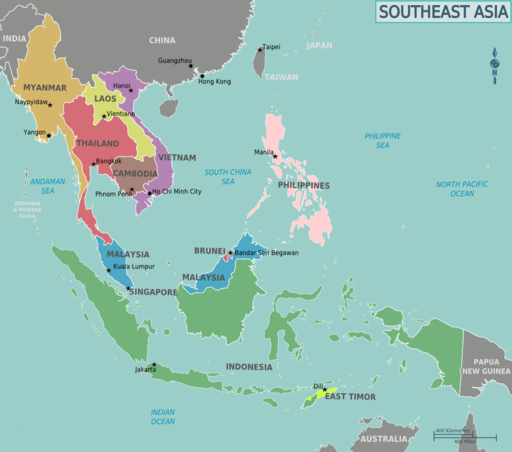
The Australian Indian Ocean Territories of Christmas Island and the Cocos (Keeling) Islands are both geographically and culturally linked to Southeast Asia. However, as they are Australian possessions, they are covered under Australia .
Parts of southern China and Taiwan have similar nature and cultural heritage to Southeast Asia.
North-Eastern India and Bangladesh are influenced by Southeast Asia, but on Wikivoyage they are covered in South Asia .
Disputed territories in the region are:
- Paracel Islands – administered by China but also claimed by Vietnam and Taiwan, not visitable by foreign tourists
- Spratly Islands – a bunch of mostly uninhabited islands and reefs subject to a dizzying mess of territorial disputes, but the only destination of note is the dive resort Layang Layang , which is under Malaysian control.
Aside from East Timor, the other ten nations listed above are members of ASEAN, the Association of Southeast Asian Nations. East Timor is an observer in ASEAN and is in the process of seeking full membership. Papua New Guinea is also an observer, but is rarely considered to be part of Southeast Asia.
Cities [ edit ]
Nine of the most prominent cities in Southeast Asia include:
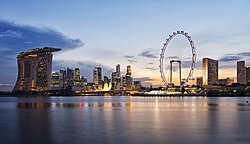
- 13.75 100.516667 1 Bangkok — the world's most popular tourist destination, Thailand's capital is justly famous for temples, food, shopping and nightlife
- 10.775556 106.701944 2 Ho Chi Minh City (formerly Saigon) — Vietnam's largest city is at the epicenter of the country's frenetic economic boom
- -6.175 106.8275 3 Jakarta — sprawling, congested and vibrant, the Indonesian capital is the largest city in southeast Asia
- 3.147778 101.695278 4 Kuala Lumpur — Malaysia's capital has grown from a small sleepy Chinese tin-mining village to a bustling metropolis
- 19.89 102.134722 5 Luang Prabang — a UNESCO World Heritage City in Laos known for its numerous temples, colonial-era architecture and vibrant night market
- 14.595833 120.977222 6 Manila — the enormous Philippine capital spans the gamut from the Spanish colonial era to skyscrapers
- 11.569583 104.921028 7 Phnom Penh — Cambodia's capital took a battering during the Khmer Rouge years, but is striving to reclaim its old title as "The Pearl of Asia"
- 1.3 103.8 8 Singapore — supermodern, dense, affluent city with a medley of Chinese, Indian, Malay and British influences
- 16.795 96.16 9 Yangon (formerly Rangoon) — the commercial capital of Myanmar, known for its pagodas and colonial architecture
Other destinations [ edit ]

Outside of major cities here are some of the most rewarding destinations:
- 13.433333 103.833333 1 Angkor Archaeological Park — magnificent remains of several capitals of the Khmer Empire
- -7.60793 110.20384 3 Borobudur — one of the largest Buddhist temples in the world
- 4.0425 114.8125 4 Gunung Mulu National Park — fantastic limestones caves and karst formations
- 20.9 107.2 5 Ha Long Bay — literally translated as "Bay of Descending Dragons", famous for its scenic rock formations
- -8.651625 119.576569 6 Komodo National Park — the only home of the komodo, the biggest reptile in the world
- 8.057778 98.916944 7 Krabi Province — beach and water sports mecca, includes Ao Nang , Rai Leh , Ko Phi Phi and Ko Lanta
- 10 118.833333 8 Palawan — an ecologically diverse and relatively unclogged island at the western fringe of the Philippines with some of the most rewarding diving and swimming sites in the world
- 14.390556 104.680278 9 Preah Vihear — cliff-top temple pre-dating Angkor Wat
Understand [ edit ]
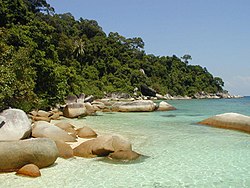
Southeast Asia is one of the world's most popular tourist destinations, and for a reason. Some of the countries here have it all: a tropical climate , warm (or hot!) all year around, rich culture , gorgeous beaches , wonderful food and last but not least, low prices . While its history and modern-day politics are complex, most of it is also quite safe and easy to travel around in.
The region is also a very popular destination for retiring abroad , and several governments in the region offer special long-term visas specifically for retirees.
History [ edit ]

Southeast Asia is a very diverse region, with numerous ethnic groups of different origins.
Pre-historic Southeast Asia was lightly populated. The first group of people known to populate Southeast Asia were the Austroasiatic peoples, who were believed to have originated in what is today southern China, and are believed to be the ancestors of today's Vietnamese, Khmer and Mon peoples. Later groups to follow including the Tai people, who are believed to be the ancestors of today's Thai, Lao and Shan peoples, Sino-Tibetan peoples who are believed to be the ancestors of today's Bamar and Rakhine peoples, and the Hmong. The Malay Archipelago and Malay Peninsula were mainly populated by Austronesian peoples, who are believed to trace their origins to the indigenous peoples of Taiwan .
Indian influences would begin to grow among the various Southeast Asian peoples starting from the first century AD, in a process known as Indianization . The exact way through which this happened is disputed, though the most popular theory is that Brahmins travelling in the ships or caravans of traders from India brought Hinduism and later, Buddhism with them and spread it to the elite classes, from whom it trickled down to the rest of the population. The Indic scripts still used to write modern Thai, Lao, Burmese and Khmer have their roots from this process, and those languages, along with others such as Javanese, Balinese, Malay and Cham would adopt many loan words from Sanskrit. Many of these peoples would eventually build powerful Indianized kingdoms, including the Khmer Empire , Champa, Funan, Bagan Empire, Sukhothai Kingdom, Srivijaya and Majapahit. Today, Hinduism is primarily concentrated on the Indonesian island of Bali , though many traditions and stories of Hindu origin continue to survive throughout the region, even among peoples who are Buddhist, Muslim or Christian. Theravada Buddhism, on the other hand, is the dominant religion in Thailand, Myanmar, Cambodia and Laos, albeit still syncretised with Hinduism and local folk religions to varying extents.
Vietnam, on the other hand, would come to be heavily influenced by China, having been occupied by the Chinese Han, Tang and Ming dynasties. While the Vietnamese eventually succeeded in driving the Chinese out each time, the Chinese would leave a deep impact on Vietnamese society, with Confucianism and Taoism being hugely influential in shaping Vietnamese social etiquette, and the Chinese system of bureaucracy being adopted by many Vietnamese dynasties. Mahayana Buddhism also made its way into Vietnam via China, and although the official census today says that most Vietnamese are non-religious, most Vietnamese still practise a syncretic mix of Taoism, Confucianism, Mahayana Buddhism and Vietnamese folk religion to one degree or another. Vietnam also adopted Chinese characters to write the Vietnamese language, though this was replaced by the Latin alphabet during the French colonial period, and today, the old Chinese-based writing system only survives among the small ethnic Vietnamese minority in China.
Islam would arrive with Arab traders in the 7th century, and start spreading throughout much of the Malay Archipelago in the 12th century. The Malacca sultanate was initially founded as a Hindu kingdom, but converted to Islam in the 15th century, thus becoming the first powerful Muslim kingdom in the region, and leading to Islam becoming the dominant religion in the Malay Archipelago. The Arabic script would also be adopted to write the Malay language, though it was largely replaced by the Latin alphabet under British colonial rule. The Arabic script continues to be official in Brunei, and is used by some in more conservative Malaysian states such as Terengganu and Kelantan, though it is far less common than the Latin alphabet in both countries outside of religious publications.
Southeast Asian history is very diverse and often tumultuous, and has to an important extent been shaped by European colonialism . The very term Southeast Asia was invented by American Naval strategists around 1940. Prior to WWII, Southeast Asia was referenced in terms of their colonial powers; farther India for Burma and Thailand , with reference to the main British colony of India, although Thailand itself was never colonised; Indochina referred to the French colonies of Cambodia , Vietnam and Laos , while Indonesia and parts of maritime Southeast Asia were called the Dutch East Indies . Peninsular Malaysia and Singapore were known as British Malaya , while Sabah was known as British North Borneo . Sarawak , on the other hand, was the Kingdom of Sarawak , ruled by a British family known as the White Rajahs . Brunei was also made into a British protectorate, with the British taking charge of its defence and foreign affairs. The Philippines was named the Spanish East Indies during the initial period of Spanish colonial rule, and later came to be known by its current name in honour of King Philip II of Spain, a name which stuck even after the islands were transferred from Spanish to American colonial rule. East Timor was colonized by Portugal for 273 years, then occupied by Indonesia for 27 years before becoming the first nation to gain independence in the 21st century. This massive colonisation effort was fueled by the lucrative spice trade , which in turn encouraged heavy immigration of workers to support the harvest and sale of plantation crops like nutmeg, rubber and tea.
World War II was disastrous to Southeast Asia (see Pacific War for a detailed guide), and also saw the beginning of the end of Western colonialism, as the Western powers surrendered to Japan one by one in disgrace. By the end of 1942, the Japanese had conquered virtually the whole of Southeast Asia, with only Thailand remaining unconquered, as the Thais signed a treaty of friendship with the Japanese that allowed the Japanese to establish military bases in Thailand, and allowed Japanese troops free passage through Thailand. The Japanese occupation was a time of great hardship for many of the natives, as the Japanese took all the resources for themselves, and exploited and in many cases outright enslaved the locals for their own gain. They were also for the most part more brutal than the Western colonial powers to the people under occupation, especially towards the ethnic Chinese. However, the Japanese occupation convinced many locals that the Western powers were not invincible after all, and thereby had the effect of helping the independence movements to gain pace after the end of the war.
After the war, the decolonisation process started in Southeast Asia, with the Americans granting independence to the Philippines in 1946, while the British granted independence to Burma in 1948, followed by Malaya in 1957 and eventually Singapore, Sarawak and North Borneo in 1963, which federated with Malaya to form Malaysia. After some ideological conflicts, Singapore was expelled from Malaysia in 1965 and became a sovereign state. In contrast to the relatively peaceful withdrawals by the British and Americans, the Dutch and the French fought bloody wars in an effort to hold on to their colonies, and earned humiliating defeats. Indonesia gained independence from the Dutch in 1949, and Indochina forced the French military to withdraw and separated into the countries of Laos, Cambodia, and Vietnam in 1954; see Indochina Wars . However, Vietnam would be split into two, with Ho Chi Minh establishing a communist regime with the support of the Soviet Union in the north, and Ngo Dinh Diem establishing a capitalist regime with the support of the United States in the south. This ideological conflict would spark off the Vietnam War in 1955, and it only ended in 1975 when a North Vietnamese tank drove into the Presidential Palace of South Vietnam in Saigon, and unified the country under communist rule.
European colonialism came to an end in Southeast Asia in 1984, when Brunei was granted full independence by the British. Indonesia occupied East Timor in 1975 after it declared independence from the Portuguese following a coup in Portugal, and only left in 1999 following a United Nations referendum. East Timor was then occupied by a United Nations peacekeeping force, before finally becoming independent in 2002. The 2004 Indian Ocean tsunami was devastating to parts of the Indonesian island of Sumatra (especially Aceh , which lost well over 100,000 people to the roiling waters), Thailand, Myanmar and Malaysia.
Since the 1990s, Southeast Asia has had a relatively high rate of economic growth, with Malaysia , Indonesia , the Philippines , Thailand and Vietnam often being called the "Tiger Cub Economies" (in reference to the original East Asian Tigers of Singapore , Hong Kong , Taiwan and South Korea ). Nevertheless, despite being one of the most fertile and resource rich regions in the world, widespread corruption means that poverty is still an issue in many countries, with much of the wealth concentrated in the hands of an elite few. In the 21st century, China is increasingly becoming a major player in the region; China is now the largest source of international tourists to most Southeast Asian countries, and has also invested substantially in infrastructure under the auspices of the Belt and Road Initiative.
Culture [ edit ]

Southeast Asia's culture is dominantly influenced by the Indians and Chinese as well as its colonizers, and also natives of the Malay archipelago. For at least 2000 years (and to this day), Southeast Asia has acted as a conduit for trade between India and China. Large-scale immigration, however, only began with the advent of the colonial era. In Singapore, the Chinese form a majority of the population, but there are substantial Chinese, Indian and other minorities, assimilated to varying degrees, across all countries in the region.
Many large businesses in Southeast Asia are owned by ethnic Chinese, who tend to have a disproportionately large economic clout relative to their population. They have long been resented by other segments of the population, and are often the target of discriminatory laws and in extreme cases, even ethnic violence. However, progress is being made, with some countries such as Indonesia, Thailand and Vietnam having since repealed many of the said discriminatory laws.
Thai, Burmese, Cambodian and Lao cultures are heavily Indian-influenced in areas such as faith, folklore, language and writing, but have also absorbed heavy Chinese influences in their cuisines. Malaysia, Indonesia and Brunei are also influenced by the Indians, Malays and Chinese with a touch of Arab culture due to the large Muslim populations. Vietnam is the most Chinese-influenced. East Timor's culture is influenced notably by the Portuguese and the Malays. Singaporean and Filipino cultures are the most diverse: Singapore's is a mix of Malay, Indian, Peranakan, British, American and Chinese cultures while the Philippines is heavily influenced by American, Spanish, Malay, Chinese, Japanese and Portuguese influences with less coming from India, Mexico and non-Iberian parts of Europe, making it perhaps the most Westernized nation in the region.
Although Hinduism used to be dominant in the region, these days most Southeast Asians adhere to either Islam, Christianity or Buddhism. However, vestiges of Hinduism continue to survive in the folk tales and cultural practices of many Southeast Asians regardless of religion, and some nominally Muslim Javanese people practise a syncretic religion known as Kejawen that fuses Muslim, Hindu and animist beliefs.
Religion [ edit ]

Southeast Asia is religiously diverse. Malaysia , Indonesia and Brunei are predominantly Sunni Muslim , while East Timor and the Philippines are predominantly Roman Catholic . Buddhism is the dominant religion in Thailand , Myanmar , Laos , Cambodia and Vietnam , with Mahayana Buddhism being the dominant form in Vietnam, and Theravada Buddhism being the dominant form in the other countries. Singapore is by some measures the most religiously diverse country in the world and does not have a majority religion, though Mahayana Buddhism forms a plurality.
However, religious minorities exist in every country. The ethnic Chinese minorities in the various countries practice a mix of different religions, including Taoism and Mahayana Buddhism. Hinduism is still observed in parts of Indonesia, most notably Bali , as well as by the Cham community in Vietnam, and a sizeable proportion of the ethnic Indian communities in Malaysia, Singapore, Thailand and Myanmar. The southern parts of Thailand and the Sulu Archipelago of the southern Philippines are home to ethnic Malays who mostly practice Islam, and the Philippine island of Mindanao is also home to a sizable Muslim community. Christian minorities also exist in every country, most notably in Papua , East Nusa Tenggara and North Sulawesi in Indonesia, as well as in East Malaysia , and in the border area of Thailand and Myanmar. Animistic tribal religions are also practised, especially by some of the people living in remote jungle or mountainous areas.
Climate [ edit ]
Southeast Asia is tropical : the weather hovers around the 30°C mark throughout the year, humidity is high and it rains often.

The equatorial parts of Southeast Asia, including Malaysia, Brunei, Indonesia, Singapore, the Philippines and southern Thailand, have two or three seasons — wet , dry , and a nameless rest of the year when it sometimes rains and sometimes does not — with the dry season somewhat hotter (up to 35°C) and the wet season somewhat cooler (down to 25°C). The wet season usually occurs in winter, and the hot season in summer, although there are significant local variations.
In Indochina (north/central Thailand, Laos, Cambodia, southern Vietnam, Myanmar), the seasons can be broken down into hot , wet and dry , with the relatively cool dry season from November to February or so being the most popular with tourists. The scorching hot season that follows can see temperatures climb above 40°C in April, cooling down as the rains start around June. However, even in the "wet" season, the typical pattern is sunny mornings with a short (but torrential) shower in the afternoon, not all-day drizzle, so this alone should not discourage you from travel.
Northern Vietnam has four distinct seasons, with a climate similar to that of Hong Kong and Taiwan .
Southeast Asia is also home to many mountains, and conditions are generally cooler in the highlands. In equatorial Southeast Asia, highland temperatures generally range from about 15-25°C. Some of the highest mountains in Indonesia, Vietnam, and Myanmar are so high that snow falls every year, and Indonesia and Myanmar are even home to permanent glaciers.
In Malaysia , Brunei , Singapore , and parts of Indonesia (notably Sumatra and Borneo ) and the Philippines (notably Palawan ), haze from forest fires (usually set intentionally to clear land for agriculture) is a frequent phenomenon in the dry season from May to October. Haze can come and go rapidly with the wind.
Talk [ edit ]
English is a traveller's most useful language overall, although for longer stays in almost any Southeast Asian country except Singapore, picking up at least some of the local language is useful, and may be essential outside the cities.
The main language groups are:
- Austroasiatic - Vietnamese and Khmer are spoken in Vietnam and Cambodia respectively. Also includes the Mon language, spoken by the Mon ethnic minority in Myanmar
- Austronesian - Malay , Indonesian , Javanese , Tagalog , Cebuano , Ilocano , Tetum and related languages are spoken throughout the island nations of Malaysia , Indonesia , the Philippines , East Timor and Brunei , and by a significant minority in Singapore . Malay and Indonesian are very similar to each other, and speakers of either language can generally understand the other. Also includes the Cham language spoken by the Cham ethnic minority in Vietnam and Cambodia.
- Kra–Dai (Tai–Kadai) - Thai and Lao are spoken in Thailand and Laos respectively. Both languages are mutually intelligible to a certain extent. Also includes the Shan language, spoken by the Shan ethnic minority in Myanmar .
- Sino-Tibetan - Burmese is closely related to Tibetan, and more distantly related to the Chinese family of languages. Mandarin is an official language of Singapore, and widely spoken by the ethnic Chinese minorities in Malaysia, Brunei and Myanmar. Various Chinese dialects are spoken by the sizeable Chinese communities throughout the region. The Rakhine language of Myanmar's Rakhine ethnic minority is similar to Burmese, and often considered to be a dialect of it.
The Chinese languages have a large influence, with Mandarin being an official language in Singapore and southern variants such as Cantonese , Hokkien , Teochew , Hakka , Fuzhou dialect and Hainanese being spoken in ethnic Chinese communities across the whole region. Many of the local languages contain loan words from various Chinese dialects, particularly when it comes to culinary terms. In addition, due to centuries of Chinese cultural dominance, much of Vietnamese vocabulary consists of loan words from Chinese. Southeast Asia is a prime destination for China's rising tourism industry, and Mandarin is becoming more prevalent in order to cater for it.
Various Indian languages are also spoken by much of the Indian diaspora in the former British colonies of Malaysia, Singapore and Myanmar, the most widely spoken of them being Tamil , which is one of the official languages in Singapore. Other Indian languages that you might hear include Malayalam and Punjabi . Due to a long history of Indian influences in the region, many Southeast Asian languages, including Malay, Indonesian, Thai, Lao, Burmese and Khmer contain many loan words from Sanskrit . Moreover, the Thai, Khmer, Lao and Burmese languages continue to use Indic scripts related to those used by most Indian languages as their writing systems.
Portuguese remains an official language of East Timor , and a Portuguese-based creole is still being spoken in some Malaysian communities.
English the main language of business and administration in Singapore, and a common second language in the Philippines, Malaysia and Brunei. In areas popular among tourists in the region such as Bali , Phuket and Luang Prabang , English is widely spoken by people working in the tourism industry, although with varying degrees of proficiency. Business people who deal with international clients generally speak a decent level of English.
French is still spoken and taught in Vietnam, Laos and Cambodia, although its situation varies by country. In Vietnam, it is known by many educated Vietnamese, especially those schooled before 1975, though today English is the more preferred second language among youths. In Laos, French is widely used among the educated populace and features on most public signage. In Cambodia, French is limited chiefly to urban and elderly elites and a handful of university educated students.
The other languages of the former colonial countries are generally not spoken so widely anymore or at all. You may notice English words in Malay , Dutch words in Indonesian and Spanish words in Tagalog (Philippines).
Get in [ edit ]
Malaysia , Brunei , the Philippines , Singapore and Thailand do not require visas for most Western visitors. Indonesia , Cambodia , Laos , and East Timor offer visas on arrival for citizens of most Western countries at most points of entry. Vietnam and Myanmar require advance paperwork for most visitors, but most Western visitors are eligible for eVisas, thus saving you the hassle to needing to make your way to an embassy or consulate.
Travellers to ASEAN nations (all nations covered in this article except East Timor) may need to be aware of the effects on visas . ASEAN citizens are entitled to visa-free tourist travel to most other ASEAN countries, and agreements are in place with nearby nations such as China which affect visas in either direction. Visa-free travel may be for a shorter period than travel with a visa, limited to as little as 14 days. A common ASEAN travel area, similar to the Schengen Agreement for Europe, is proposed but has not yet been implemented. Visitors from outside the ASEAN area still need to consult the specific visa requirements for the countries they are visiting. Business travellers may wish to take advantage of tariff reductions and other economic measures between the nations. For visitors, however, normal duty free limits on cigarettes, alcohol, perfume and the like, apply when travelling between them.
By plane [ edit ]

The main international gateways to Southeast Asia are Bangkok ( BKK IATA ), Singapore ( SIN IATA ), Kuala Lumpur ( KUL IATA ), and Jakarta ( CGK IATA ). Other airports with good connections outside the region include Manila ( MNL IATA ), Denpasar ( DPS IATA ), Phuket ( HKT IATA ), Ho Chi Minh City ( SGN IATA ) and Hanoi ( HAN IATA ). Hong Kong also makes a good springboard into the region, with many low-cost carriers flying into Southeast Asian destinations.
Travellers from the U.S. and Canada can often find competitive prices on Taiwan's EVA Air, Hong Kong's Cathay Pacific, Japan's ANA and Japan Airlines, and South Korea's Korean Air connecting through their respective hubs, while travellers from Latin America, Africa and Europe can often find competitive prices on the Gulf trio of Emirates, Qatar Airways and Etihad Airways.
Singapore Airlines , Malaysia Airlines and Thai Airways are all known for their great service and safety records. Philippine Airlines is the oldest airline in this part of the world still flying under the original name, while Vietnam Airlines and Garuda Indonesia are slowly but surely growing their intercontinental networks. Rapidly expanding AirAsia flies out of its Kuala Lumpur hub to many major East Asian and South Asian cities, as well as long-haul routes to Sydney , Melbourne , Perth and Auckland , with connections available to other Southeast Asian cities through its Kuala Lumpur hub. AirAsia also operates several secondary hubs in Jakarta, Bangkok and Manila, as well as a dense network into Singapore. In addition to AirAsia, long-haul budget flights can be booked into the Jetstar and Scoot hub in Singapore or the Cebu Pacific hub in Manila.
Travellers to ASEAN nations are starting to benefit from the ASEAN Single Aviation Market policy, a gradual process of opening up the markets which is moving slowly but surely.
By train [ edit ]
There is a railway line to Hanoi , Vietnam from Nanning , China . There are no connections between Vietnam and other Southeast Asian countries yet, although there are plans for links through both Cambodia and Myanmar onward to the existing Thailand - Malaysia network. A new railway line from Kunming , China to Vientiane , Laos was completed in December 2021, with one international train in each direction daily since April 2023. There are plans to eventually extend the railway all the way to Bangkok, Kuala Lumpur and Singapore, but completion is still a long way away. Such plans have existed since the colonial era, but China's Belt and Road Initiative has injected them with new vigor and capital.
By boat [ edit ]
Southeast Asia is a popular destination for round the world cruises, and many of them make several stops in Southeast Asia with the option to go for shore excursions. Popular ports of call include Singapore , Langkawi , Penang , Tioman , Redang , Phuket , Nha Trang , Ha Long Bay , Ho Chi Minh City and Ko Samui .
Get around [ edit ]
With the exception of Singapore , public transport networks in Southeast Asia tend to be underdeveloped. However, due to reckless driving habits, driving is also usually not for the faint-hearted. Most of the time, plane, bus or rail travel tends to be the best way to get around.
There are local means of transport based on converting a motorcycle, truck, van or even bicycle to haul passengers. These include jeepneys , UV Express and traysikels in the Philippines, songthaews and tuk-tuks in Thailand, and similar vehicles elsewhere. Unmodified motorcycles also provide taxi services in various places. All these modes of transport are generally cheap and rather colorful, but somewhat uncomfortable and perhaps dangerous.
Be aware of various scams when crossing international borders. If someone offers to help you obtain a visa for the next country, or tries to direct you to a "health check", you can be certain that that person is trying to scam you. In Thailand , Vietnam , Myanmar , Cambodia and Laos , it is not uncommon for immigration officers to ask for bribes to stamp you in or out of the country; this is usually not a problem at airports, but bribes of up to US$10 per person are often demanded at land borders.
The most popular ride sharing apps with a strong presence in multiple Southeast Asian countries are Malaysia's Grab and Indonesia's Gojek . Uber and Lyft do not have a presence.

Much of Southeast Asia is now covered by a dense web of low-cost carriers, the largest being Malaysian carrier AirAsia and its Thai, Indonesian and Filipino affiliates, making this a fast and affordable way of getting around. Bangkok , Jakarta , Kuala Lumpur and Singapore are the main hubs for budget airlines in the area.
Full-service carriers have spun off their own low-cost airlines to compete, which have taken over many leisure routes completely. Examples include Scoot in Singapore, Thai Smile [dead link] in Thailand and Firefly in Malaysia. These larger multinational budget airlines and most national carriers are respectable, but some of the smaller airlines have questionable safety records, especially on domestic flights using older planes. Do some research before you buy.
Services along the main Jakarta - Singapore - Kuala Lumpur - Bangkok business corridor are extremely frequent, with frequencies almost like a bus service in the daytime, meaning that competition is stiff and prices are low if you book in advance.
Due to the high rates of road accidents in most the region, trains in Southeast Asia are generally considered to be a safer option than buses, especially during the night, although in most cases the journey by train takes longer than by bus. Most of Southeast Asia's railways are relics of the colonial era, meaning that they are mostly single track and use diesel locomotives, so delays are common, and speeds are rather slow.
Thailand has the most extensive network, with relatively frequent and economical (albeit slow, compared to most buses) and generally reliable services. The main lines from Bangkok are north to Chiang Mai ; northeast via Nakhon Ratchasima (Khorat) to Nong Khai and also east to Ubon Ratchathani ; east via Chachoengsao to Aranyaprathet and also southeast via Pattaya to Sattahip ; and south via Surat Thani (province) to Ko Samui , Ko Pha Ngan , Ko Tao and Hat Yai , through Malaysia via Butterworth , Kuala Lumpur , and Johor Bahru , to Singapore .
Vietnam has a line linking the country from north to south but again, speeds are rather slow.
The networks in Indonesia and Myanmar are more limited and decrepit and perhaps best experienced for their nostalgic value. The sole exception in Indonesia is the new high-speed train between Jakarta and Bandung . The Philippines has a limited railway network in Luzon island, which fell into neglect, but is slowly being rebuilt and expanded through foreign aid. Cambodia 's railways were badly hit by the civil war, but have been rehabilitated in the 2010s; there are two lines radiating out of Phnom Penh ; one to the seaside resort town of Sihanoukville , and the other to the second largest city Battambang .
Malaysia and Laos have relatively fast, modern and comfortable electrified and doubled-tracked railways. The Kunming - Vientiane railway line has trains travelling at up to 160 km/h in the Lao section, which crossing the border into Laos from China at Boten , before continuing through on to Vientiane via Luang Prabang and Vang Vieng . In Malaysia, KTM's ETS service runs along the West Coast of Peninsular Malaysia from Gemas to Padang Besar at the Thai border, passing through Kuala Lumpur and Ipoh along the way, and with a branch line heading from Bukit Mertajam to Butterworth (for transfers to the ferry to George Town ). Trains on this line can hit a top speed of 140 km/h.
By bus [ edit ]
Buses are a cheap and popular mode of transport in Southeast Asia. They tend to be faster than the train and serve more cities in countries with limited to non-existent rail networks, but less safe due to the local driving habits and road conditions.
Classes and styles of buses vary by country, but most Southeast Asian countries have luxury or first-class buses on long-haul routes between major cities. Minibuses or buses without air-conditioning are common in poorer regions. Local buses tend to be available only in the large cities. Cross-border bus services are also available.

International ferry links are surprisingly limited, but it's possible to cross over from Malaysia to Sumatra (Indonesia) and from Singapore to the Riau Islands (Indonesia) and Johor (Malaysia). Various cruises also operate between Singapore, Malaysia, and Thailand, occasionally venturing as far as Cambodia, Vietnam, and even Hong Kong.
Domestic passenger ferries link various islands in Southeast Asia, particularly in Indonesia and the Philippines , but safety regulations are often ignored, boats overloaded and sinkings are not uncommon. Be sure to inspect the boat before you agree to get on, and avoid boats that look overcrowded or too run down.
By car [ edit ]
Getting around continental Southeast Asia as well as intra-island travel in the various islands of Southeast Asia by car is possible, but definitely not for the faint-hearted. While you can drive yourself around Singapore , Malaysia , Thailand and Brunei without any major problems after giving yourself some time to get used to the relative lack of road courtesy, traffic conditions elsewhere range from just bad to total chaos. As such, it is advisable to rent a car with a driver, and not try to drive yourself around.
Traffic moves on the left in Indonesia , Malaysia , Thailand , Brunei , East Timor and Singapore , and moves on the right elsewhere.
See [ edit ]
Landscapes and nature [ edit ].

From active volcanoes to spectacular coastlines, from pristine rainforests to equatorial glaciers, and from impressive rice terraces to great river systems. Southeast Asia has it all. There are fourteen natural UNESCO World Heritage sites in the region, with dozens more on the tentative list, and hundreds of national parks and otherwise protected nature areas.
Most countries in Southeast Asia have impressive mountain ranges . The highest mountains of the region (more than 5,000 m) can be found in the eastern end of the Himalayas in Northern Myanmar , but almost equally high are the mountains of the Lorentz National Park of Indonesia's Papua province, known for their equatorial glaciers. Another high mountain (almost 4,100 m), that is easier to reach and therefore popular for climbing, is Mount Kinabalu in the Malaysian part of Borneo. As Southeast Asia is on the Ring of Fire of the Pacific Ocean, there is a large number of (active) volcanoes , mainly in Indonesia and the Philippines. The highest volcano of the Philippines is Mount Apo . The Indonesian archipelago has more than 100 active volcanoes, with the most active one being Mount Merapi (including eruptions in 2020), and the most popular tourist destination being Mount Bromo .

Tropical rainforests dominate the landscape in much of Southeast Asia, from the monsoon forests of the mainland to the equatorial evergreen rainforests of the islands of Indonesia and the Philippines. Some of the key rainforest national parks on the mainland include Khao Sok and Khao Yai in Thailand and Taman Negara in Malaysia. The rainforests of Sumatra and Borneo are known as the habitat of the orangutan . Many of the rainforests and other landscapes in Southeast Asia are home to (critically) endangered animal species, such as several primate species in Vietnam's Cuc Phuong area, the Javan rhinoceros in Indonesia's Ujung Kulon lowland rainforest, and the Indochinese tiger in several areas of Southeast Asia's mainland, notably the Thungyai-Huai Kha Khaeng Wildlife Sanctuaries . The Komodo National Park in Indonesia is home to the world's largest lizard, the Komodo dragon .
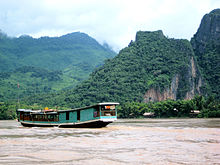
The key river of Southeast Asia, often called the lifeblood of the Indochina region, is the Mekong , that flows from China towards the South China Sea, passing five Southeast Asian countries on its way: Myanmar, Laos, Thailand, Cambodia, and Vietnam (the Mekong Delta ). In Cambodia, the Mekong creates the unique ecological phenomenon of the Tonle Sap lake. Also in Cambodia, around the town of Kratie , river dolphins can be found. The second-longest river of the region is the Salween , flowing mostly in Myanmar. An interesting river is the subterranean river of Puerto Princesa in the Philippines, with 8 km in length possibly the longest underground river in the world. Apart from Tonle Sap, other large lakes in the region include the densely populated Inle Lake of Myanmar, and Indonesia's Lake Toba , that is actually a huge volcano crater. In several places in Southeast Asia, rivers and lakes are used for floating markets or villages, with famous examples including the floating villages surrounding Siem Reap (Cambodia), and the floating markets of Thailand including Damnoen Saduak and of Indonesia including Banjarmasin .
Geological formations and landscapes of interest are plenty in Southeast Asia. Prime examples include the karsts of Vang Vieng in Laos, the chocolate hills of Bohol in the Philippines, and the caves and grottos of Phong Nha-Ke Bang in Vietnam. Interesting coastal and marine landscapes include the limestone rock formations of Ao Phang Nga in Thailand, and ocean karsts at Ha Long Bay in Vietnam and Raja Ampat in Indonesia. More information on spectacular beaches (including for surfing) and underwater life (for diving and snorkelling) can be found in the Do section below.

In addition to natural landscapes, also many agricultural landscapes in Southeast Asia are spectacular. The key crop in most of the region is rice, with five Southeast Asian countries in the world's top 10 of rice producing countries. Some regions that are known for their stunning rice terraces include the Cordillera region of the Philippines, the region surrounding Sa Pa in Vietnam, and the Indonesian island of Bali . The cultural landscape of Bali, including the traditional subak irrigation system dating back to the 9th century, is on the World Heritage List. Other common crops in Southeast Asia include coffee, tea, rubber, sugar, tobacco, and a wide variety of tropical fruits. Famous regions with extensive tea plantations include the Cameron Highlands of Malaysia, and the Puncak mountain pass area of Indonesia.
Museums [ edit ]

All of the larger cities in Southeast Asia boast a range of museums, with the capital cities standing out. The region's best-known culture and history museums include Singapore's National Museum (in Orchard ) and Asian Civilisations Museum (in Riverside ). Also most of the other capital cities have a National Museum focusing on the country's culture and history, including Bangkok ( Rattanakosin ), Jakarta ( Central ), Phnom Penh , Hanoi , Manila ( Ermita ), and Kuala Lumpur ( Brickfields ). Also in Brickfields, the Islamic Arts Museum Malaysia provides the largest collection of Islamic art in the region. The Vietnamese capital, Hanoi, also has several great culture and history museums, such as the Fine Arts Museum and the Vietnam Museum of Ethnology. The historical city of Malacca is home to the Baba & Nyonya Heritage Museum , which showcases the culture of the Peranakans, the descendants of 15th-century Chinese immigrants who married the local Malays.
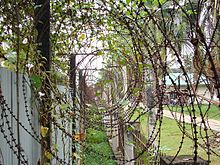
Throughout the region, there are museums commemorating specific events in the regional and local history . This includes for example the War Remnants Museum in Ho Chi Minh City on the Vietnam War, the Tuol Sleng Genocide Museum in Phnom Penh on the Cambodian genocide, the Aceh Tsunami Museum in Banda Aceh , Indonesia on the 2004 Boxing Day tsunami that killed about 250,000 people (more than half of them in Aceh), and the Resistance Museum in Dili on the East Timorese struggle for independence.
Among the key places to go for modern art collections are Singapore (for example the National Gallery in the Riverside district) and the town of Ubud in Bali, which boasts dozens of art galleries and museums.
Botanical gardens are plentiful throughout the region. The most extensive and well known among them include the Botanic Gardens in Singapore's North and West district, the Nong Nooch Tropical Garden near Pattaya in Thailand, and the Botanical Gardens of Bogor in Indonesia.
Archaeological sites and precolonial heritage [ edit ]

Southeast Asia has a huge number of archaeological sites , ranging from prehistoric remains of early humans that may be more than 1 million years old to great Hindu and Buddhist temples from the 8th to 14th centuries. Historic sights from the precolonial era are covered in this section, while colonial heritage is covered in the next section.
Three prehistoric archaeological sites in Southeast Asia are on the World Heritage List. The so-called Sangiran Early Man Site can be found near Solo in Indonesia, with fossils of early humans (related to the 'Java Man') that are estimated to be between 700,000 and 1,000,000 years old, possibly older. In Malaysia's Perak state, the Lenggong Valley contains four archaeological sites with tools, weapons jewellery and other equipment from various ages, and the 'Perak Man' skeleton. The archaeological site of Ban Chiang near Udon Thani in Thailand includes pottery that was painted red and dates to 2,000-4,000 years ago.

Nowadays, Hinduism in Southeast Asia is mostly limited to the Indonesian island of Bali , the Cham community of Vietnam , and the Indian communities of Malaysia , Myanmar , Thailand and Singapore , while Buddhism is concentrated in Indochina , Thailand and Myanmar and among overseas Chinese communities throughout the region. However, from about the 4th to the 15th centuries, Hinduism, Buddhism and a combined observance of both were adhered to by the vast majority of Southeast Asians, and this led to the construction of many Hindu and Buddhist temples across the region. Two world-famous Buddhist temples, and major tourist attractions, are Borobudur in Indonesia (8th-9th centuries) and Angkor Wat in Cambodia (12th century, and partly a Hindu temple complex). Major Hindu temples include My Son (4th-14th centuries) in Vietnam, Prambanan (9th century; near the Borobudur temple) in Indonesia, Preah Vihear (11th-12th centuries) in Cambodia, and Vat Phou (11th-13th century) in Laos. All of these temples are World Heritage Sites.
Other key historic sights in Southeast Asia from precolonial times include the Sukhothai Historical Park in Thailand that used to be the capital of the Sukhotai Kingdom (13th-15th centuries), the Pyu Ancient Cities in Central Myanmar (2nd century BCE to 11th century), the ancient town and trading port of Hoi An in Vietnam (15th to 19th century), and the ancient capital of Ayutthaya in Central Thailand (14th century). Myanmar also boasts the archaeological sites of Bagan and Mrauk U , which were once the great capitals of ancient kingdoms of the Bamar and Rakhine ethnicities respectively, and each home to literally thousands of ancient temples. Near the city of Mandalay is Inwa , which served as one of the last capitals of the Burmese kingdom before it was conquered by the British. Two famous old citadels can be found in Vietnam: the 11th-century Hanoi Citadel and the 14th-century Citadel of the Ho Dynasty in the Central Coast region. The Central Coast also boasts the city of Hue , the last capital of the Nguyen Dynasty, which continued to rule in name under French suzerainty until 1945.
Colonial heritage [ edit ]
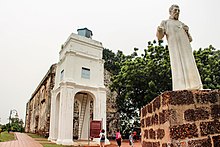
With the exception of Thailand, all Southeast Asian countries were under European colonial rule for varying lengths of time between the 16th and 20th centuries. As a result, there is a considerable colonial heritage in the region, including fortifications, infrastructure and buildings. Despite remaining independent, even Thailand did not escape European influence, and it too boasts several impressive European-style buildings.
One of the key historic towns of Southeast Asia is Malacca , the capital of the Malacca Sultanate that was subsequently under Portuguese, Dutch and British rule. Some of the highlights of Malacca include the Portuguese fortress A Famosa (1511) and St. Paul's Church (1521), and the Dutch Stadthuys (city hall, 1650). British colonial architecture can be found among others in Central Kuala Lumpur (such as the Government Offices built at the end of the 19th century) and in Singapore's Riverside area. Arguably the greatest concentration of British colonial architecture can be found in George Town and Yangon .
From 1619 to Indonesian independence, the capital of the Dutch East Indies was Batavia (present-day Jakarta ). A huge number of colonial remnants can therefore be found in the city, ranging from the Batavia City Hall (built 1707–1710, now the Jakarta History Museum) in West Jakarta to the Neo-Gothic Jakarta Cathedral (built 1891-1901) in Central Jakarta . Also throughout the rest of the Indonesian archipelago, virtually every city and town has sights from the colonial time, such as the 17th-century Fort Rotterdam in Makassar , the 18th-century Fort Vredeburg in Yogyakarta , and many early 20th-century Art Deco masterpieces in Bandung . In the early 19th century, the Great Post Road was constructed across Java , enabling quick trade and development of the entire island.
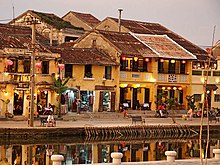
A large number of Catholic churches were built in the Spanish Philippines , with four baroque churches listed on the UNESCO World Heritage List (among others the San Agustín Church in Manila's historic centre and the Miagao church in Iloilo ). The historic town of Vigan is a Hispanic town well known for its cobblestone streets and unique mixed European-Oriental architecture. After the Philippines came under American rule, many Art Deco civil government buildings were constructed.
French colonial architecture can be found throughout former French Indochina . The former capital of Laos, Luang Prabang , is on the World Heritage List for its well-preserved blend of colonial and pre-colonial architecture. Similarly, the old towns of Hanoi and Hoi An in Vietnam have lots of buildings in French Colonial style, while its largest city, Ho Chi Minh City , is also home to several impressive French colonial buildings such as the Saigon Central Post Office, City Hall and the Saigon Opera House.
Other sights [ edit ]
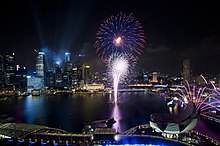
There are dozens of cities with a population of more than a million in Southeast Asia, and many of these have impressive cityscapes . The main modern city of the region is Singapore, whose Marina Bay area has a particularly recognizable skyline. The other main cities also have a large number of skyscrapers and office towers, notably Jakarta , Kuala Lumpur , Manila , Bangkok , and Ho Chi Minh City . The administrative capital of Malaysia, Putrajaya , is a planned city with a surreal mix of modernity and tradition.
Brunei is the only country of Southeast Asia that is a sultanate , and the residential palace of the sultan, Istana Nurul Iman , is considered the largest palace in the world. However, it is usually not accessible to the public, the exception being the second to fourth days of Hari Raya Aidilfitri (Eid al-Fitr), when the sultan holds an open house, exchanges greetings with male members of the public, and hosts the public to a free lunch. Throughout history, numerous sultanates have reigned over several parts of Southeast Asia, with some of the most powerful ones being the Mataram Sultanate (of which the remaining sultanates of Solo and Yogyakarta are successors) and the Malacca sultanate. Sultan palaces and related museums can be found throughout the region, especially in Malaysia and Indonesia.
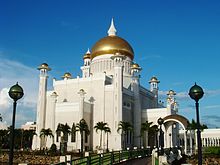
With Malaysia, Brunei, and Indonesia being majority Muslim countries, there are many mosques in the region. Prominent mosques include the Istiqlal Mosque in Central Jakarta (the largest mosque of the region, with a capacity of 200,000), the Blue Mosque in Shah Alam , and the Omar Ali Saifuddien Mosque in Bandar Seri Begawan .
War-related sights (apart from the museums mentioned above) can be found in most of the countries in the region. In Cambodia, the Killing Fields of Choeung Ek near Phnom Penh offer a reminder of the Cambodian Genocide. In Vietnam, there are many sights related to the Vietnam War, such as the Demilitarized Zone around the former border between North and South Vietnam, and the Cu Chi tunnel system. In Indonesia, there are numerous sights related to the War of Independence, such as the Monas national monument in Central Jakarta .
Visitors with an interest in military history can find many remnants from the Pacific War and the Indochina Wars .
Itineraries [ edit ]
- Banana Pancake Trail
- Bangkok to Ho Chi Minh City overland
Do [ edit ]
Water sports [ edit ].

- Scuba diving is a major draw for visitors to Southeast Asia, with Indonesia , Malaysia , the Philippines and Thailand all boasting world-class diving locations.
- Surfing is also an increasing popular sport especially in Indonesia (with Nias and Bali the top draws) and the Philippines .
- Sailing is popular, especially in Southern Thailand
- Try wake boarding at Southeast Asia's largest wake boarding centre in Camarines Sur , Philippines .
- Explore one of the world's longest underground rivers in the Puerto Princesa Subterranean River National Park located in Palawan , Philippines .
Massage [ edit ]
Southeast Asia, in particular Indonesia and Thailand , is well known throughout the world for its traditional massages. While the conditions of massage parlours vary, those in major hotels in touristy areas are usually clean, though you would generally pay a premium for them. Nevertheless, prices remain much lower than in most Western countries, with 1-hour massages starting from around US$5–20.
Sports [ edit ]
- Southeast Asian Games - Known in short as the SEA Games, it is held every two years among the 11 countries of Southeast Asia in odd-numbered years. It is structured similarly to the Olympics, albeit on a much smaller scale, and also features several sports that are only popular within Southeast Asia such as sepak takraw (essentially volleyball played with the feet instead of hands, known for its spectacular overhead kicks), and silat (a Malay martial art). The last edition was held in Cambodia in 2023, and the next edition will be held in Bangkok, Thailand in 2025.
Buy [ edit ]
Every Southeast Asian country has its own currency except for East Timor. The U.S. dollar is the official currency of East Timor , the unofficial currency of Cambodia and Laos , and (for larger payments) is widely accepted in some Southeast Asian cities. Euros are also widely accepted in the major cities, although rates are rarely as good as for dollars. Thai baht are widely accepted in the border regions of Cambodia , Laos and Myanmar . As Singapore is considered to be the main financial centre of Southeast Asia, Singapore dollars would generally be accepted in major tourist areas if you're in a pinch (and are legal tender in Brunei), though the conversion rate might not be very favourable. Exchange rates for Southeast Asian currencies tend to be very poor outside the region, so it's best to exchange (or use the ATM) only after arrival. Alternatively, Singapore and Hong Kong have many money changers who offer competitive rates for Southeast Asian currencies, so you might plan to spend a night or two in transit for you to get your money changed.
When bringing U.S. dollars, ensure that your bills are in pristine condition. Outside Singapore, even slight creases in U.S. dollar bills will cause them to be rejected by most shops and money changers, and even those that accept them will give you a far worse rate.
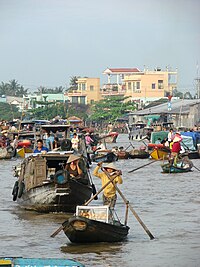
Costs [ edit ]
Southeast Asia is cheap , so much so that it is among the cheapest travel destinations on the planet . US $20 is a perfectly serviceable daily backpacker budget in most countries in the region, while the savvy traveller can eat well, drink a lot and stay in luxury hotels for US $100 per day.
Some exceptions do stand out. The rich city-states of Singapore and Brunei are about twice as expensive as their neighbours, while at the other end of the spectrum, the difficulty of getting into and around underdeveloped places like Myanmar , East Timor and the backwoods of Indonesia drives up prices there too. In Singapore in particular, the sheer scarcity of land drives accommodation rates up and you would be looking at more than US $200 per night for a four-star hotel. Also, many countries in the region do not list taxes and service charges in their advertised accommodation prices so your actual room rate is up to 20% more than the what you see in search engines.

Shopping [ edit ]
Southeast Asia is a shopping haven, with both high end branded goods and dirt cheap street goods. The most popular city for shopping in Southeast Asia is Bangkok , although Jakarta , Kuala Lumpur , Manila , Ho Chi Minh City and Singapore all have extensive arrays of exclusive shopping malls stocked with haute couture labels. On the other end of the spectrum, street markets remain a part of daily life (except in Singapore) and are the place to go for dirt cheap or counterfeit items. Some towns like Chiang Mai in Thailand and Ubud in Bali, Indonesia are well known for enormous markets selling traditional artworks, and it's often possible to buy directly from local artists or have dresses, jewellery, furniture, etc., made to order.
Clothes and accessories of international brands are usually just as expensive as in developed countries, or even more expensive. Branded products that seem considerably cheaper (such as Polo Ralph Lauren shirts in Indonesia ) are typically counterfeit , even when they are not sold in the streets but in a legit-looking shop or air-conditioned shopping mall. If you need a good compromise between low price of street sold items and the quality of branded products, look for stores of domestic brands such as Malaysia 's F.O.S or Philippines ' Bench.
For slightly higher-end gifts, Malaysia's Royal Selangor is the world's foremost manufacturer of pewter products.
Bargaining [ edit ]
Bargain in public markets and flea markets where prices aren't fixed. Southeast Asians actually will give you a bargain if you make them laugh and smile while naming your price; if they don't, try saying bye bye and smile and maybe the vendor might change his mind and give you a discount. When bargaining for simple things like watches, sunglasses, and shoes remember that these are often marked up hugely and, given some bargaining skill, can often be brought down to something like 20% of the asking price. If you can't seem to get them down to a reasonable price, then you're doing it wrong. See Bargaining for more tips.
As a rule of thumb, if a price is not explicitly posted, you need to haggle for it. However even posted prices can often be haggled down as well.
Eat [ edit ]

Southeast Asian cuisine reflects the countries' diverse history and culture. It can be roughly split into Mainland Southeast Asia (Thailand, Vietnam, Cambodia, Laos and Myanmar ) and Maritime Southeast Asia (Malaysia, Singapore, Brunei , Indonesia, East Timor ), and even then still differs considerably from area to area. Chinese and Indian influences have been fused with local ingredients, techniques and tastes in many parts of Southeast Asia. The Philippines ' food culture is the most varied due to their additional influences from Spain and America .
Street vendors or hawkers are a culinary cornerstone of the region, offering wonderful food at a very inexpensive cost; if you're scrupulous about hygiene, go for the char-grilled, deep-fried or boiled-silly options. Thai and Vietnamese dishes like the ubiquitous pad Thai and beef pho have been widely exported around the world after the Vietnam War, followed closely by Malaysian restaurants, but a common refrain is that they simply cannot compare with a fresh bowl served by the roadside. Singapore probably serves as the easiest introduction to street food, though Bangkok and Penang have the better hawkers, with Ho Chi Minh City not far behind.
Rice is the main Southeast Asian staple, with noodles of all sorts an important second option. It's common to take a rich soupy bowl of noodles or some congee (rice porridge) for breakfast. Roti canai in Malaysia , known as roti prata in Singapore , is based on the South Indian parotta (layered flatbread) while Vietnam, Cambodia and Laos have a fondness for French-influenced baguettes courtesy of their colonial history, epitomised by banh mi (Vietnamese sandwich), though they often use a combination of wheat and rice flour to make them.
Love of the spicy chilli is also shared throughout the region, and many of its most famous dishes incorporate chilli whether as a core ingredient or as a separate garnishing, from Thai curries and tom yum soup to the Indonesian beef rendang to Malaysia's assam laksa to Cambodia 's amok . The unsuspecting diner may end up downing glass after glass of water to try and quench the burning sensation, but the local advice is to drink hot tea instead. Asking the cook to tone down the spiciness will not always work, and often your eyes will water when eating an adjusted version even as nearby locals happily slurp down their meals. Chilli is just one of the many spices used in Southeast Asian cooking, with lemongrass, tamarind and cloves popular choices to lend strong aromatic flavours to dishes.
Living next to seas and rivers, seafood is a crowd favourite. Fish and prawns feature prominently, with fermented fish sauce and shrimp paste frequently used in everyday cooking, although shellfish such as Singapore chilli crab is much more expensive and usually saved for special occasions or enjoyed by the well-off.
A variety of delicious fruit is available everywhere in all shapes and sizes, and pretty much all year round thanks to the tropical weather. Mangoes are a firm favourite among travellers. The giant spiky durian , perhaps the only unifying factor between Southeast Asia's countries, is infamous for its pungent smell and has been likened to eating garlic ice cream next to an open sewer. Other distinctive Southeast Asian fruits are the purple mangosteen, the hairy rambutan and the jackfruit-like cempedak , whose exteriors hide juicy fleshy insides. Pay attention to what's in season for better taste and prices.
Fine dining is increasingly an option in the more developed countries of Southeast Asia. Bangkok is generally considered to have the best fine dining scene in Southeast Asia, with Singapore not too far behind, and Ho Chi Minh City rapidly catching up, though there are also good options to be found elsewhere. Although fine dining is far out of the reach of the average working class Southeast Asian, with the notable exception of Singapore, prices tend to be a lot more affordable than food of a similar standard in Western countries and East Asia.
Western restaurant review websites such as Yelp are not generally reliable for South East Asian countries, as locals do not often post reviews there. Instead, there are local review websites that cover South East Asian countries, such as Eatigo , Openrice and Zamato . Some countries have their own domestic apps that are generally the most reliable within those countries, with the obvious caveat that almost all reviews are only in the local language; examples include Wongnai in Thailand and Foody in Vietnam .
Drink [ edit ]
Rice-based alcoholic drinks — Thai whisky , Tuba , lao , tuak , arak and so on — are ubiquitous and potent, if rarely tasty. In some areas, notably the Philippines, rum is also common, made from the local sugarcane. As a rule of thumb, local booze is cheap, but most countries levy very high taxes on imported stuff.

Beers are a must try in Southeast Asia, and are often very inexpensive. Check out San Miguel (Philippines), Singha, Chang beer (Thailand), Bir Bintang, Angker Beer (Indonesia), Tiger Beer (Singapore and Malaysia), Saigon Beer, Hanoi Beer, Huda Beer, 333 Beer, Bia hơi (Vietnam), Beerlao (Laos), Angkor and Angkor Stout (Cambodia). Lager is by far the most popular style, although stout (especially Guinness) is also popular and the larger cities have plenty of microbreweries and imported brews. Beer in SE Asia is primarily consumed by locals to simply get drunk, and not for taste. As such, by Western standards, most locally produced SE Asian beers are often of comparable quality to a low-end Western beers. Don't be surprised by the local habit of adding ice to your beer: not only does it help keep it cool, but it dilutes the often high alcohol content (6% is typical) as well.
Hampered by heavy taxation and a mostly unsuitable climate, wine is only slowly making inroads, although you can find a few wineries in central and northern Thailand, Bali, and Vietnam. Don't buy wine in a restaurant unless you're sure it's been kept properly, since a bottle left to simmer in the tropical heat will turn to vinegar within months. The exception is the former French colonies of Laos and Cambodia which have a respectable collection of vintages available in the larger cities of Vientiane and Phnom Penh .
Nearby Australia exports a good deal of wine to this region; it will be found mainly in high-end hotels or restaurants, though places catering to the budget/backpacker part of the tourist trade may have some as well. The cheap local restaurants generally will not have any.
Fruit juices and coconut water are widely available, especially among Muslims, and in other communities where alcohol is not customary.
Tea and coffee are available in different regional styles throughout Southeast Asia. Vietnamese coffee and Thai tea are some prominent examples, as is teh tarik of the Indian Muslim community in Malaysia and Singapore. The Australian chocolate malt drink Milo is also popular in Singapore and Malaysia.
Stay safe [ edit ]
Generally speaking the traveller trail in Southeast Asia is perfectly safe, but there are low-level insurgencies in the remote areas of Indonesia , Myanmar , the Philippines , Thailand , and East Timor .
Violent crime is rare in Southeast Asia, but tourists have been attacked in beach resorts in a few isolated but well publicised cases.
Opportunistic theft is more common, so watch out for pickpockets in crowded areas and keep a close eye on your bags when travelling, particularly on overnight buses and trains.
Major dangers are very poor road safety, as well as little or no oversight of physical activities such as white water rafting and bungee jumping.
In 2004 an Indian Ocean tsunami killed an estimated 230,000 people, with Thailand and Indonesia 's Aceh province being severely affected. Many foreign tourists were injured or killed in this very rare yet very dangerous event.
While plenty of narcotics are produced, distributed and consumed around the region, most countries (especially Thailand, Singapore and the Philippines) have harsh penalties for possession of small amounts, and capital punishment for organized drug trafficking. Neither foreign citizenship nor bribes will save visitors from sentences.
Stay healthy [ edit ]
Singapore and Thailand are two of the world's main medical tourism hubs. In Singapore, the healthcare system is of a high standard in both government and private hospitals, though prices are also the most expensive in Southeast Asia (but cheaper than most Western countries). Healthcare costs in Thailand are much cheaper than in Singapore and Western countries, making it a popular medical tourism destination for people on tight budgets. While private hospitals in general conform to international standards, and some private hospitals in Bangkok are widely regarded as among the best in the world, public hospitals often leave much to be desired.
Malaysia and Brunei in general have high standards in both private and public hospitals. In the Philippines , while the standard of care is uniformly good at both public and private hospitals in Manila, conditions are often bad in rural areas and smaller cities. In Vietnam and Indonesia , while public hospitals most certainly lag far behind the standards of the West, there are internationally accredited private hospitals in the major cities that are run to international standards. Myanmar , Laos , Cambodia and East Timor generally have poor healthcare standards, so you will almost certainly want to travel to Thailand or Singapore for any major procedures; ensure that your insurance covers this.
The Joint Commission International accredits hospitals internationally based on U.S. standards; though you will be paying a premium for these hospitals, you can ensure that the care and treatment you receive will be aligned to Western standards.
Respect [ edit ]
You may be asked to take off your shoes quite often, especially when entering temples, mosques or guesthouses. Wear shoes that can be slipped on and off easily, particularly if you're planning to visit a lot of temples, and make sure your socks aren't full of holes. At Buddhist temples, the areas where you have to go barefoot differ by country; in Myanmar, you will have to take your shoes off before entering the entire temple complex, while in Thailand, you are only required to take your shoes off before entering temple buildings.
- Has custom banner
- Has mapframe
- Maps with non-default alignment
- Maps with non-default size
- Has map markers
- Articles with dead external links
- Has Geo parameter
- All destination articles
- Usable regions
- Usable articles
- Region articles
- Regions with more than 9 subregions
- Pages with maps
Navigation menu

15 Best Places to Visit in Southeast Asia
Written by Diana Bocco Updated Jul 13, 2022 We may earn a commission from affiliate links ( )
The countries that fall in the Southeast Asia region have so much going for them, it's almost impossible to keep them off anybody's travel bucket list . From white, soft beaches and major cities to the rich history, culture, and the must-try food, this part of the world has something for everybody.
While some destinations, such as Thailand's beaches and islands and the majestic Angkor Wat in Cambodia, are known everywhere, some places in Southeast Asia remain more elusive and off the main tourist radar. This gives visitors a chance to mix things up – to go with the crowds to see the most popular spots, but also make time to discover new and different corners of Southeast Asia.
Whatever your heart is set on, here is a list of the best places to visit in Southeast Asia.
1. Angkor Wat, Cambodia
2. ha long bay, vietnam, 3. koh samui, thailand, 4. boracay, philippines, 5. bagan, myanmar, 6. kuala lumpur, malaysia, 7. bangkok, thailand, 8. singapore, 9. yangon, myanmar, 10. luang prabang, laos, 11. palawan island, philippines, 12. tegalalang rice terraces, bali, 13. komodo island, indonesia, 14. chiang mai, thailand, 15. hanoi, vietnam, map of places to visit in southeast asia.
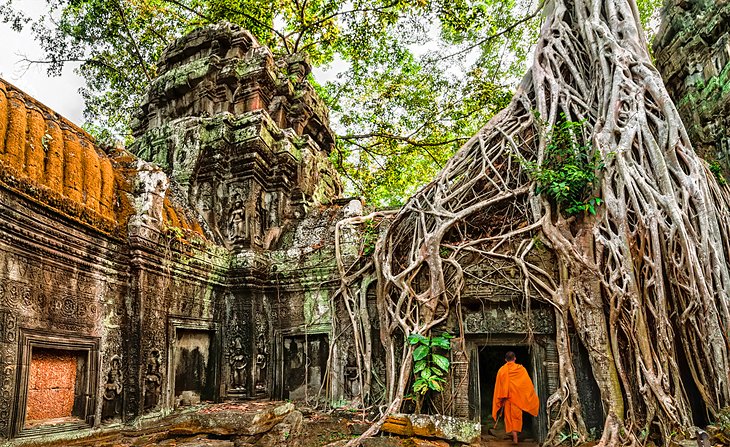
Located in northwestern Cambodia, the city is best known for being the gateway to the Angkor region, but Siem Reap has much to offer on its own. A mix of Chinese and colonial architecture gives the city a unique vibe, where countryside residents and old motorbikes blend with a vibrant café culture and a modern club scene.
Siem Reap is home to two important museums: The Cambodia Landmine Museum and Relief Center , which offers a chance to learn more about landmines and their ongoing impact on Cambodia and other Asian countries, and the War Museum , which covers the involvement of Cambodia in several wars.
There are also a number of massive markets in the city, including Psah Chas, which caters to both locals and tourists with a variety of souvenirs, fresh food, and more.
Angkor Wat , the largest religious monument and one of the top World Heritage Sites , lies less than six kilometers north of Siem Reap. The ruins of this 12 th -century temple complex cover a space of over 162 hectares, with hundreds of structures built using sandstone blocks. There are a number of other temples, also built in Khmer style, in the area, including Angkor Thom, Ta Prohm, and Pre Rup.
- Best Places to Visit in Cambodia
- Top-Rated Tourist Attractions in Siem Reap
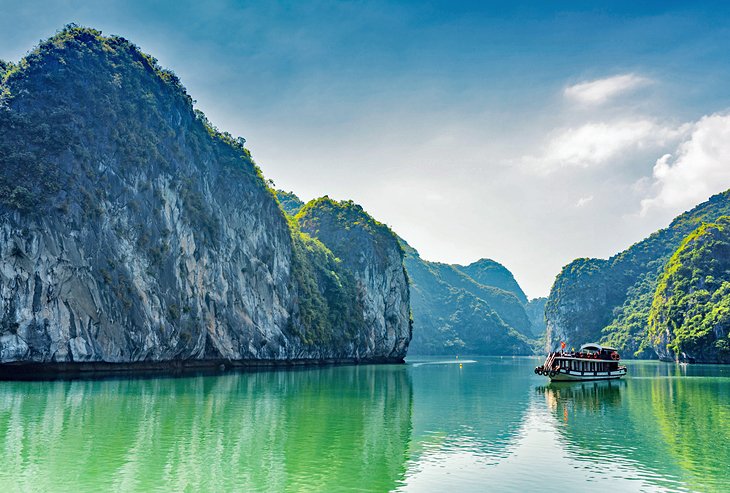
Ha Long Bay consists of a group of islands and limestone karsts that have been declared a UNESCO World Heritage Site . Many of the islands are actually tall monolithic cliffs that cannot be walked on, covered in green, lush jungle. Some of these are hollow and house beautiful caves. Dau Go Cave (Wooden Stake Cave) is a good example, a massive cave with three main chambers, multicolored stalagmites, and rock paintings. Many of the islands also have their own enclosed lakes.
Of the almost 2,000 islands here, less than 40 have permanent residents, often in the form of small communities that live in floating houses and fishing villages.
Ha Long Bay's largest island, Cat Ba , is the most common overnight stop for tourists coming to Ha Long Bay for cruises and tours. Kayaking the turquoise-green waters of the bay is a popular activity here, as well as cruising the bay in traditional junk boats.
- Read More: Things to Do in Halong Bay
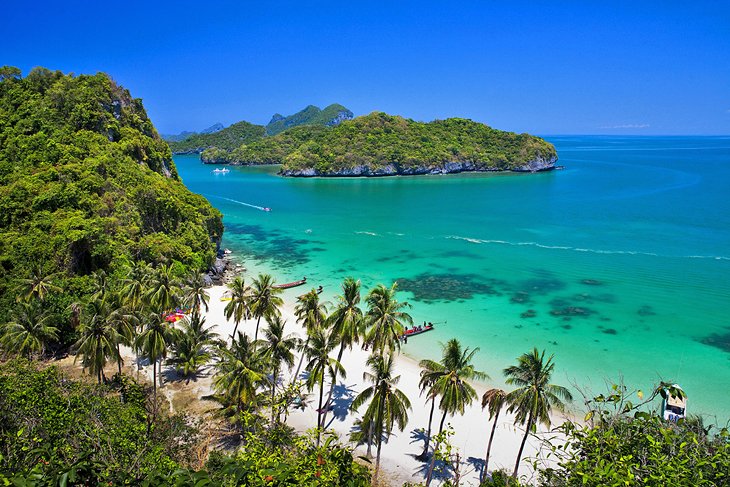
While Koh Samui has always been a beloved destination for sun worshippers and snorkelers, the crowd the island attracts has changed over the years.
Once a favorite of backpackers, Koh Samui has undergone a remarkable transformation. It now boasts high-end resorts, posh spas, and some of the whitest palm-fringed beaches in Thailand. Chaweng and Lamai beaches attract the bulk of the travelers and are well developed, clean, and full of activities, including opportunities to sail, scuba dive, and swim.
While most visitors come to Koh Samui for the beach , there's much more to see and do. Take time to explore the mangroves and hidden lakes of Ang Thong Marine National Park ; the 12-meter-tall golden Buddha at the hilltop Big Buddha shrine; and the Na Muang waterfalls, reached after a trek uphill through thick tropical forest.
Read More: Top-Rated Attractions & Things to Do in Koh Samui
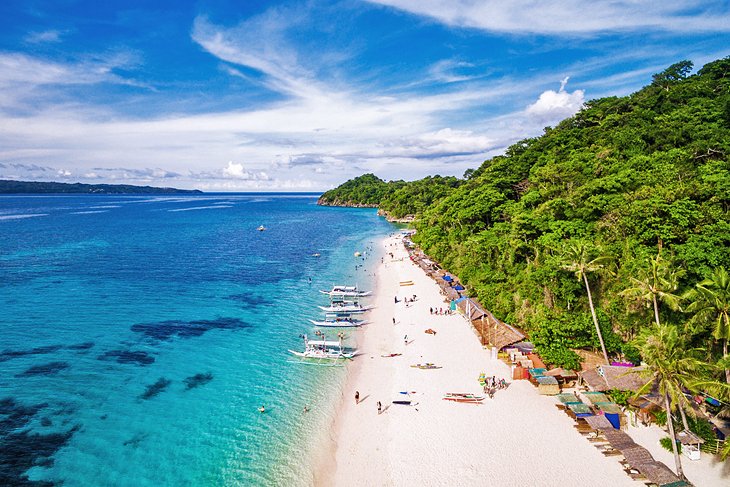
The tiny island of Boracay is just across the water from Panay Island, one of the Philippines' largest islands. Despite being only 10 square kilometers in size, Boracay attracts thousands of visitors a year, who come here for the four-kilometer-long beach and its powdery white sands that wash right into the turquoise waters and the sailboats rocking away on the waves. This is one of the best beaches in the Philippines .
In addition to scuba diving and snorkeling, Boracay is well-known for its parasailing, kiteboarding, and swimming-and, perhaps more unexpectedly, its cliff diving . Diving boards ranging from three to 15 meters high over the water are placed on certain parts of the island, with lifeguards waiting and watching as divers fly up in the air over the mirror-like waters below.
- Read More: Top-Rated Tourist Attractions & Things to Do in the Philippines
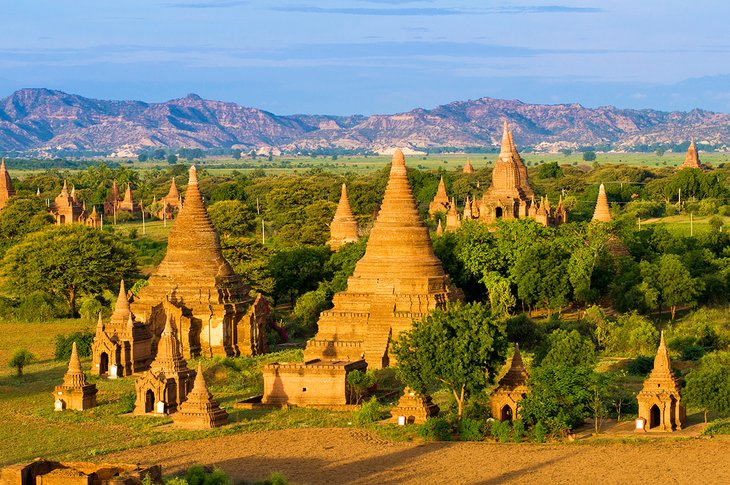
A UNESCO World Heritage Site , the ancient city of Bagan was once the capital of the first kingdom of Myanmar. Between the 11th and 13th century, over 10,000 pagodas and Buddhist temples were built here. Over 3,500 still stand today in the area known as the Bagan Archaeological Zone, which spreads over 41 square kilometers.
One of the most famous temples in Bagan is the Ananda Temple , a Buddhist temple built in a unique fusion of Mon and Indian styles. Dhammayangyi Temple , the largest religious structure in Bagan, is visible from all corners of the city and is famous for its mysterious bricked up interior.
The Bagan Archaeological Museum , located within the Archaeological Zone, is home to artifacts recovered from the area, such as stucco works, lots of lacquer and metal artifacts, and stone sculptures, including a Rosetta Stone dating back 1,000 years.
Just outside the Bagan Archeological Zone sits the sleepy village of Myinkaba, famous for the ancient art of lacquerware. Visitors can stop by workshops to see items being painted by hand, and then grab some souvenirs at the many shops around.
For the most famous sunset-viewing spot in town, head to the white Shwesandaw Paya pagoda. Here, you can climb part of the building to catch the 360-degree views over the hills and other temples around.
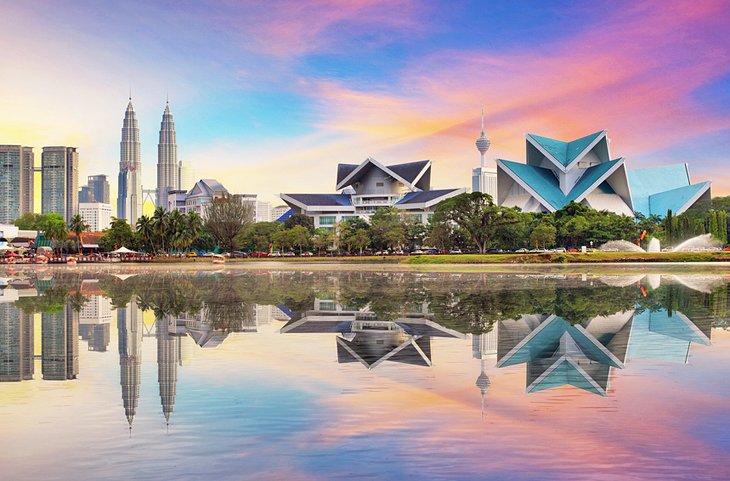
Malaysia's capital is a city of contrasts: the cultural and financial heart of the nation, with magnificent skyscrapers and three of the world's largest shopping centers-but also a great example of colonial architecture, Malay Islamic details, and old Chinese shophouses. Walking through the city is a great way to appreciate the eclectic look of this relatively new Asian capital and see the different cultures and styles melting into each other.
KL is home to the tallest twin buildings in the world , the Petronas Towers – architectural marvels of steel and glass that stand 452 meters tall. The towers are surrounded by a large urban park and are home to a massive shopping center with over 350 stores, a theater housing the Malaysian Philharmonic Orchestra, and even an underwater aquarium.
KL is a very green city, with many parks, gardens, and open spaces everywhere you go. The 92-hectare Lake Gardens is a major urban park that contains a butterfly park, the world's largest aviary bird park , and an orchid garden. You'll also find three forest reserves within the city, perfect for trekking and catching sight of rare fauna.
The limestone Batu Caves (which contain several Hindu shrines); the Cameron Highlands with its tea plantations ; and the colorful town of Malacca, established by Portuguese settlers, are all great day-trip destinations from Kuala Lumpur.
- Top-Rated Tourist Attractions in Kuala Lumpur
- Top-Rated Tourist Attractions in Malaysia
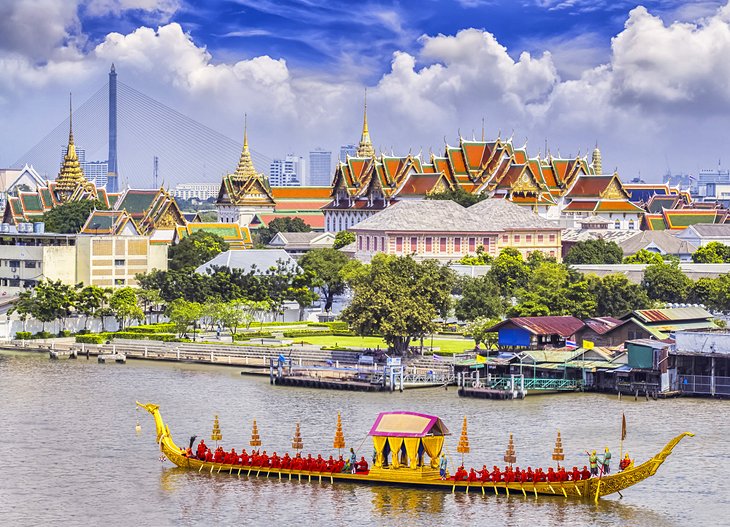
Thailand's capital has lots going for it. Not only is this the main gateway for all major destinations within the country, but this cosmopolitan city also has much to offer on its own. With over 24 million visitors arriving here every year, this is also one of the top cities in the world to visit .
Sitting right on the Chao Phraya River and full of stunning skyscrapers that share the sidewalk with major Buddhist temples and popular cafés and hangouts, Bangkok's multi-faceted sights will please a wide range of visitors, from those looking for excitement and shopping opportunities, as well as those wanting to dive into cultural and historical landmarks.
Even tourists who are only here briefly on their way to the islands should make time to visit the Grand Palace , a former royal residence converted into a museum. For those with more time in the capital city, the royal Vimanmek Mansion (the largest teak building in the world) and the Jim Thompson House, a museum dedicated to the American businessman who revolutionized the local silk industry, are also worth a visit.
For a completely different view of the city, get on a classic tuk-tuk taxi or jump on a water bus.
- Read More: Top-Rated Tourist Attractions in Bangkok
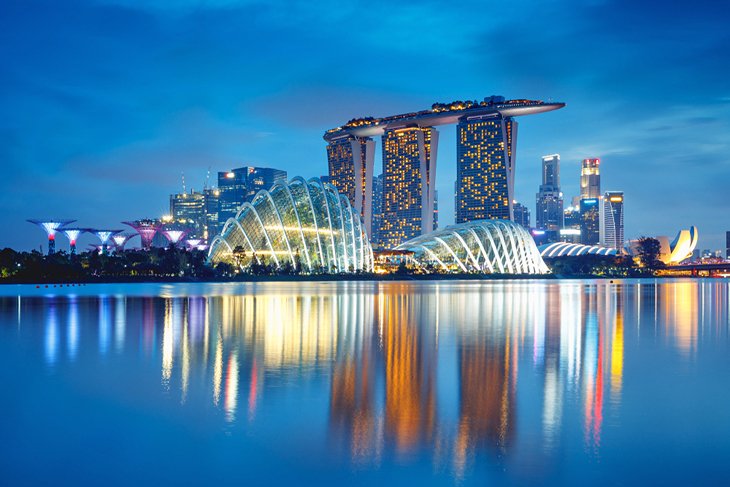
Singapore is a unique spot in Southeast Asia. This island city-state is modern and cosmopolitan , a place where multi-story shopping centers mix with stunning and unexpected natural attractions.
The Marina Bay Sands , an integrated resort, is a good example of that-it offers not only a hotel, but also a museum, art-science exhibits, and the best terraced views over the city and bay from the infinity pool set on their roof.
Sentosa Island is another example, an entertainment complex that includes everything from a two-kilometer-long beach and a restored coastal fort to Southeast Asia's first 4D theater, a Butterfly Park and Insect Kingdom, and even a Universal Studios Singapore theme park.
Singapore's airport has been named the best in the world, and it's an attraction all in itself, home to the world's tallest indoor waterfall, a five-story tall indoor garden, a mirror and haze maze, and a massive butterfly garden with over 1,000 species flying free in tropical greenery.
- Top-Rated Tourist Attractions in Singapore
- Best Beaches in Singapore
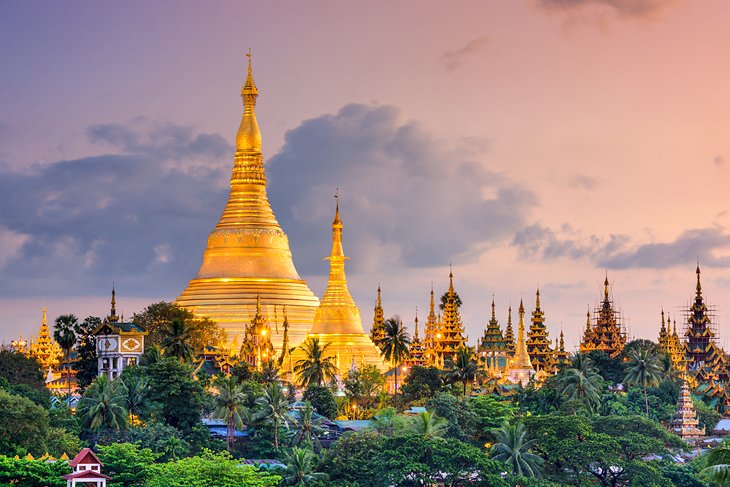
Up until 2011, Myanmar offered only limited access to tourists because of the five-decade-long military dictatorship that commanded the country-so now that it's finally possible to visit, and before it becomes crazy busy with tourists, you definitely should see this fascinating destination.
Yangon was the capital of Myanmar (or Burma) until 2006, when the military government moved it somewhere else. Since the country was under military dictatorship for so long, the city suffered a lot of issues and still boasts a lot of buildings in decay and with inadequate infrastructure.
Still, Yangon is full of beautiful architecture in the form of colonial-era buildings centered around the 2,600-year-old Sule Pagoda . It is the gilded Shwedagon Pagoda (also known as the Golden Pagoda) that dominates the skyline of the city, however-the most sacred Buddhist pagoda in the country, believed to contain relics of the last four Buddhas.
Visitors should make time to visit the Bogyoke Aung San Market , where stalls sell everything from antiques and local handicrafts to Burmese jade, local delicacies, and even natural medicine products. Another great must-do is the Yangon Circular Train , which runs on a 46-kilometer-long loop around Yangon, offering a unique insight into the real daily life of Burmese people.
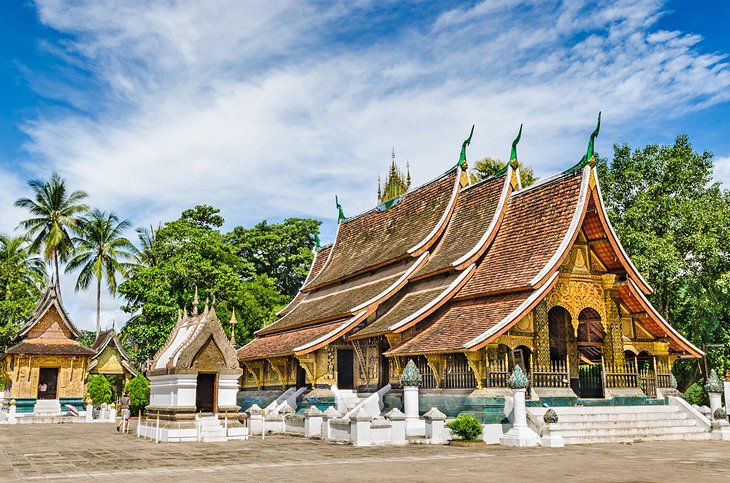
This northern city in Laos is surrounded by a number of villages that together form the UNESCO Town Of Luang Prabang World Heritage Site . Recognized for its mix of rural, French colonial, and religious architecture and heritage, the city is one of Laos' most visited and certainly most beautiful.
Luang Prabang sits at the confluence of the Mekong and Nam Khan rivers and is home to many temples-including Wat Chom Si shrine, located at the top of Mount Phou Si and overlooking the town. Alms ceremonies (where monks take to the streets to ask for food) are so common here that in the early morning, the entire town is covered in streams of orange as the monks make their way through the streets.
Just outside the city, the Bear Rescue Centre (which specializes in helping sun bears rescued from poachers) and the multi-tiered Kuang Si Falls are both worth a visit. If you're up for some trekking, head out to the Pak Ou Caves , famous for their hundreds of miniature Buddha sculptures.
Read More: Top-Rated Tourist Attractions & Things to Do in Laos
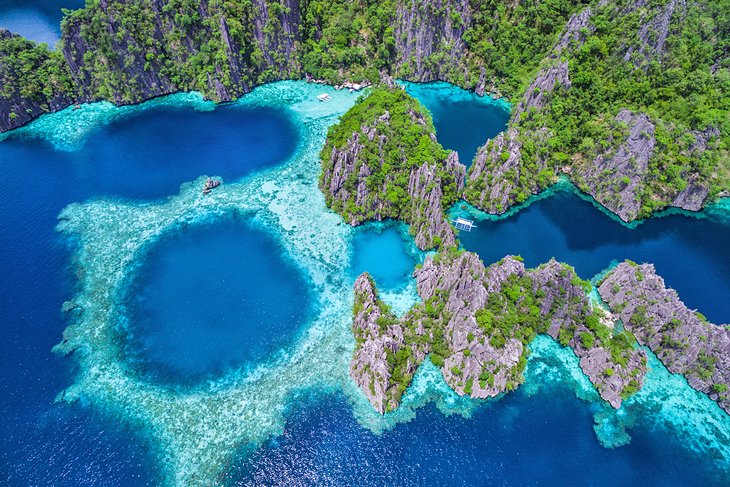
Palawan has been named one of the most beautiful islands in the world so many times, it's hard to ignore its beauty. Technically speaking, Palawan remains under-developed, which means fewer high-end hotels but also slow, sustainable growth to protect the virgin forests, green jungle mountains, and wonderful wildlife.
Palawan is surrounded by quiet turquoise waters that are ideal for snorkeling, swimming, and kayaking. Lots of smaller islands dot the ocean around Palawan, and you can spend an entire day island-hopping and still not see all the amazing beauty the area has to offer.
Miniloc Island , a rustic escape northwest of Palawan, is home to a number of lagoons and soft sandy beaches you can reach on your own or via a motorized water taxi.
For those who prefer underwater adventures, the waters around Palawan hold six shipwrecks of coral-encrusted Japanese ships sunk during WWII. Divers can slip in and out of the engine rooms, bomb holes, and portholes, swimming with fish and turtles-some of the wrecks are as deep as 42 meters.
- Read More: Best Places to Visit in the Philippines
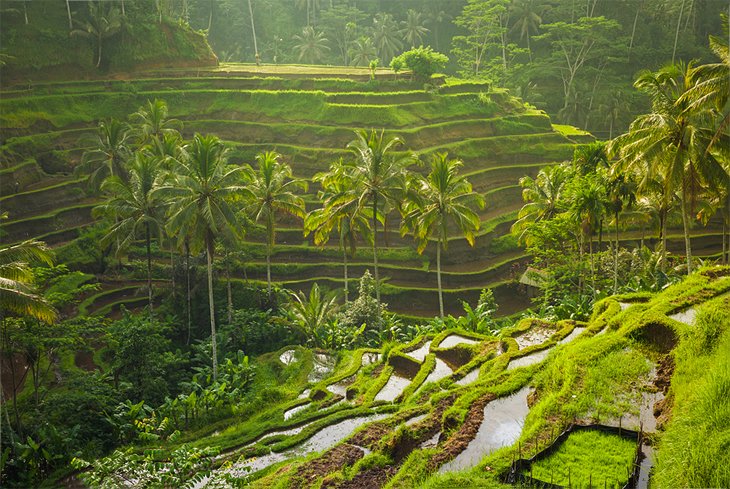
Say "Bali" and people think soft white beaches, corals, and snorkeling-and while it's true that Bali has plenty of beautiful destinations on the sand (including the Nusa Penida beach, with cliffs that resemble the head of the T-Rex), that's not all you can see here. In fact, the lush, green, terraced rice fields in the province of Ubud are just as stunning.
Bali's farmers have been setting rice paddies on terraces for centuries to deal with the hilly terrain of the area-and these areas make for stunning landscapes.
For a donation entry fee that equals pennies, visitors can walk the terraces here for hours, as the green fields extend far beyond what the eye can see. Those who arrive early in the morning will have the place almost to themselves, the soft sound of the rice fields swishing in the wind.
Visitors to Ubud can also check out the Ubud Monkey Forest ; a macaque sanctuary; the traditional royal palace Puri Saren Agung; and the gardens of Pura Taman Saraswati, a water temple famous for its lotus pond and volcanic tuff sculptures of deities.
- Read More: Top-Rated Tourist Attractions in Bali
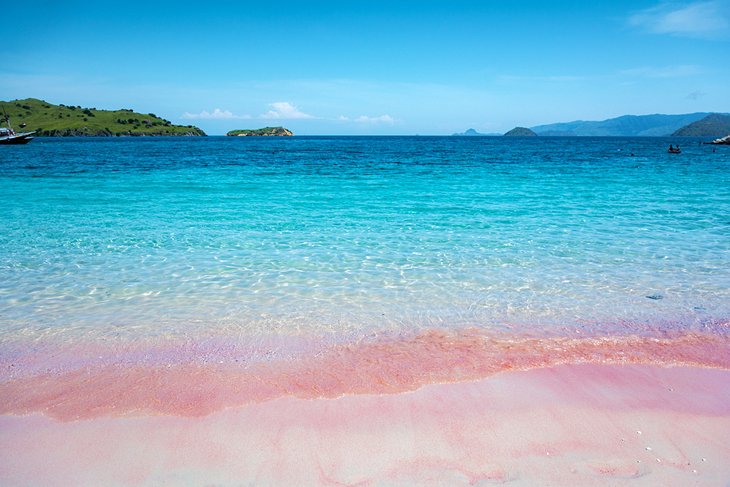
Komodo Island is more than "just one" of the over 17,000 islands that make up Indonesia. This rugged island of just under 400 square kilometers is home to the world's largest lizard , the Komodo dragon. In fact, the population of Komodo dragons here is double the population of permanent human inhabitants, making for a unique sight as you walk through the island's volcanic hills and forests.
Komodo Island is also home to a wide variety of wet ecosystems, including mangrove forests and coral reefs, both of which attract lots of travelers looking to explore, dive, or kayak around the island.
The main sightseeing attraction here, however, is Pantai Merah , one of only seven pink-sand beaches in the world. The cotton-candy sands are the result of an interesting natural phenomenon-when microorganisms, called foraminifera, that live in the coral die, their bright red shells are washed out on the beach and mix in with the white sand, creating the beautiful hue that attracts so many visitors.
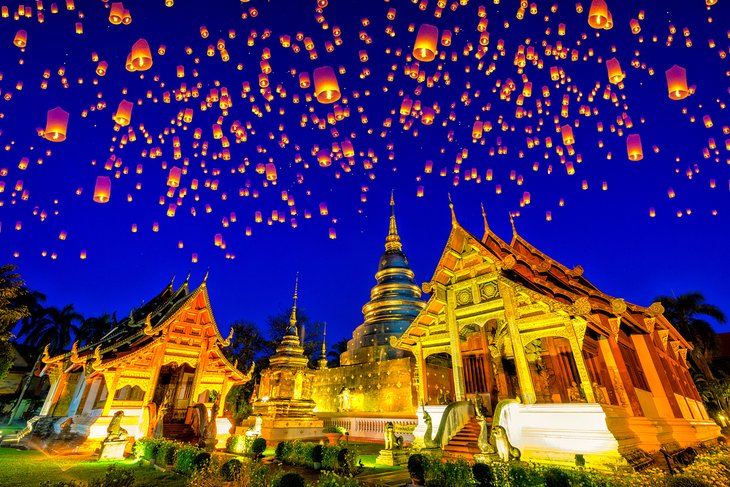
Thailand's northern city of Chiang Mai is often referred to as the cultural capital of the country. Once the seat of the former Lanna Kingdom, Chiang Mai is teeming with centuries-old temples, jungle-shrouded sanctuaries, and mountains in every direction.
A smaller and less chaotic city than Bangkok, Chiang Mai still attracts travelers from all over the world who come for the low-key lifestyle, nature, history, culture, restaurants, and budget-friendly hotels.
Backpackers often make Chiang Mai a main stop on their Thailand travels, as prices are much more attractive than down south on the beaches, and Chiang Mai is a jumping-off point from which to explore the various smaller hill communities that dot the mountains.
One of the must-see temples in Chiang Mai is Wat Phra That Doi Suthep, a golden hilltop shrine that overlooks the entire city below. One of the most sacred spots in Thailand, this temple complex is simply stunning. Visit just before sunset when the monks begin to chant. It is the most magical time to be at the temple.
From Chiang Mai, travelers often set out to explore Mae Hong Son province to the northwest, one of Thailand's most historic provinces, known for its smaller villages and ancient tribal communities.
Accommodation: Top-Rated Places to Stay in Chiang Mai
Read More: Top-Rated Attractions & Things To Do in Chiang Mai
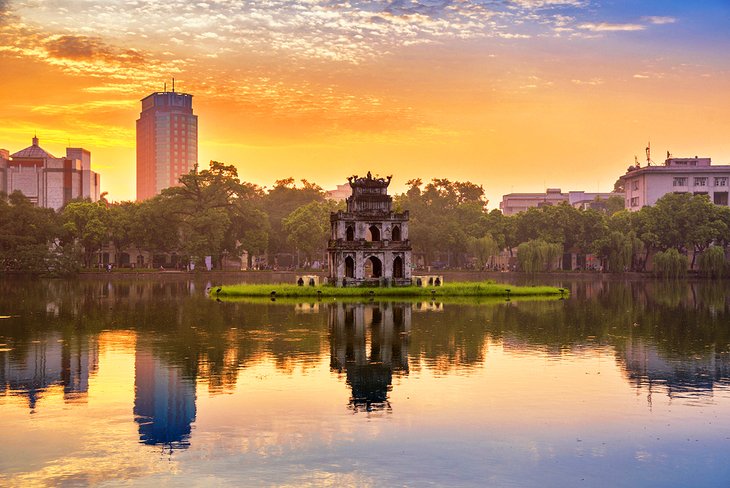
Vietnam's capital sits at an unusual precipice between historic and modern. The thriving city only opened to tourism as recently as the 1990s. Today, Hanoi is a buzzing, chaotic, energetic, beautiful amalgamation of ancient history, a war-torn past, and a modern future. It's one of the best places to visit in Vietnam to really learn about what makes the country tick.
Start in the old quarter, where you will find a heady mix of street vendors, cafés, restaurants, and more motorbikes than you can possibly count. But in between the zipping, zooming, pulsing chaos are pockets of tranquility and peace. Take Hoan Kiem Lake, for example, a 12-hectare lake in the heart of the historic city center. Around the lake are beautiful pagoda gateways, one of which is How Phong Pagoda, one of Hanoi's must-see sites .
The Temple of Literature is one of the most beautiful buildings in the city, too. It is a Confucian temple that was built as a university that dates back to the 11th century. Hanoi is also the city where visitors will find the tomb of Ho Chi Minh, the Hoa Lo Prison Museum, and the Military History Museum.
More Related Articles on PlanetWare.com
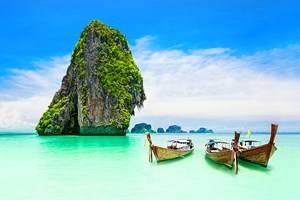
More Great Destinations in Southeast Asia: When it comes to choosing the best places to visit in SE Asia, the list is long and the decision can be tough. If you are traveling through Thailand , consider heading up to Chiang Mai or head over to the Andaman Sea to explore places like the Phi Phi Islands or Phuket , and the beautiful beaches in Krabi .

More on Thailand
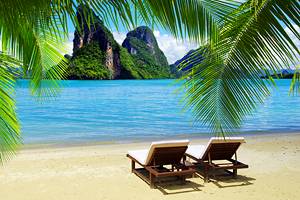
Deals of the Week All of Europe's finest Up to 50% OFF
South East Asia Tours & Trips
- South East Asia 2 week
- South East Asia River Cruise
- South East Asia 3 week
- South East Asia Adventure
- South East Asia Group
250+ South East Asia tour packages with 43,213 reviews
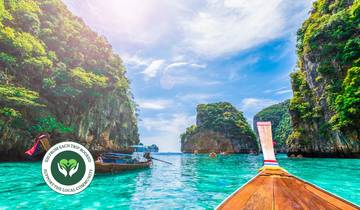
- Christmas & New Year
Spirits Of Vietnam - Cambodia - Thailand In 16 Days
Everything was good ,tour guides were great and helpful .
- Book With Flexibility This operator allows you to rebook your dates or tours with them for free, waiving change fees.
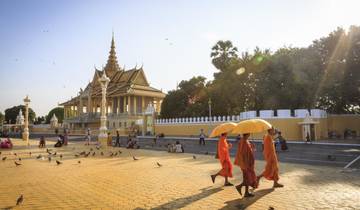
- In-depth Cultural
Essential Vietnam & Cambodia - 13 Days
An excellent trip to immerse yourself in vietnam culture and Cambodia’s past, present and future.

Southeast Asia Discovery: Seasides and Street Food
This was my first time ever travelling without family and it was amazing! One of the best months of my life. Our CEO Tong was brilliant and full of knowledge about where we were going and what we would be doing. He made sure to have enough time for anyone and helped in anyway he could to make things run smoothly for everyone on tour including myself. If you go on this tour, make sure you ask for Tong or (Phanet Tep) as your CEO!

- Coach / Bus
21 days Thailand, Laos, Vietnam & Cambodia
This was a fantastic tour with excellent value for money. The all-inclusive tour was good, making my experience excellent. Thanks Hoi An Express for taking so much care about us and trying their best in managing our trip in such conditions.
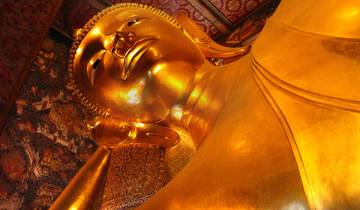
Southeast Asia Encompassed
had a great trip. our guide was oustanding. we've been on several g trips,this itinerary and daily schedule kept us busy and always interested. would reccomend this trip for anyone interested in this part of the world.
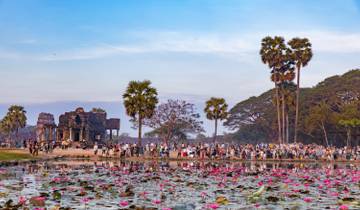
10 Days Beauty of Indochina
We had 3 guides Duc in Vietnam, Phirn in Cambodia and Van Thong in Laos. All were excellent great to have truly local knowledge. At all times Hoi An Express transportation was on time, we were met with smiles. We would suggest that you use a different bus company for the trip from Saigon to Seim Reap, the bus was very old and uncomfortable, the seats were too narrow for “westerners”.
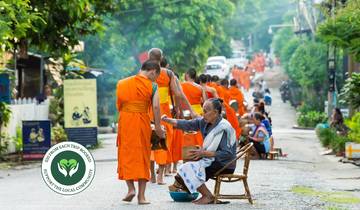
Glimpse Of Indochina In 16 Days (Vietnam,Cambodia,Thailand,Laos)
My first trip to Asia and I would definitely be back hopefully soon. If there was any issue it was handled immediately and suggestions for other things to do and see were provided to me along the way. Additionally, being there during the rainy season was perfect. I mostly had excursions to myself so the one on one time with the locals was the best. From cooking Vietnamese lunch to sipping homemade adult liquids, all the way to having personal conversations with each and every tour guide. They all made me feel special and provided me with the insight to each country visited. Thank you ever so much for the hospitality and life long memories.

Bangkok to Singapore
This trip had just about everything: Temples, natural beauty, animals, food, etc. Nice balance of relaxation and excitement. This was one of the best tours ever in terms of included activities and food. Wonderful guide too! (Alif)

Wanderlands Bali & Lombok - 13 Days
First time travelling and will be impossible to be topped. Met the best people with the best group leader
- €145 deposit on some dates Some departure dates offer you the chance to book this tour with a lower deposit.
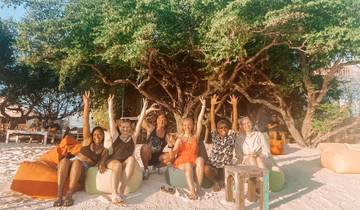
Bali Bucket List Original 10 Day Tour
This tour was action packed and our tour guide Ali was the best The standard of hotels were good and I got to see more of Bali than I would if I organised it myself. Now I've ticked it off I know exactly where to go on my next trip I would recommend ???? Ali made sure we were always having fun and kept the energy up on the longer journeys.. he also made sure to document our trip which was a lovely bonus ! If you are a solo traveller take the jump.. Bali is incredible and I was lucky to be travelling with a lovely set of girls :)
- €55 deposit on some dates Some departure dates offer you the chance to book this tour with a lower deposit.
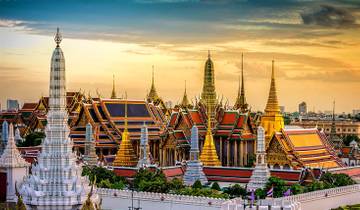
- Sightseeing
Amazing Thailand, Cambodia and Vietnam 18 days
This trip covered three diverse countries and gave us a real insight into culture:the food, lifestyle, religion and the people. The trip incorporated the most significant destinations in each country. The guides and drivers were excellent and went out of their way to ensure that we got the most out of each trip and were always concerned with our welfare. Highly recommend.
- 10% deposit on some dates Some departure dates offer you the chance to book this tour with a lower deposit.

Endless Beauty of Vietnam, Cambodia and Thailand - 19 Days
The communication and respect provided by Legend Tours was exceptional. I ask a lot of questions. I received timely responses every time. I made changes 3 times to my itinerary and each time was seamless, and without judgement. Eventually, I had to switch companies due to adding another country Legend doesn’t cover. Again, I was treated with the utmost respect. I plan to to use Legend Tour in the future because of the stellar customer service!
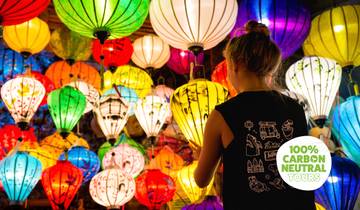
Vietnam Intro 12 Day
Very good Tour! We had fun! Will was a very good guide.

- Island Hopping
Bali One Life Adventures - 12 Days
Amazing experience! Quite intense in the beginning but it all worth it. Memories to keep for life
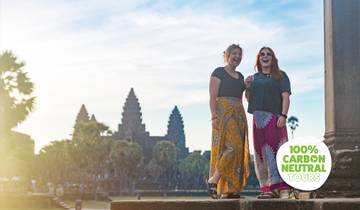
Cambodia Intro
had the best time travelling Cambodia with such a good group of people! our group leader seyha was always going to extra mile in making sure we were all having a good time and introducing us to extra things in Cambodia that were not apart of the itinerary during our free time. would definitely recommend going to Cambodia with intro travel
What people love about South East Asia Tours
good organized tour with lots of places to visit
- Family (2741)
- Fully Guided (2229)
- Personalized (2148)
- In-depth Cultural (1515)
- Private (1080)
- Active (658)
- Custom (413)
- River Cruise (267)
- Hiking & Trekking (211)
- Bicycle (203)
- Self-Guided (157)
- Intl. Flights Included (151)
- Sailing (101)
- Coach / Bus (65)
- Health, Spa & Wellness (51)
- Food & Culinary (29)
- Ocean Cruise (22)
- Honeymoon (21)
- Motorcycle Ride (20)
- Safari (19)
- Festival & Events (9)
- Romantic (9)
- Educational (8)
- Train & Rail (7)
Destinations
- Cambodia and Vietnam (731)
- Thailand, Cambodia and Vietnam (192)
- Thailand and Vietnam (145)
- Cambodia, Laos and Vietnam (132)
- Laos and Vietnam (116)
- Cambodia and Thailand (77)
- Laos and Thailand (36)
- Cambodia and Laos (26)
- Malaysia and Thailand (21)
- Malaysia and Singapore (18)
- Malaysia, Singapore and Thailand (16)
- Thailand, Laos and Cambodia (11)
- Singapore and Thailand (8)
- Vietnam tours (2102)
- Thailand tours (533)
- Indonesia tours (353)
- Cambodia tours (325)
- Laos tours (174)
- Malaysia tours (93)
- Philippines tours (85)
- Singapore tours (8)
- Brunei tours (7)
Travel Styles
- Small Group (1788)
- Budget (750)
- Luxury (227)
- Singles and Solo (2907)
- For Couples (909)
- Young Adults (142)
- Seniors (1442)
- 3 Day Tours (447)
- 7 Day Tours (809)
- 10 Day Tours (687)
- 2 Week Tours (758)
- 3 Week Tours (630)
- 4 Week Tours (77)
- 1 Month+ Tours (24)
- Spring 2024 (1624)
- Summer 2024 (3095)
- Fall / Autumn 2024 (3260)
- Winter 2024 / 2025 (3044)
- Spring 2025 (2170)
- Summer 2025 (1896)
- Fall / Autumn 2025 (1862)
- Winter 2025 / 2026 (1614)
- May 2024 (2574)
- June 2024 (2899)
- July 2024 (2985)
- August 2024 (3024)
- September 2024 (3064)
- October 2024 (3097)
- November 2024 (3043)
- December 2024 (2951)
- January 2025 (2268)
- February 2025 (2151)
- March 2025 (2106)
- April 2025 (1989)
- May 2025 (1862)
- June 2025 (1827)
- July 2025 (1771)
- August 2025 (1761)
- September 2025 (1748)
- October 2025 (1777)
- November 2025 (1658)
- December 2025 (1605)
Discover TourRadar
- See All Tour Operators in South East Asia
- Alberta Vacations
- Chile Tours
- The Prairies tours
- Belarus tours
- Everest Base Camp tours
- West Iceland tours
- Dordogne Bordeaux tours

Plan Your Trip
- 01 Fill in details ranging from your desired experience to the amount of people you are traveling with.
- 02 Based on your answers, discover destinations and experiences tailored to you.
- 03 Explore each suggestion
Follow the step by step with what you would like to experience for your next trip through the following 4 questions.
Quick Links
- Intra-ASEAN Tourism Toolkit Download
- Tourism Packages
- Guidelines on Self-Drive
- Facts & Planning
- Visa & Immigration
- Suggested Itineraries
- Download Video
- Download Logo
A Destination For Every Dream
Stay updated on Covid-19 in Southeast Asia. For more information, click here .
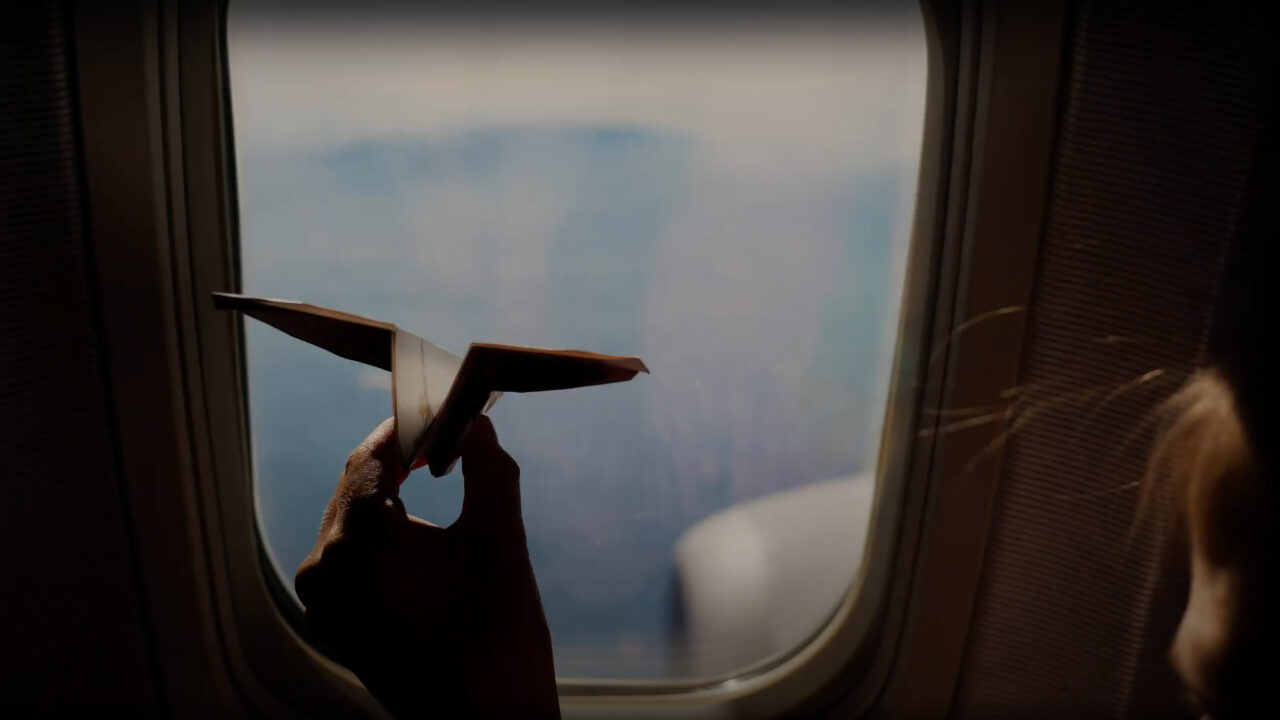
ASEAN Sustainability
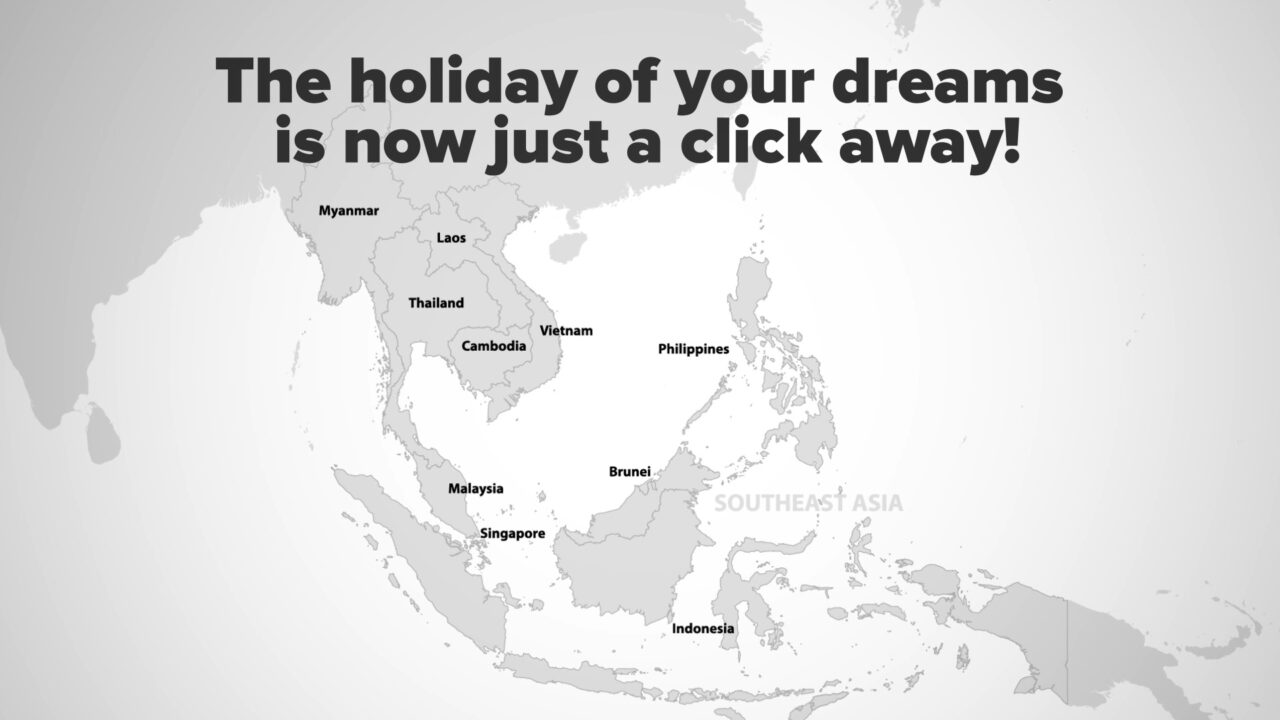
Discover Lao PDR
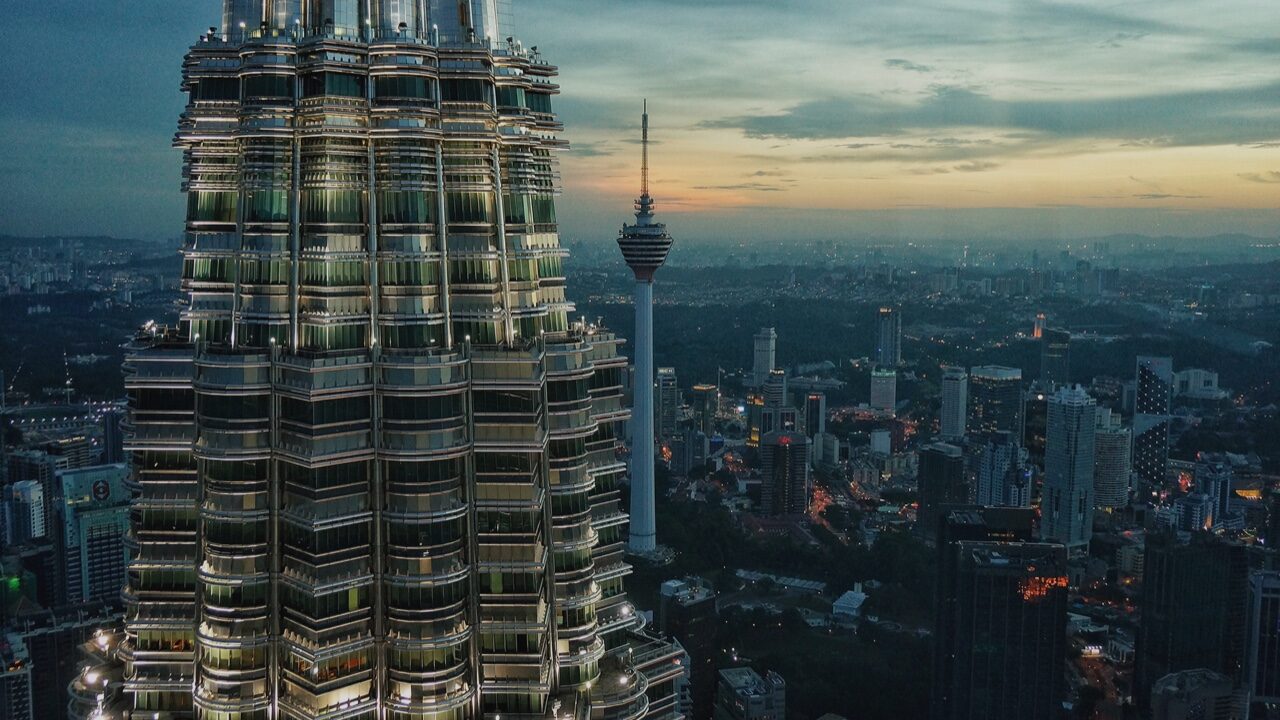
Discover Malaysia
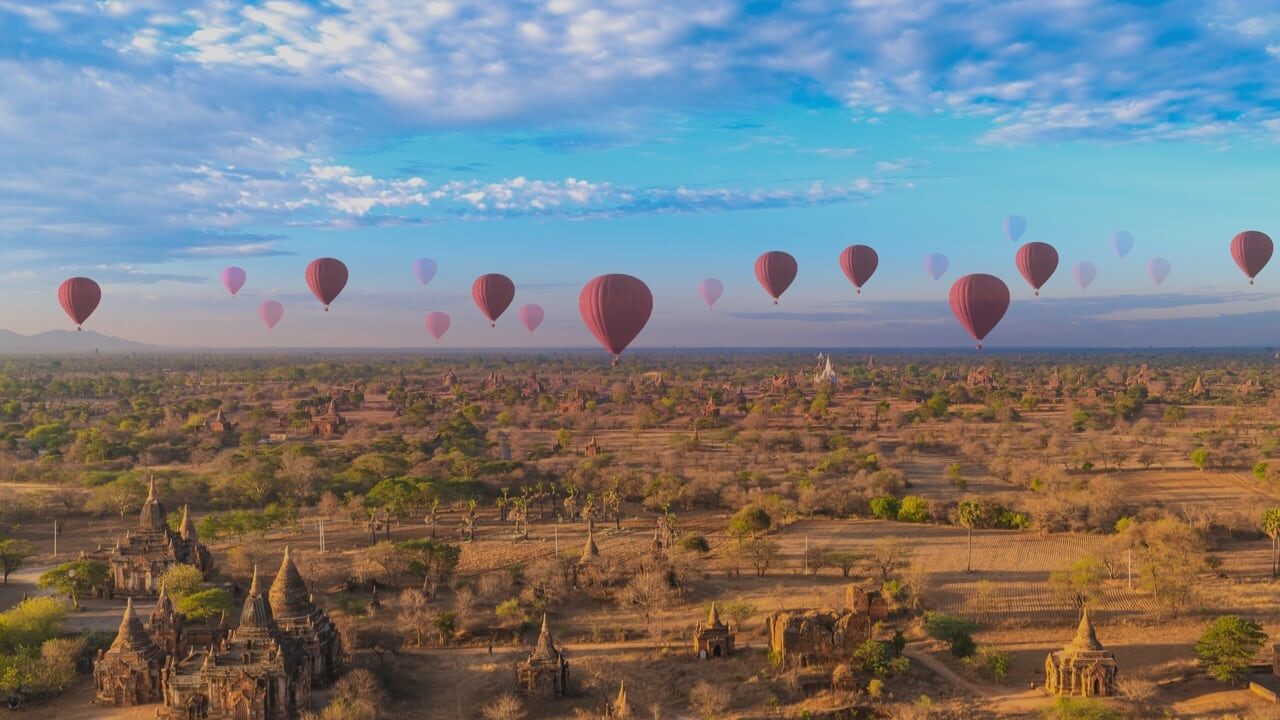
Discover Myanmar
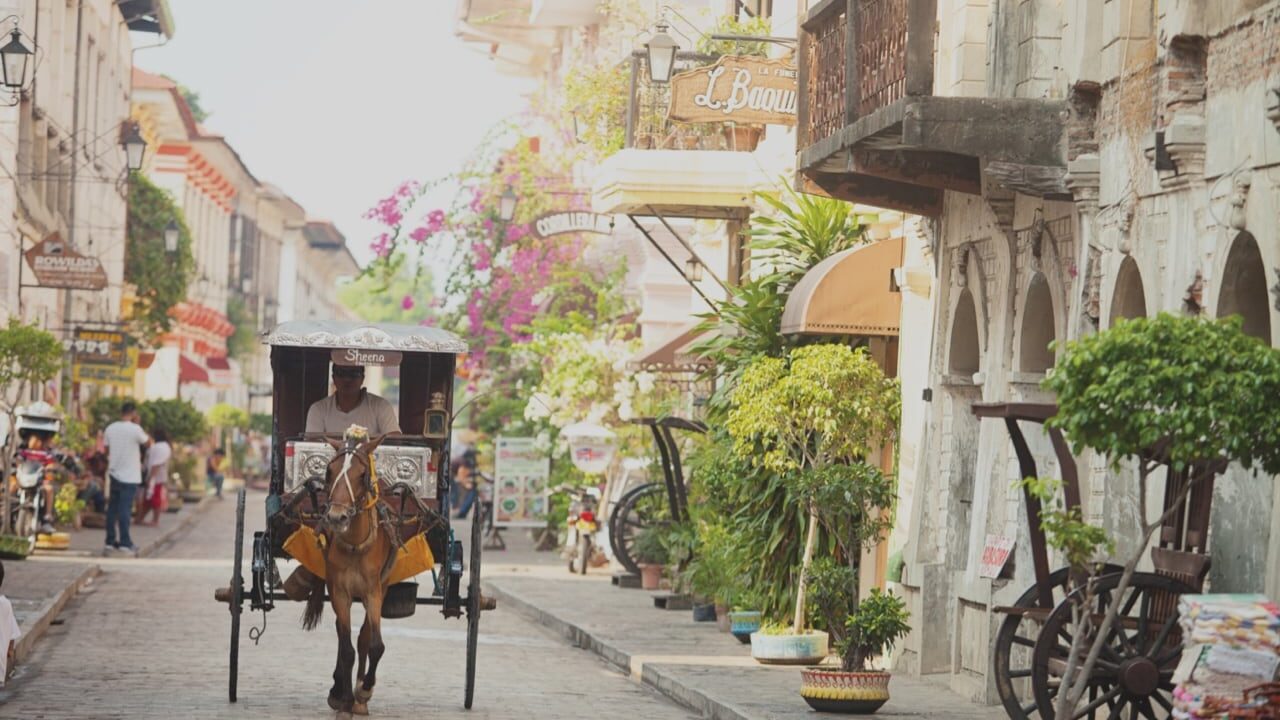
Discover Philippines

Discover Singapore
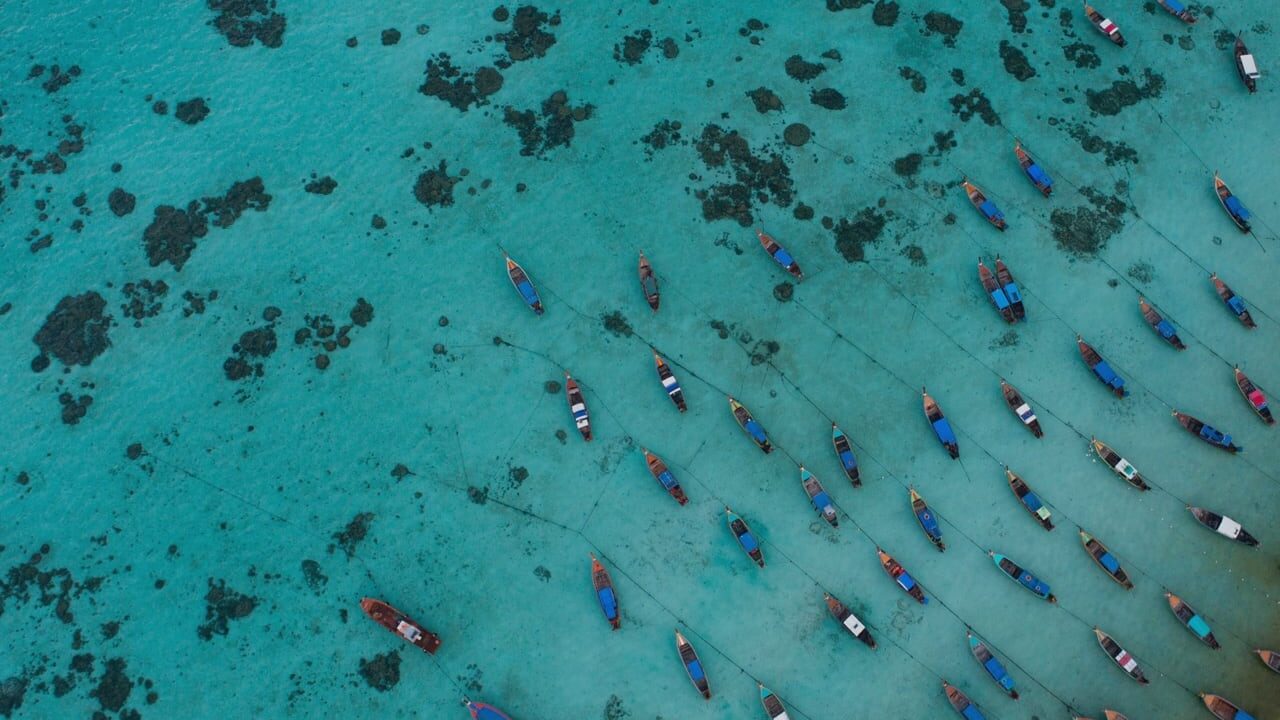
Discover Thailand
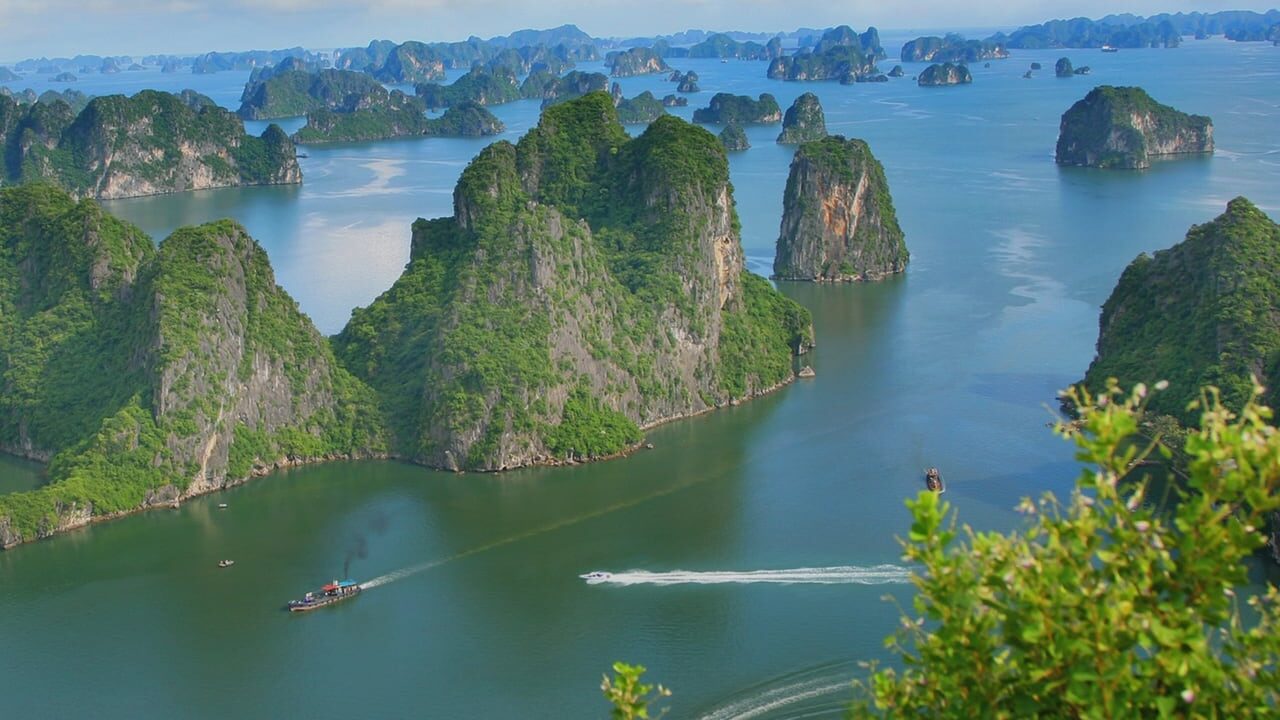
Discover Viet Nam

trade-release-1920x10802x_22211719-min-1280x720-min

ABOUT Association of Southeast Asian Nations

Welcome to Southeast Asia
Experience a world few could only imagine, from majestic rainforests and endless beaches to cultures that seem almost magical, these are the wonders of Southeast Asia. We warmly welcome you here.
Explore Southeast Asia

Adventure & Sports

Art, Culture & Heritage

Beaches & Islands

Food & Drink
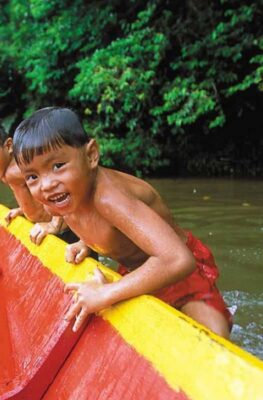
Education, Volunteer Work & Homestay

Entertainment

Festivals & Celebrations
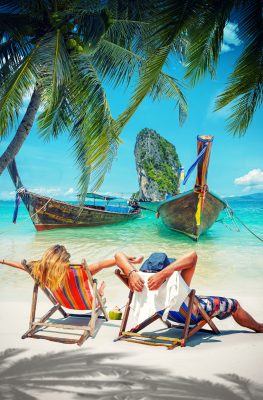
Romantic Getaways
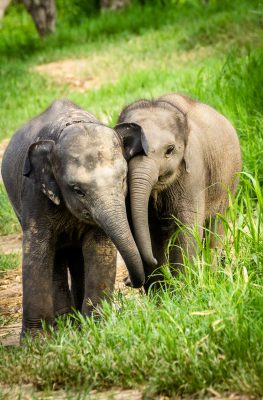
Nature & Wildlife
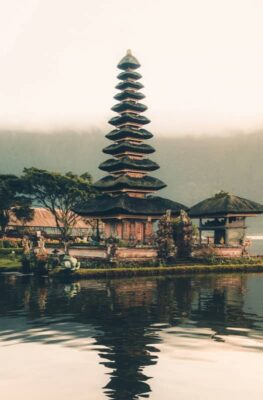
Pilgrimage & Temple Trails
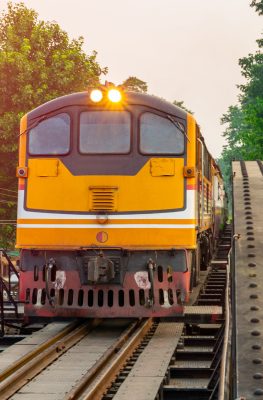
Wellness & Spa

Sultan Omar Ali Saifuddien Mosque

Angkor Wat Temple

Kelingking Beach

Kuala Lumpur

Tacloban, Leyte

Javascript is disabled
Tourism campaigns, featured guide, top destinations for relaxation, boost your well-being, a warm escape, dining in thailand, #adestinationforeverydream.


Touropia Travel
Discover the World
29 Best Places to Visit in Southeast Asia
By Alex Schultz · Last updated on April 27, 2024
Southeast Asia is a group of diverse countries between the Indian Ocean and the Pacific Ocean, featuring indigenous cultures influenced by Indian, Chinese and Western culture. The region includes the most populous Muslim country in the world, very prominent Buddhist countries, and quite significant Christian, Hindu and Animist communities.
It has long been a favorite corner of the world for globe-tramping backpackers, known for its perfect beaches, tasty cuisine, low prices, and good air connections.
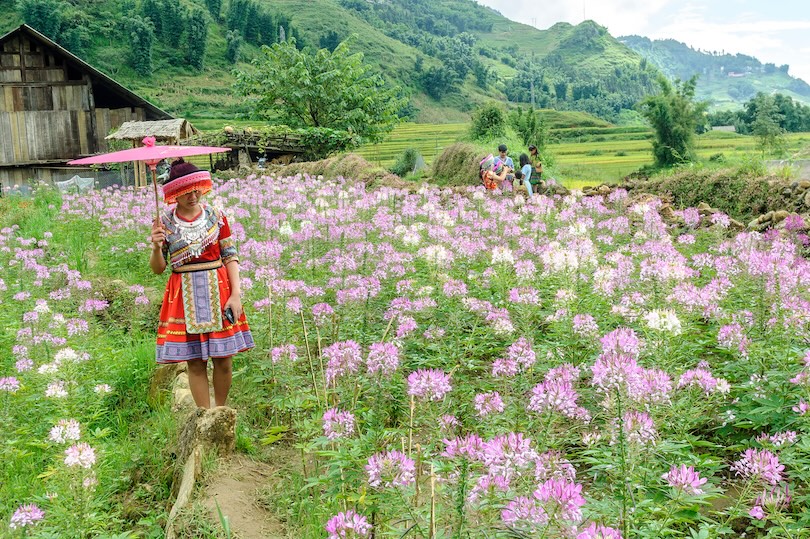
The countries of Southeast Asia represent a totally different culture for Western travelers. Instead of cathedrals, they’ll find temples. Instead of cold temperatures and snow in the winter, for the most part they’ll be bathed in a tropical climate. They may find simple accommodations in remote fishing villages but also luxurious five-star hotels in the bigger cities and on the more popular islands.
Southeast Asia will appeal to active, adventuresome travelers, who want to trek through steamy jungles, dive in some of the world’s best coral reefs, camp or go whitewater rafting on new rivers. But the region also offers the less active travelers something, who, after a day of visiting temples and other cultural sites, just want to relax in comfort in a luxury hotel. An overview of the best places to visit in Southeast Asia
29. Vientiane
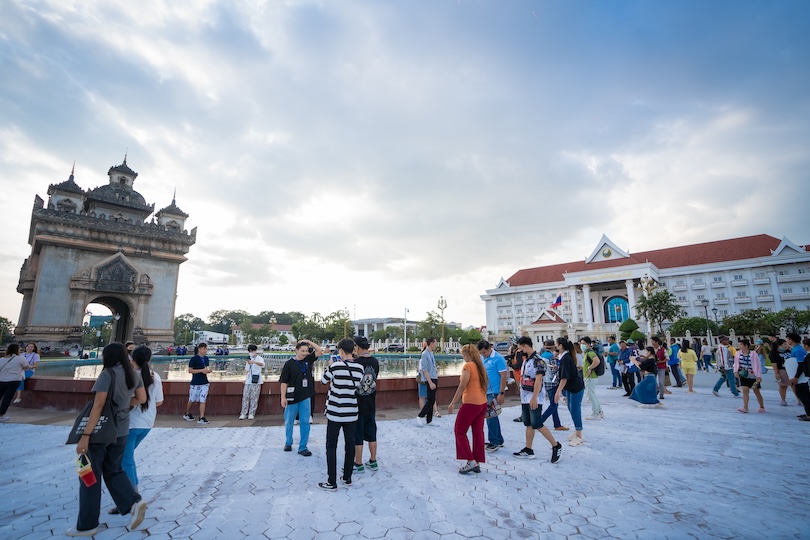
Both the capital and largest city of Laos, Vientiane is an underrated place to visit with lots of different sides to it. Besides boasting beautiful Buddhist temples, it is known for its elegant French colonial-style architecture and vibrant street food scene.
Set right in the south of the land-locked country, its charming tree-lined streets lie along the northern bank of the Mekong River. In recent decades, the city has doubled in size as malls, hotels and office buildings have shot up everywhere. While the traffic is much more chaotic now, its peaceful temple gardens and riverfront promenade are still wonderful to explore.
Other than admiring the glimmering gold Pha That Luang – Laos’ national symbol and most important religious site – you can amble about the many museums and night markets. Wat Si Muang and Buddha Park also attract visitors with their amazing architecture and artworks.
28. Sihanoukville
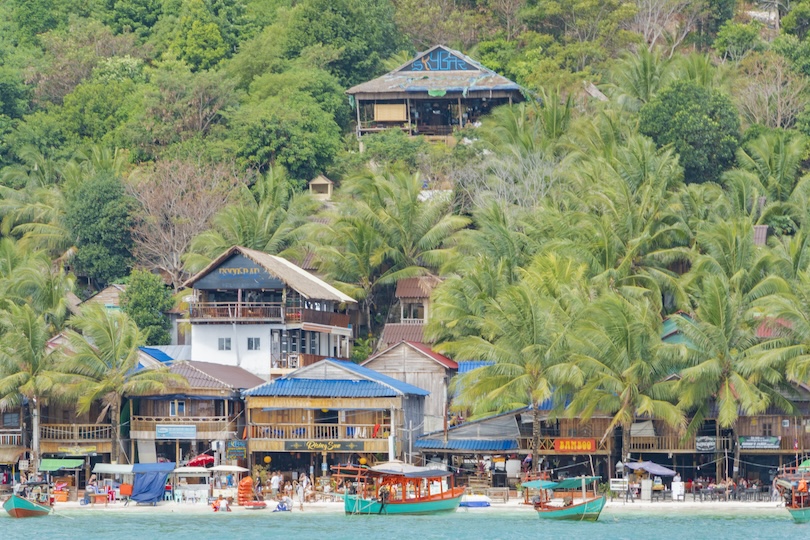
As it is home to many of Cambodia’s best beaches , Sihanoukville is a great spot to relax and unwind after exploring Angkor Wat and Phnom Penh. Lying along the Gulf of Thailand, it has heaps of fun watersports to enjoy with idyllic islands also located nearby.
Also known as Kampong Saom, the popular seaside city was quiet until pretty recently when swanky Chinese resorts and casinos were erected everywhere. Although it’s lost a bit of its laid back charm, there are now tons of restaurants and bars to try out.
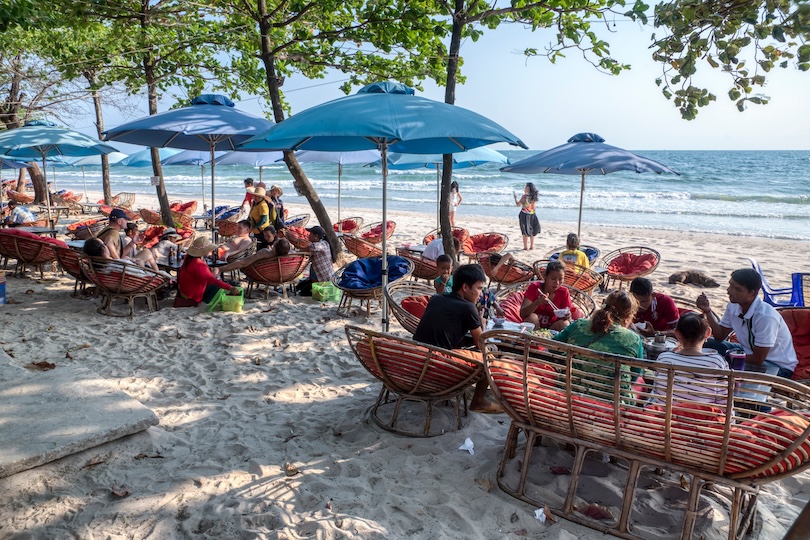
Plenty of pristine beaches still line its coast with Ream National Park also preserving lovely mangroves and colourful coral reefs. Aside from sunbathing, swimming and snorkelling, you can rent jet skis or take boat trips to the gorgeous Koh Rong and Koh Russei islands.
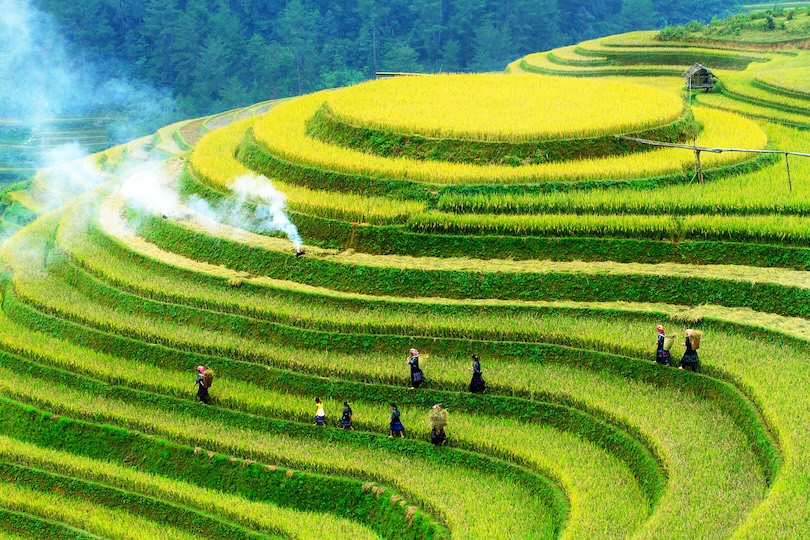
Nestled away amidst the remote mountains and rice terrace-filled valleys of northwestern Vietnam is the scenic town of Sapa . An increasingly popular tourist destination, it is famous for both its stunning landscapes and traditional hill tribe villages.
Overlooked by the rugged Ham Rong Mountain, the small settlement is surrounded by loads of spectacular nature. While some hike to Muong Hoa Valley for its picturesque rice paddies, others climb up the 3,141 meter-high Mount Fansipan – the tallest peak in Southeast Asia.
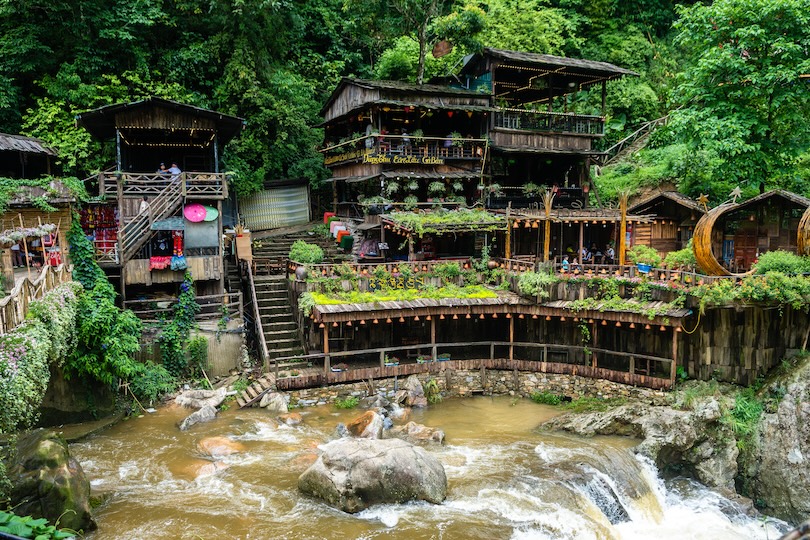
Many also come to learn about the isolated region’s unique cultural heritage and the ethnic minorities that live here. In addition to picking up some local handicrafts at its market, you can stay overnight at the quaint Cat Cat Village or trek to some of the other towns nearby.
26. Perhentian Islands
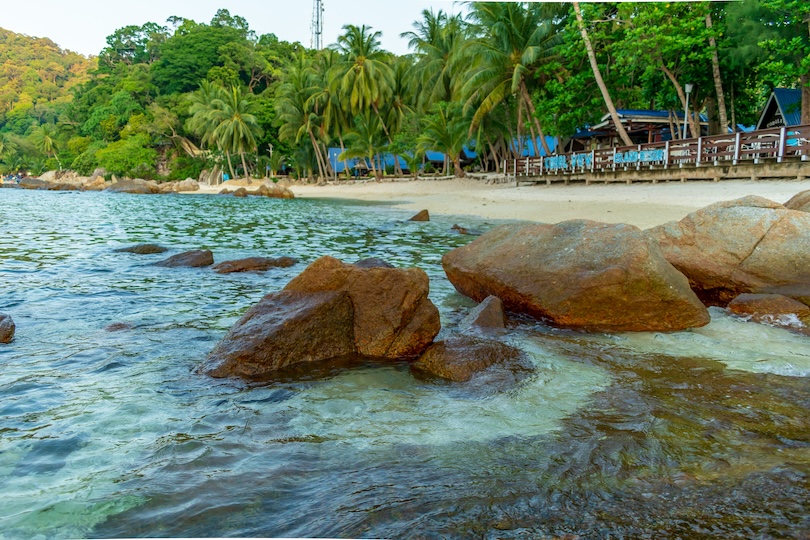
Just a short speed boat ride off the northeast coast of Peninsular Malaysia are the incredible Perhentian Islands . Appearing as if out of a travel brochure, the jungle-clad archipelago and all its breathtaking beaches are surrounded by shimmering, turquoise waters.
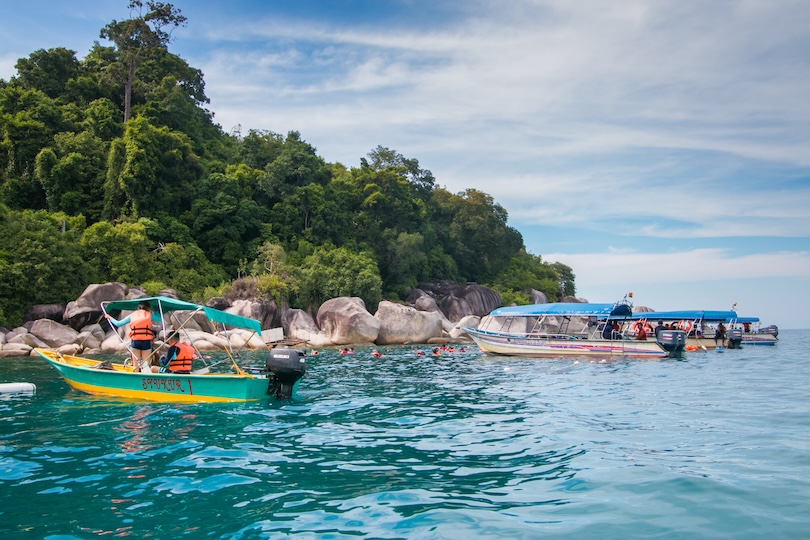
Meaning ‘stopping point’ in Malay, the cluster of coral-fringed islands are completely unspoiled with only the larger Perhentian Besar and Perhentian Kecil being inhabited. Protected as part of Pulau Redang National Marine Park, they have some stupendous snorkeling, scuba diving and sea-kayaking to enjoy.
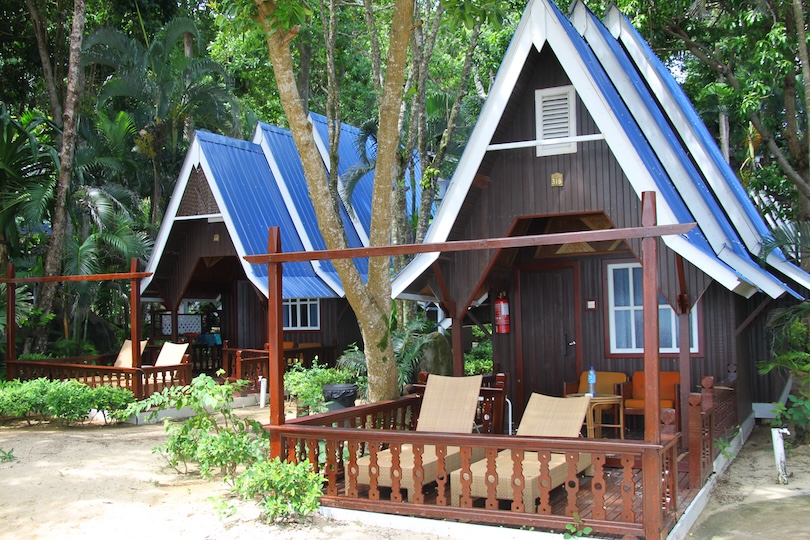
After ogling at all its magnificent marine life, you can hike about its steamy jungle or lounge on picture-perfect beaches. Some epic rock formations also line their sparkling white sands with relaxing resorts and restaurants dotted here and there.
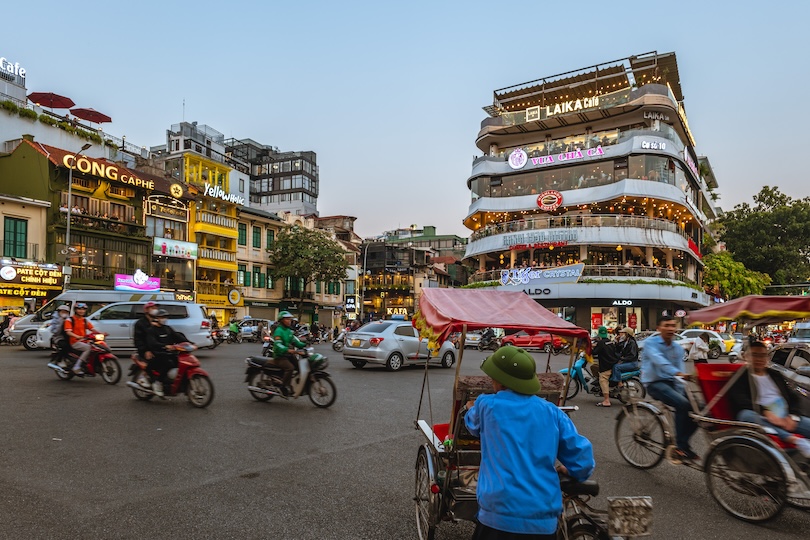
In stark contrast to the tranquil isles, the hectic, high-paced Hanoi threatens to overwhelm your senses. Once you get used to the constant traffic and hooting horns, Vietnam’s capital has much to love about it with millions visiting each year.

One of the oldest cities on Earth, it exhibits a fascinating mix of East and West as concrete communist blocks lie next to French colonial buildings and ancient Asian pagodas. In its Old Quarter, there are atmospheric markets and alleys to explore with the tiny cafes along Train Street always a big draw.
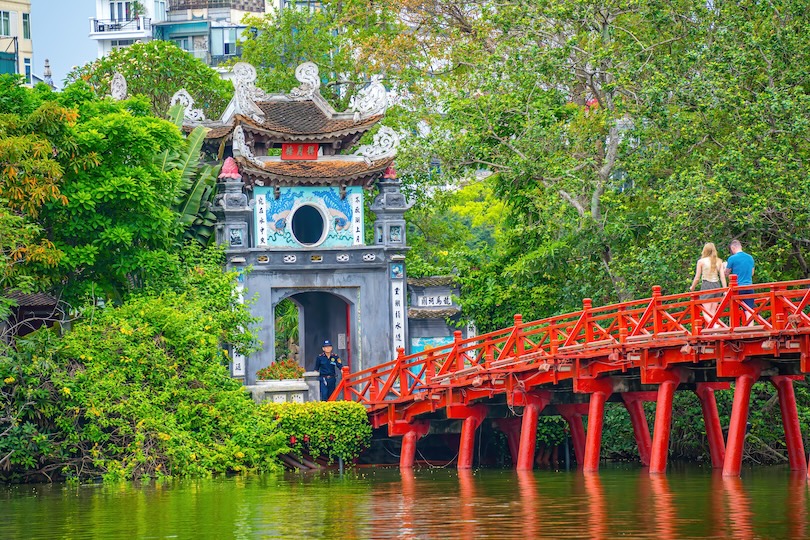
Other than trying terrific street food, there are numerous museums and galleries that cover the history and culture of the country. If the chaos ever gets too much, you can stroll about the handsome Hoan Kiem Lake or Temple of Literature.
24. Vang Vieng
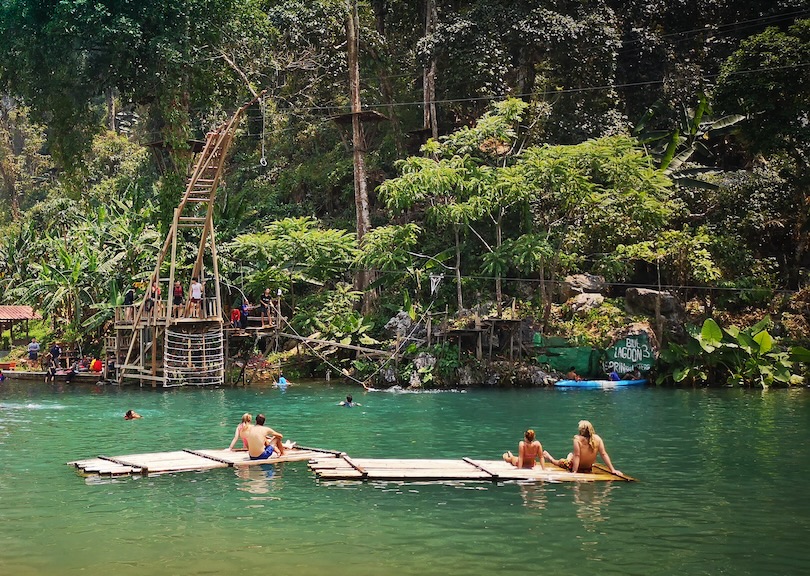
Often called the ‘Adventure Capital of Laos’, Vang Vieng is renowned for its remarkable karst formations and fast-flowing river. Popular with party-seeking backpackers, it has lots of captivating caves and bucolic countryside to see nearby.
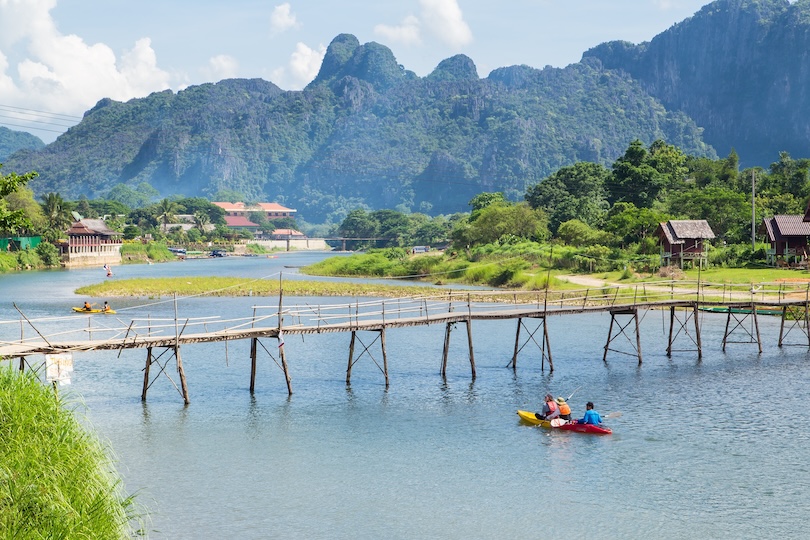
Located a couple of hours’ drive north of Vientiane, the small town lies along the Nam Song River, overlooked by dramatic, soaring mountains. Besides hiking or rock climbing, many go tubing along the river, stopping at various bars along the way.
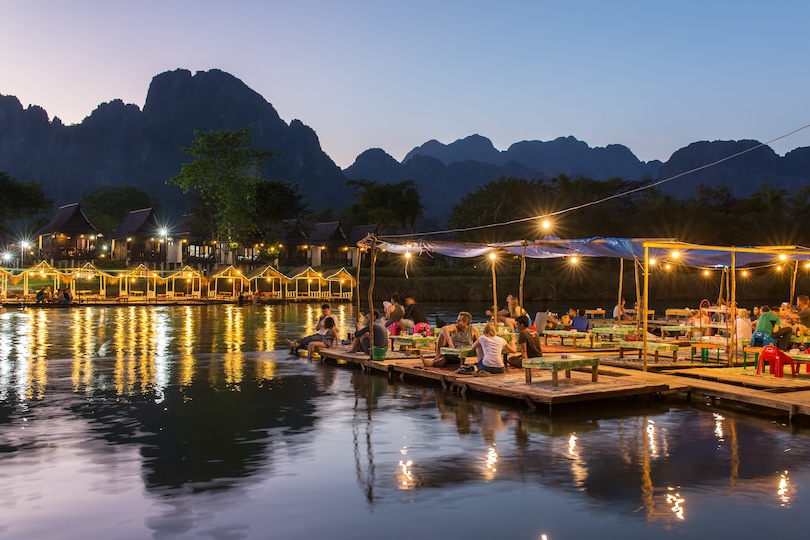
With countless cool caves, waterfalls and viewpoints found in the surrounding region, most people book tours to places like Tham Chang or the Tham Nam Water Cave. Buggies and kayaks are also available for rent while fun ziplines shoot you above its pretty landscapes.
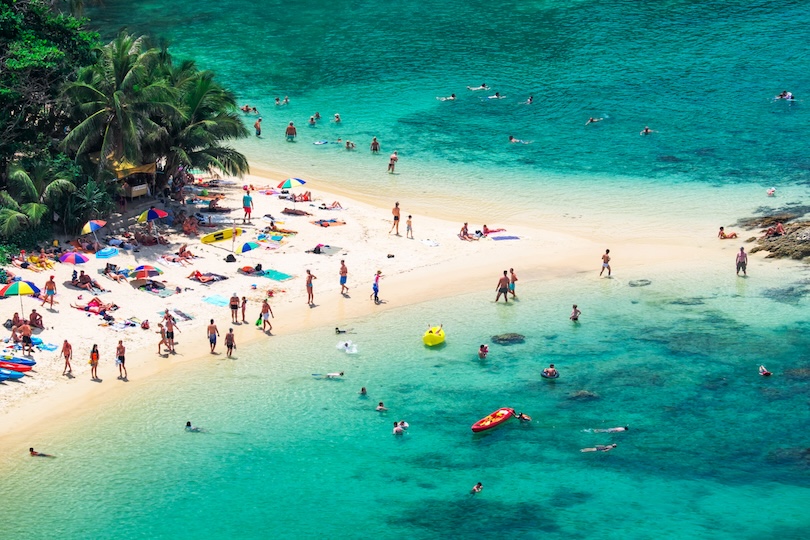
The largest island in Thailand, Phuket has long been a top destination thanks to its beautiful beaches and bountiful dive sites. Connected to the mainland by a couple of short bridges, its many mountains and rainforests overlook the Andaman Sea.
Offering various exciting outdoor activities, the wealthy province’s pristine parks are great for hiking and motorbiking. As well as exploring the lush rainforest, you can snorkel, sail and scuba dive in the warm waters.
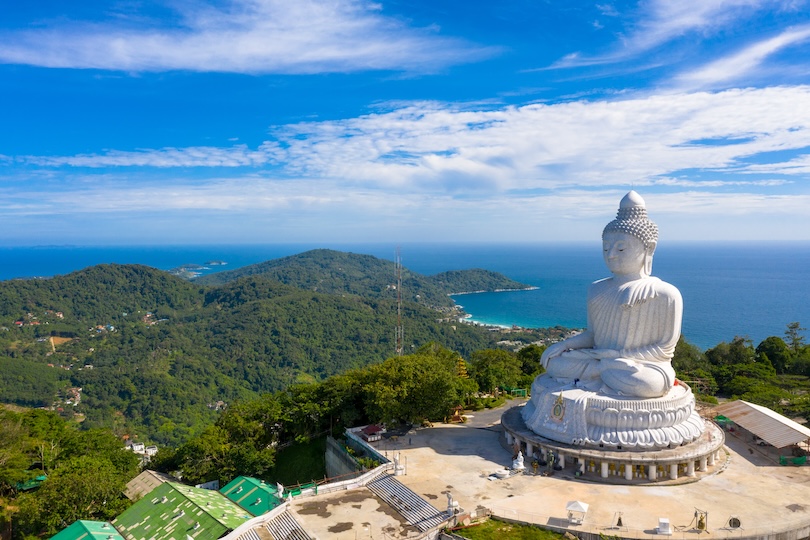
Many also come to pamper themselves at high-end spas, restaurants and hotels with the picturesque Patong Beach being known for lively street markets and loud nightlife scene. Phuket Town, the island’s capital, also has some centuries-old temples, shrines and Sino-Portuguese mansions to see.
22. Kuala Lumpur
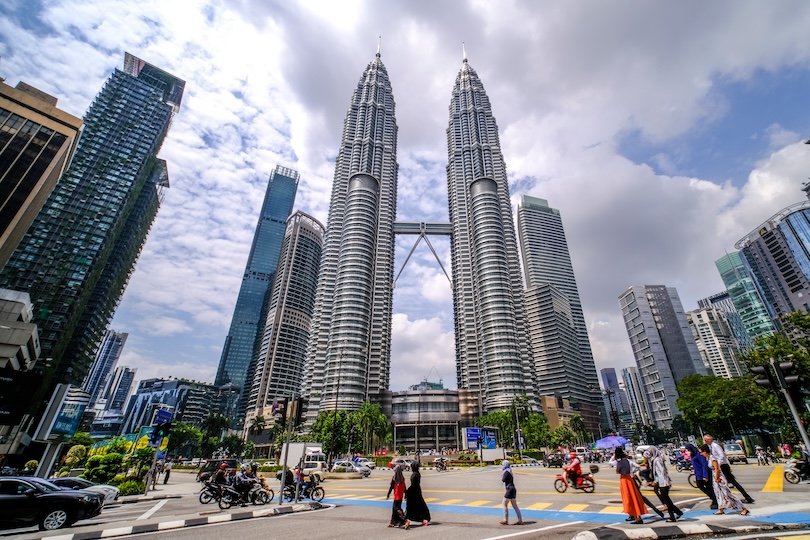
One of the most multicultural cities in the world, Malaysia’s sprawling capital Kuala Lumpur hums with energy at any time of day. Most known for the iconic Petronas Twin Towers, it has everything from old-time temples and markets to modern malls and skyscrapers to explore.
Since being founded as a tiny tin mining outpost in 1857, the dynamic KL has continued to grow and grow. Thanks to its large Chinese, Malay and Indian populations, the city has tons of tasty dishes to try with its architecture and historic sights being just as diverse.
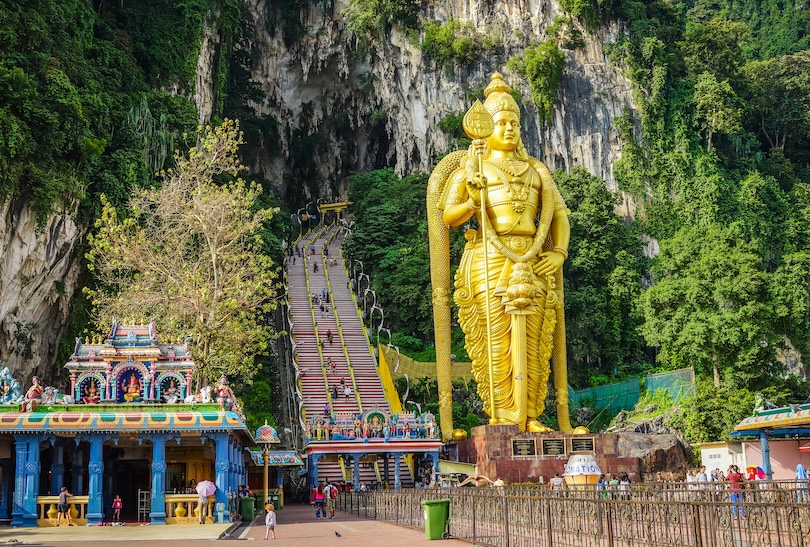
Besides shopping at Berjaya Times Square’s stores or sampling Jalan Alor’s street food, you can enjoy awe-inspiring views from its high-up observation decks. The incredible Batu Caves and Genting Highlands can also easily be visited on day trips from the capital.
21. Gili Islands
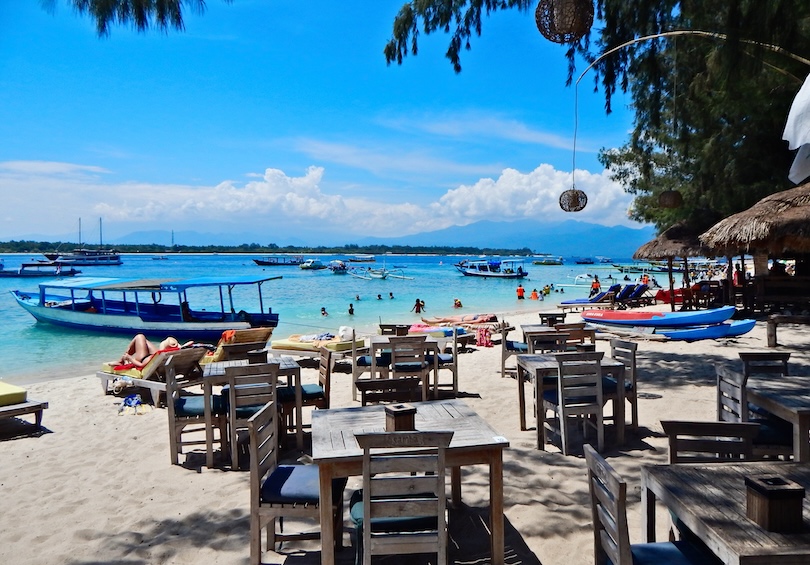
A lovely, laid back place to visit, gorgeous Gili Islands lie just off the northwest coast of Lombok in Indonesia. Fittingly meaning ‘small beautiful islands’, their wonderful white sands and warm, crystal-clear waters are easily reached by either ferry or fast speed boats.
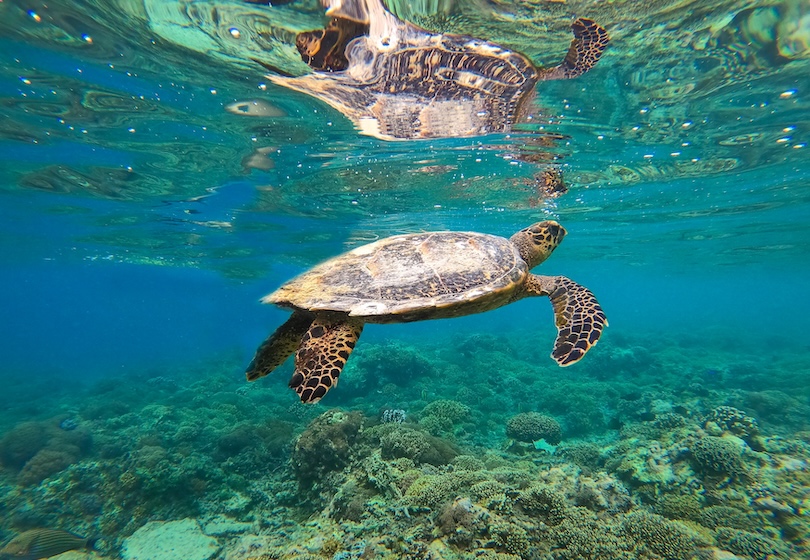
Although they have long been a popular tourist destination, the three secluded isles are still quite undeveloped despite more resorts and restaurants popping up each year. While Gili Air and Gili Meno are very relaxed, Gili Trawangan is much livelier with plenty of bars and clubs hosting party nights.
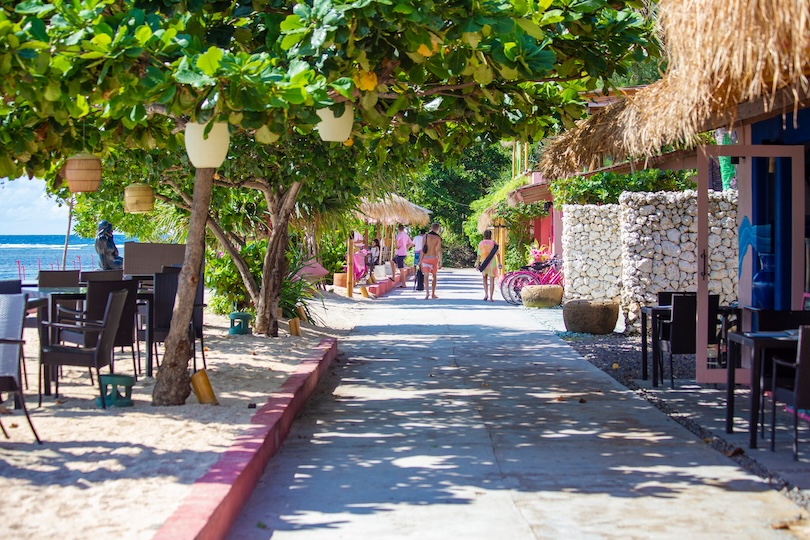
All of them boast some breathtaking scenery and beaches with swimming, scuba diving and sightseeing cruises being their main activities. With no cars at all on the islands, their little cafes and beachside retreats make for a delightful getaway.
20. Phnom Penh
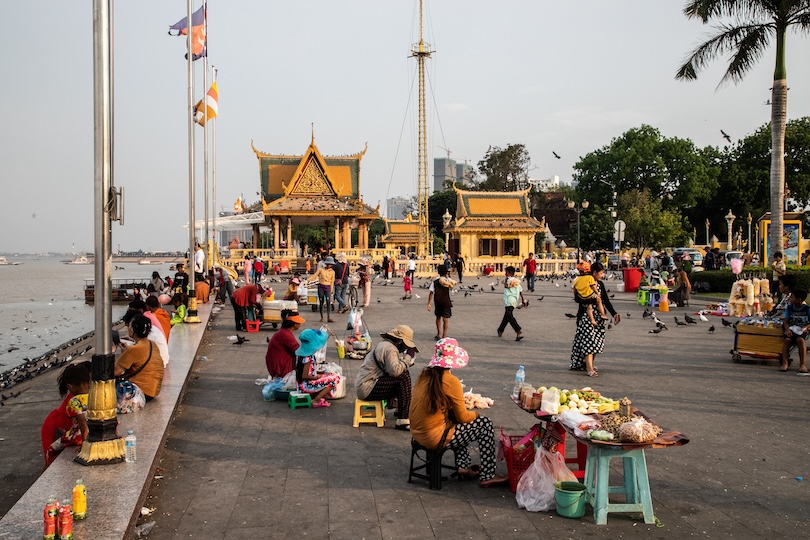
Once known as the ‘Paris of the East’ and ‘Pearl of Asia’, Cambodia’s capital Phnom Penh has slowly overcome the abuse it suffered under the violent Khmer Rouge regime. While it is still a bit rough and rundown in places, the growing metropolis certainly has a lot to offer.
As it acted as a hub for both the ancient Khmer Empire and French colonialists, fine temples and villas were erected around the city. Although many were damaged in the seventies, the wide boulevards and riverfront promenades for which it is famed still remain.
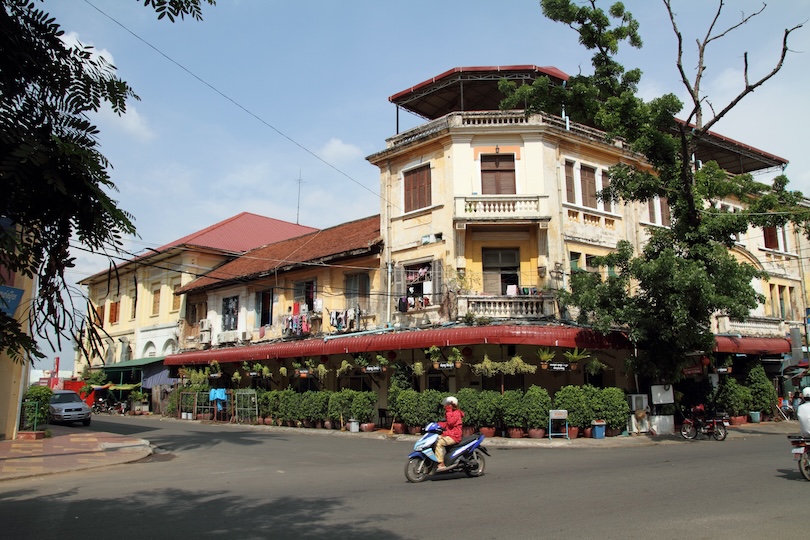
Aside from wandering about its attractive parks or enormous Phsar Thmei market, you can admire its Royal Palace and Silver Pagoda. Visitors can also learn more about its recent sad past at the Killing Fields or in its moving Genocide Museum.
19. Chiang Mai
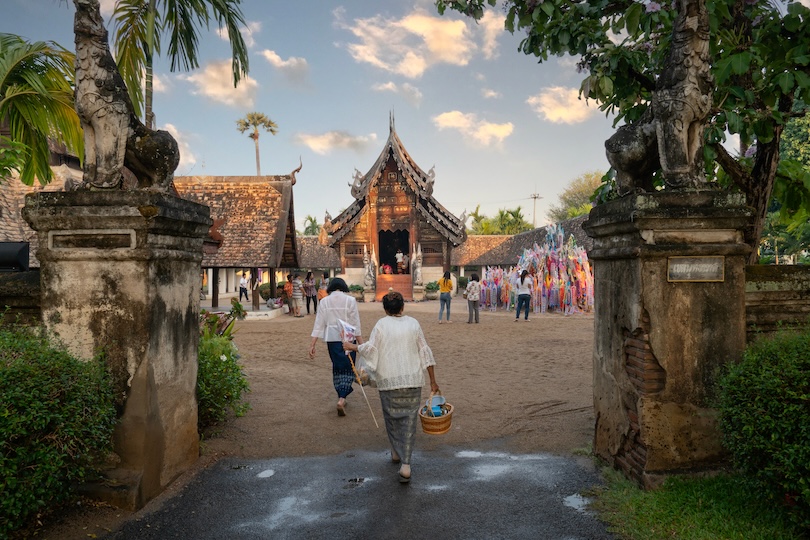
The second-largest city in Thailand, Chiang Mai is located in the mountainous north, amidst scenic countryside. One of Southeast Asia’s must-visit destinations, it is known for not just its atmospheric temples and old town but its fun night markets and street food too.
Once the capital of the Lanna Kingdom, it was founded in the thirteenth century with some of the city walls and moat still intact today. These contain impressive temples like Wat Chedi Luang and Wat Phra Singh. You’ll also find bustling Night Bazaar and all kinds of enticing street food stands to try out nearby.
Outside of the city are natural wonders like Doi Inthanon National Park and Hang Dong Quarry to discover. Many also go trekking to meet remote hill tribes or bathe adorable baby elephants at some of the sanctuaries.
18. Inle Lake
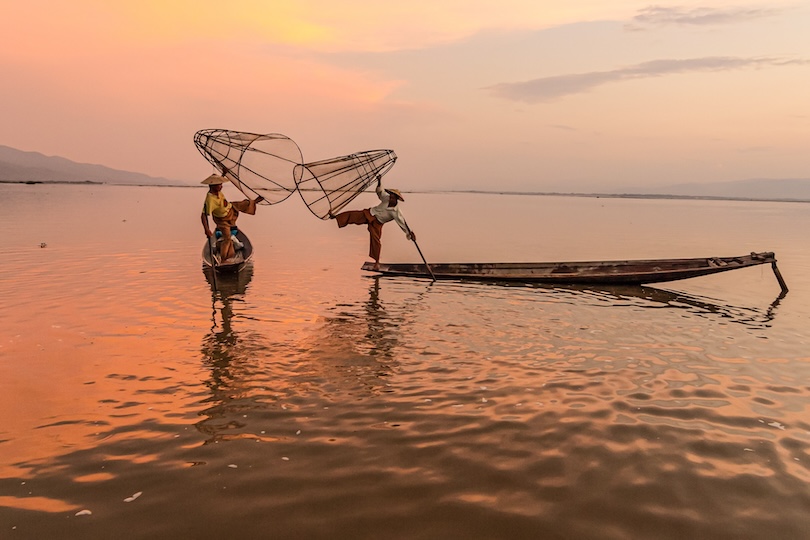
Along with the ancient pagodas and temples of Bagan, Inle Lake has to be one of Myanmar’s most enchanting attractions. Tucked away amidst the rolling Shan Hills, its reflective waters are lined by charming monasteries and temples with floating villages, markets and gardens also bobbing about.
The second-largest lake in the country, it stretches 22 kilometres in length with lots of tribes living around it. Many motorboats and flat-bottomed skiffs take tourists out on the shallow lake so you can see the communities up close and learn more about their traditions.
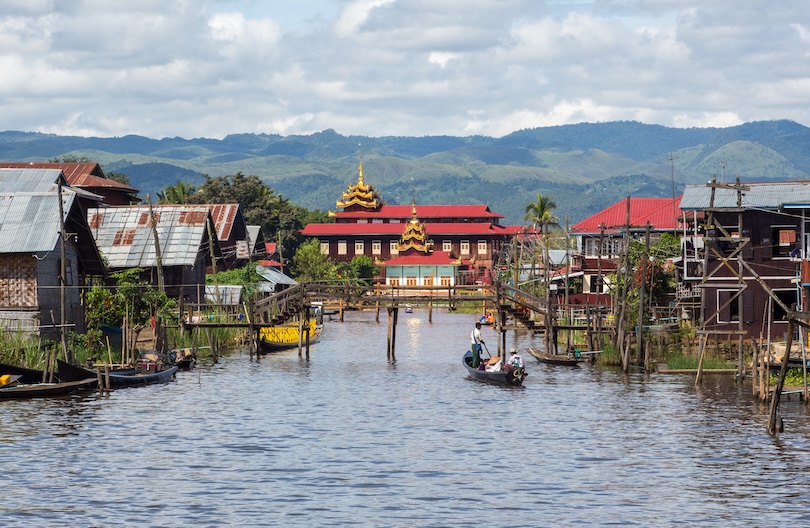
As well as visiting stilt homes and fishermen’s villages, there are centuries-old stupas and pagodas to see too. While puttering about, you can bask in marvellous views of the lake and the mountains far off in the distance.
17. Palawan
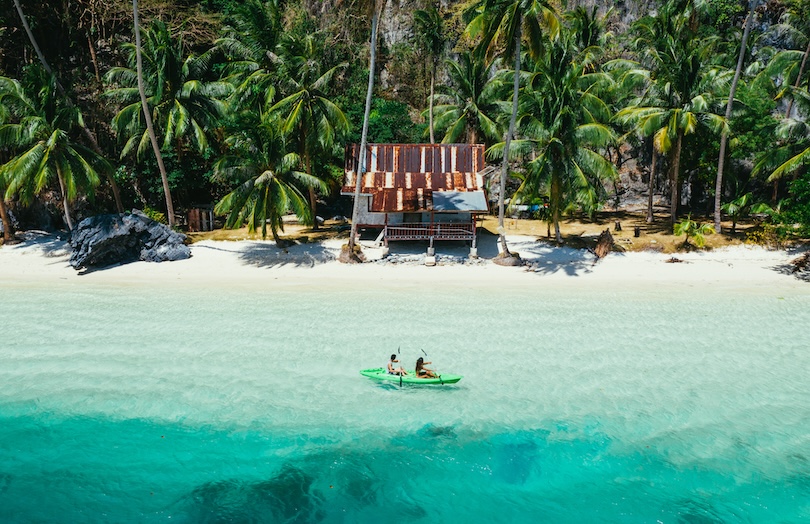
With all the alluring beaches, immense limestone cliffs and azure waters, it is no wonder that Palawan is considered to be one of the prettiest parts of Southeast Asia. The westernmost province of the Philippines, it has around 1,780 mostly unspoiled islands and islets to explore.
Set between the Sulu and South China seas, the long, narrow archipelago stretches almost from Borneo to Mindanao. Characterized by craggy limestone cliffs and colourful lagoons, its white sand beaches and dive sites need to be seen to be believed.
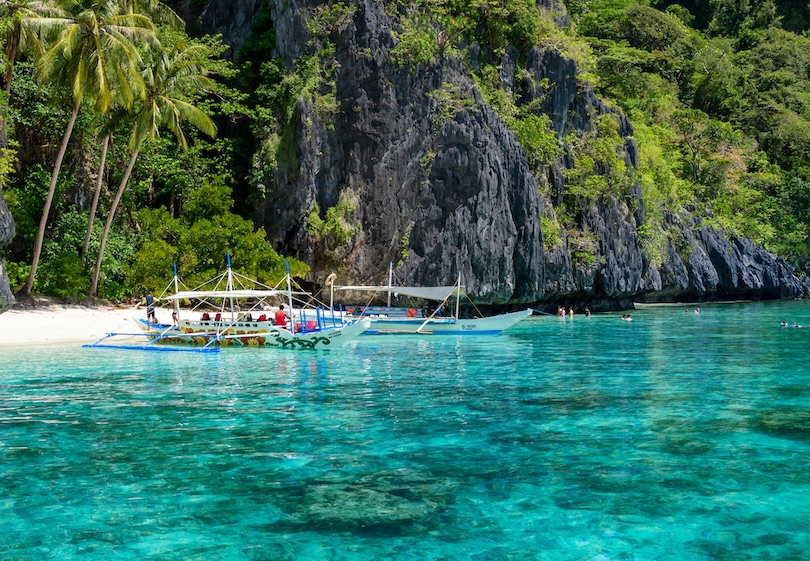
Among the region’s many highlights are the irresistible karst landscapes of El Nido and the underground river at Puerto Princesa. Tubbataha Reefs National Park also attracts divers as do the coral reefs and shipwrecks off of Busuanga Island.
16. Taman Negara
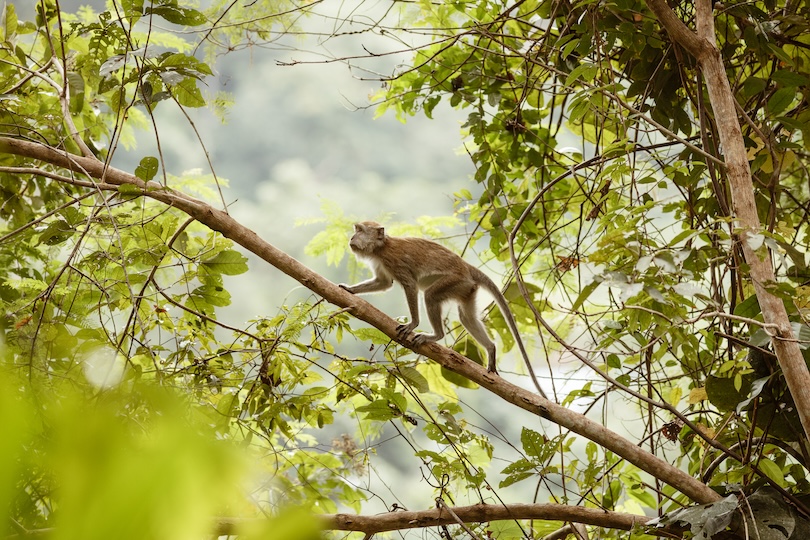
Covering a massive part of Peninsular Malaysia are all the rivers, rainforests and mountains of Taman Negara . A must for nature lovers and outdoor enthusiasts, the country’s largest national park offers a myriad of unforgettable adventure activities.
Established in 1938/1939, it sprawls across three states with Asian elephants, leopards and Malayan tigers all inhabiting its wild confines. The vast park also protects some of the oldest deciduous rainforest in the world. Some estimates reckon it is over 130 million years old!
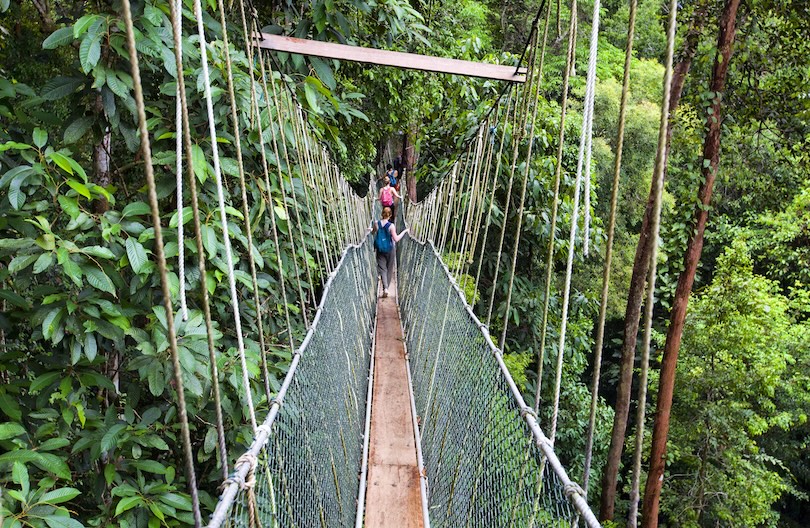
Amidst its endless mountains and jungle, you can explore caves, climb peaks and enjoy cool canopy walks. Many also shoot down its rapids and take nighttime safaris through the dark rainforest to see its nocturnal creatures. There are also the tiny aboriginal villages of Orang Asli to visit where you can learn more about traditional life in Taman Negara.
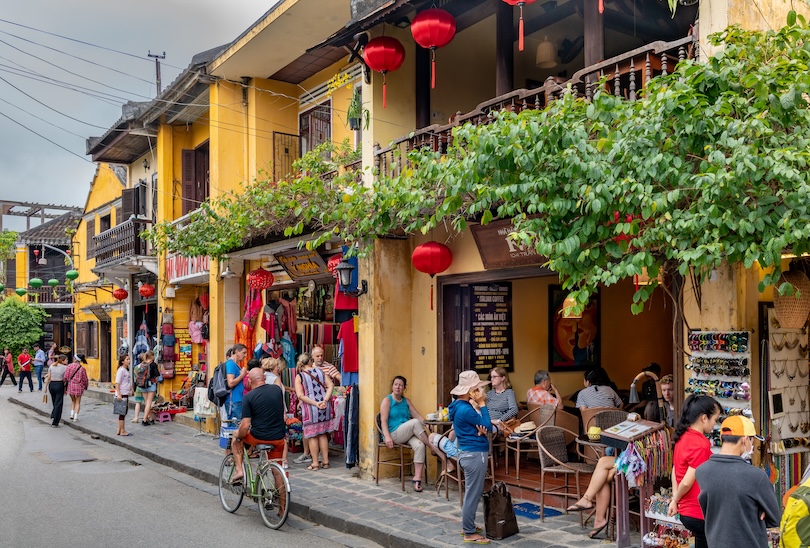
Well-preserved, Hoi An’s little canals and lantern-lit streets are hemmed in by hundreds of historic buildings. A mix of eras and styles, they perfectly reflect the former trading port’s past and all the different peoples and merchants that have lived here over the ages.
Lying along Vietnam’s central coastline, it flourished for centuries until the mouth of the Thu Bon River finally silted up. Its attractive Old Town is home to not just Chinese-style temples and shophouses but French colonial villas and ornate Vietnamese tube houses too. Another of its main sights is its quaint Japanese covered bridge that crosses one of the canals.
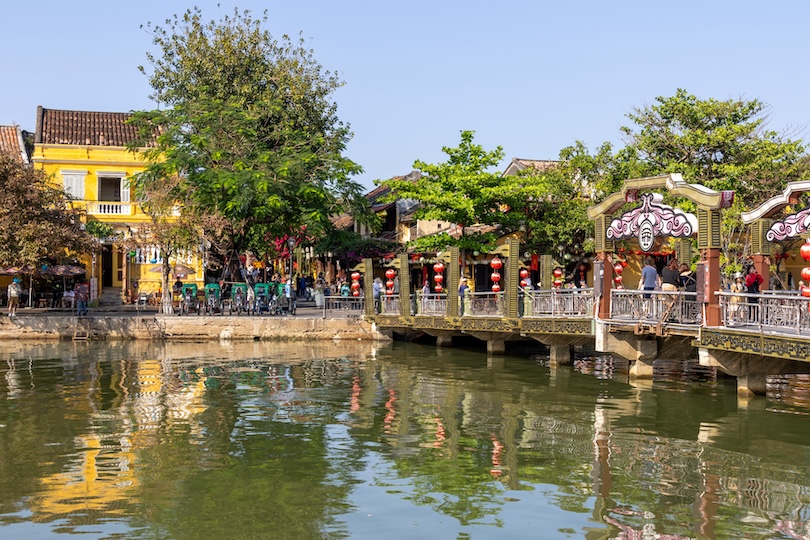
At night, everywhere looks even more magical as lovely lanterns light up its narrow, winding streets and riverside. Besides shopping for souvenirs at its market and trying some delicious street food, many take trips to the majestic My Son ruins nearby.

Formerly known as Rangoon, Myanmar’s largest city Yangon has much more to see than just its shimmering gold Shwedagon Pagoda. Other than the ancient Buddhist shrine, there are plenty of British colonial buildings, parks and religious sites to check out.
Despite being replaced at the capital by Naypyidaw in 2005, it still acts as both the country’s cultural and commercial center. As it exhibits a mix of British, Burmese, Chinese and Indian influences, the city has loads to offer in terms of its historic sights, food and nightlife.
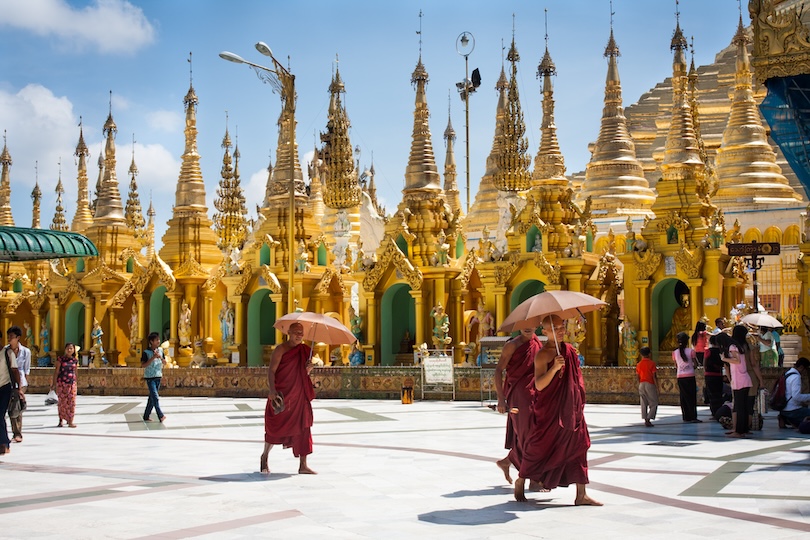
The undoubted highlight, however, is of course the gigantic golden Shwedagon Paya which is perched atop a hill overlooking the city. At its sizeable complex, you can examine its shrines and stupas and bang the giant Maha Ganda Bell for good luck.
13. Boracay
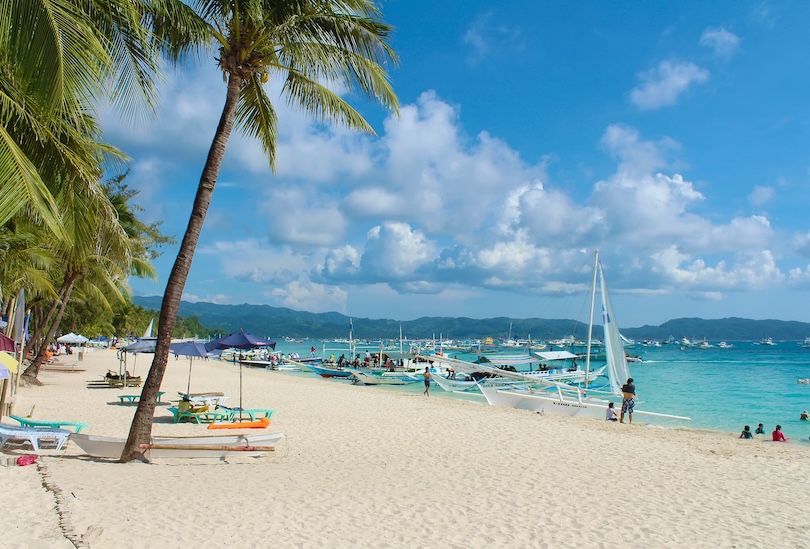
One of the Philippines’ most popular destinations, Boracay boasts some of the best and most beautiful white sand beaches in the world. A tropical paradise, all its relaxing resorts, spas and seafood restaurants lie just an hour’s flight from Manila.
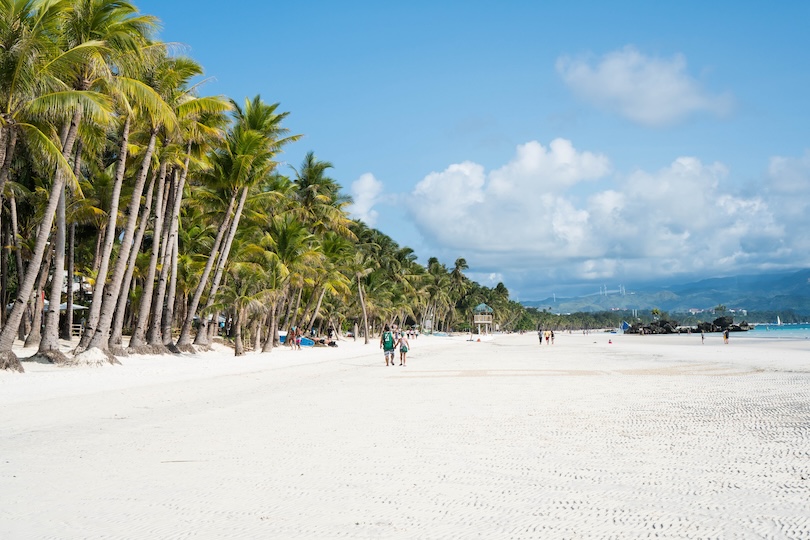
Located just off the northwest coast of Panay, the idyllic isle is lined by soft, powdery sands backed by gently swaying palms. Aside from swimming and splashing in its turquoise waters, you can enjoy everything from sailing and windsurfing to snorkeling, jet skiing and scuba diving.
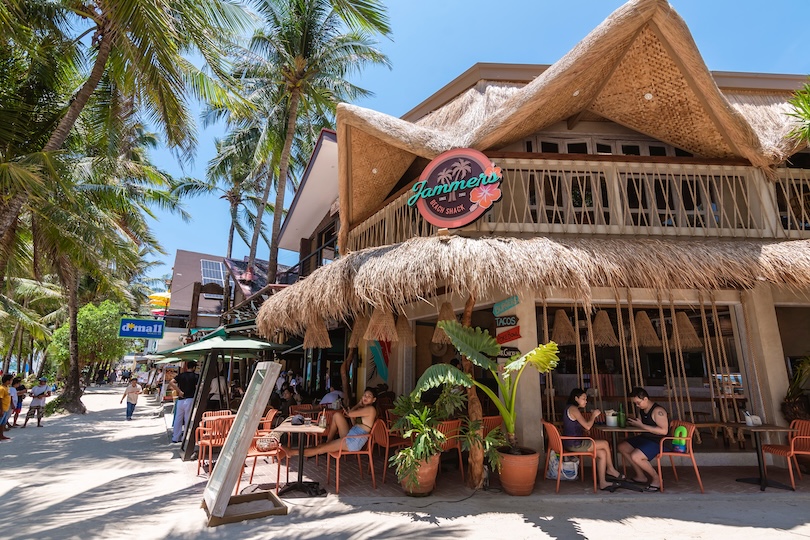
Many holidaymakers also make the most of its many spas and massage stations that border the beach. In the evenings, there are tons of lively bars and restaurants which offer superb music sets and sunset views.
12. Mount Kinabalu
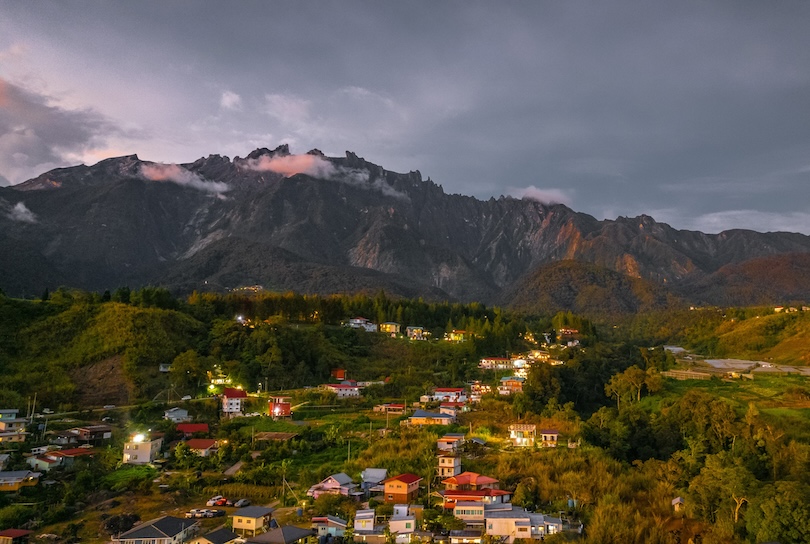
Rising dramatically above the rainforests and rivers of Borneo is the massive great Mount Kinabalu. The highest peak in the Malay Archipelago, it towers 4,095 meters in total with numerous hiking trails winding their way about its rugged slopes.
Considered sacred by the local Kadazan Dusun people, its wild reaches are now protected as part of the national park of the same name. One of the most biodiverse areas on Earth, it is home to around 6,000 plant species. Over 300 kinds of exotic birds also flit about its dense foliage.
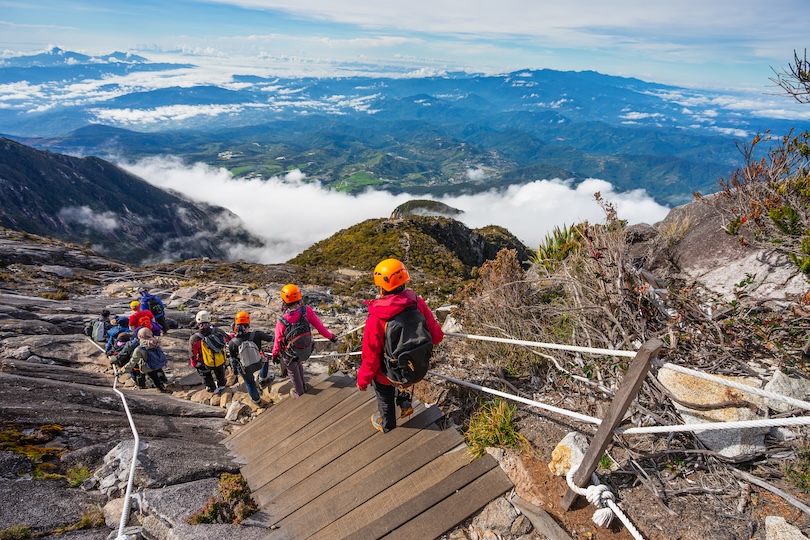
Despite its soaring summit, the mountain is actually quite easy to hike if you are moderately fit. After taking in all its astounding views and nature, you can always go and see adorable orangutans at one of the nearby nature reserves.
11. Komodo National Park
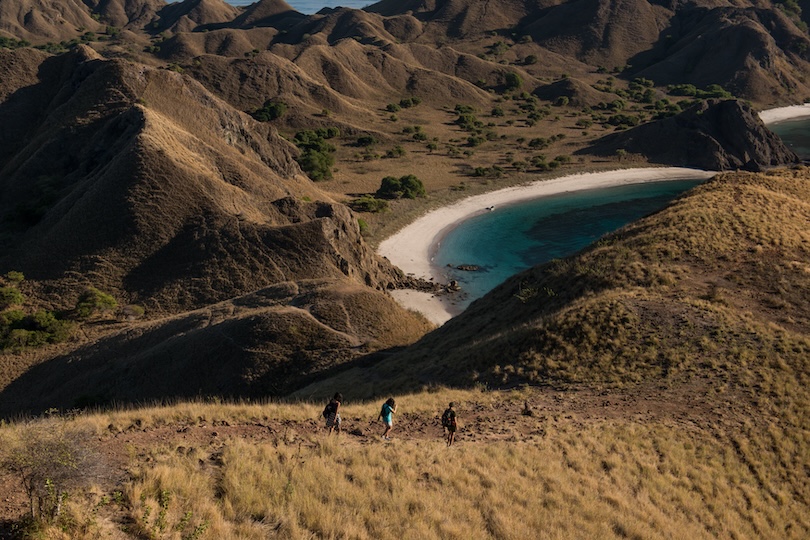
If you’re after a sighting of the world’s largest lizard, then the incredible Komodo National Park is the place to head. Part of the Lesser Sunda Islands in Indonesia, it also preserves some spellbinding mountains, beaches and marine life.
Founded in 1980, the important biosphere reserve includes not just the large islands of Komodo, Rinca and Padar but dozens of smaller ones too. Here, you’ll find thousands of the remarkable creatures which can impressively grow up to three meters in length.
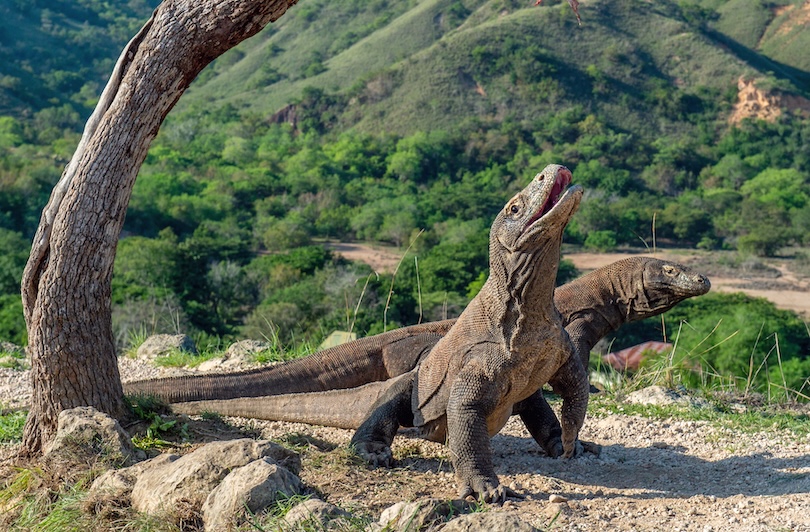
In addition to actually seeing the dragons, you can spot wild horses, water buffalo and other endangered species. Many also camp and kayak at its pristine white sand beaches with the park’s colourful coral reefs being amazing to snorkel and scuba dive above.
10. Singapore

Set off the southern end of the Malay Peninsula is the tiny city-state and island country of Singapore . Often called the ‘Switzerland of Asia’, it is a very prosperous and diverse place with its population speaking English, Mandarin, Malay and Tamil.
Since being established by the British in 1819 as a small trading colony, the city has grown considerably. Still home to one of the world’s busiest ports, its iconic skyline includes famed, futuristic landmarks like Marina Bay Sands Resort and the Gardens by the Bay supertrees.
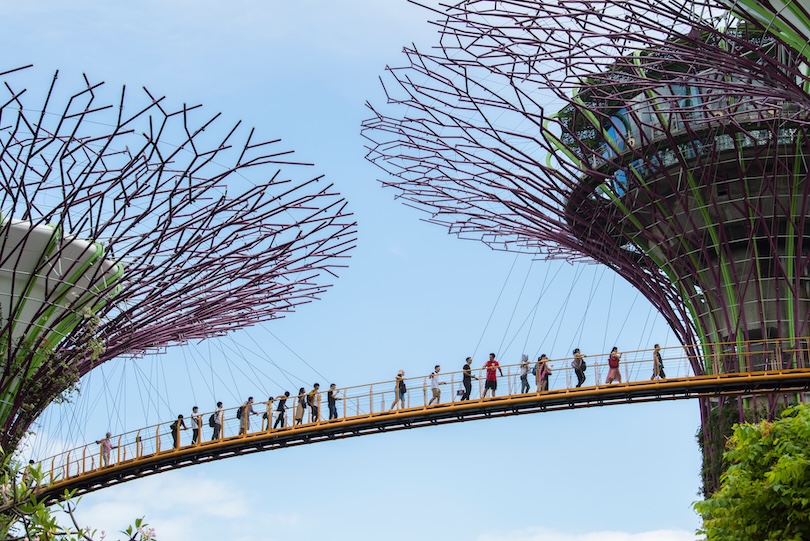
Nearer the ground are cool districts like Chinatown and Orchard Road to amble around with Singapore known for its tasty food and terrific shopping. Although it is one of the world’s most technologically advanced cities, it also has lovely jungles and beaches to enjoy.
9. Ko Phi Phi
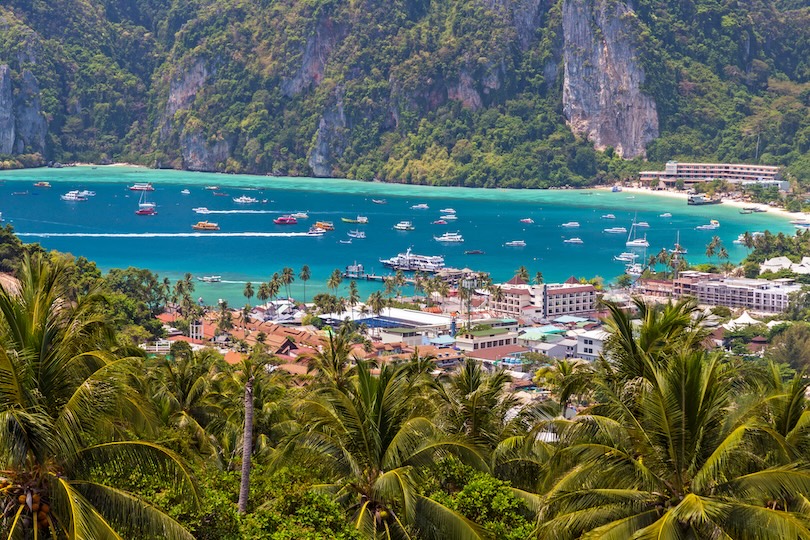
Even more picture-perfect still than Phuket is the nearby archipelago of Ko Phi Phi. Home to some of Thailand and Southeast Asia’s most attractive islands, its charming coves, cliffs and sandy beaches are surrounded by the sparkling Andaman Sea.
Part of Krabi Province , its enchanting isles number five in total with Ko Phi Phi Don being the largest and only one that is inhabited. Towered over by tall karst cliffs clad in greenery, their beaches are often featured on the front of travel catalogues. It’s easy to see why as all their white sands contrast so stunningly with the emerald waters around them.
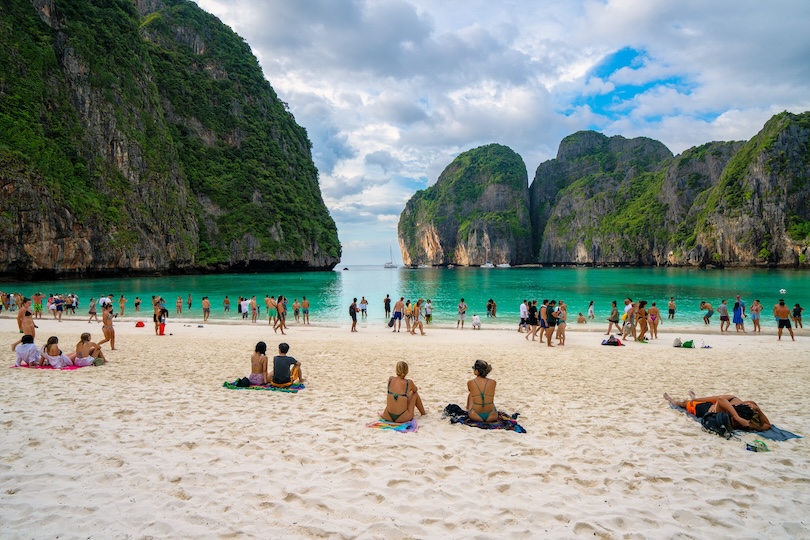
One of the most famous is Maya Bay which was the setting of the hit 2000 film The Beach. As well as sunbathing and swimming, you can take boat trips about the islands and snorkel and scuba dive in their waters. Ko Phi Phi is also known for its lively nightlife and fire shows.
8. Luang Prabang
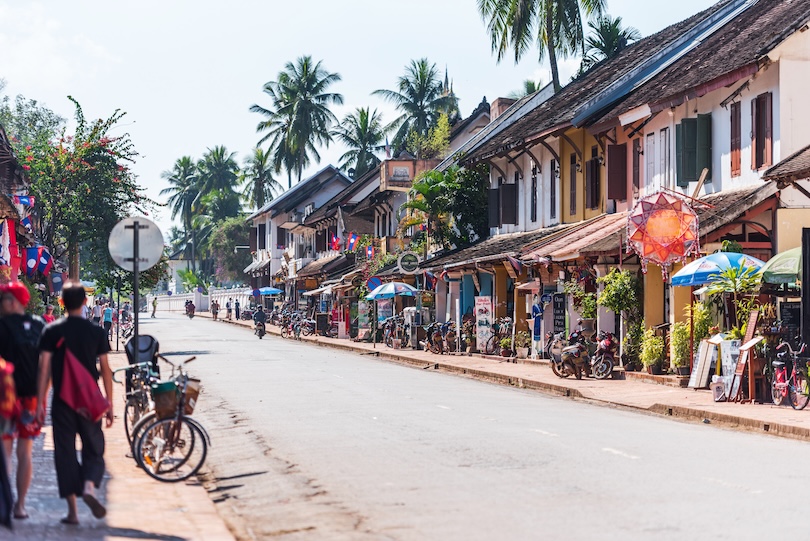
Rightfully renowned for its countless temples and shrines, Luang Prabang is nestled amidst gorgeous green hills in northern Laos. Meaning ‘Royal Buddha Image’, its historic old town is very atmospheric to wander around with several waterfalls also found nearby.
Situated at the spot where the Mekong and Nam Khan rivers meet, it acted as the country’s capital until 1975. At Wat Xieng Thong or the Temple of the Golden City, you can see where the Laotian kings of old were crowned. The nation’s most important monastery, it showcases some exquisite architecture, statues and murals.
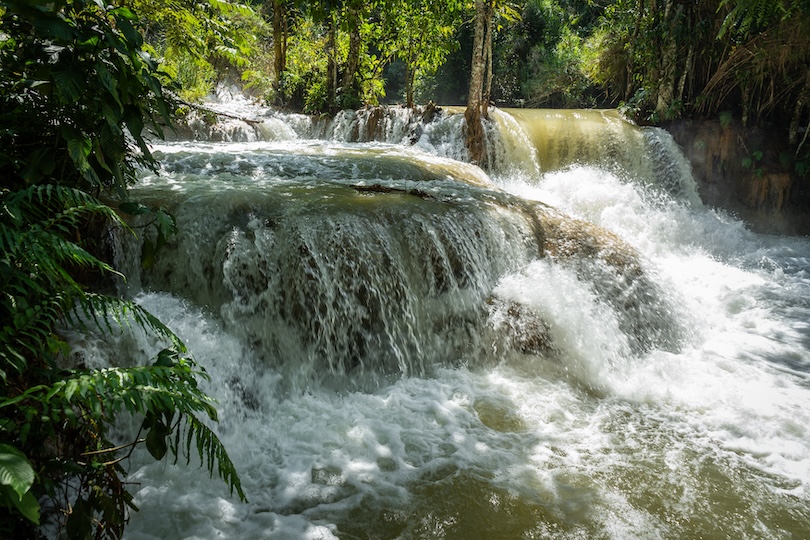
In the Old Quarter, you can still see monks collecting alms in its laidback, stall-lined streets. Once you’ve explored its temples, make sure to take a trip to the fabulous Kuang Si Falls or carved Buddhas in the Pak Ou Caves.
7. Borobudur

The largest Buddhist temple in the world, the absolutely massive Borobudur monument lies in the center of Java, just northwest of Yogyakarta . Just one of Indonesia’s many must-visit sights , its collection of stupas look particularly spectacular at sunrise and sunset.
Dating to the ninth century, its enormous square platforms and circular terraces are made out of two million blocks of dark volcanic stone. Decorating the entire complex are elaborate relief panels and Buddha statues. These depict daily life, the concept of Karma and various fauna and flora from around the island.
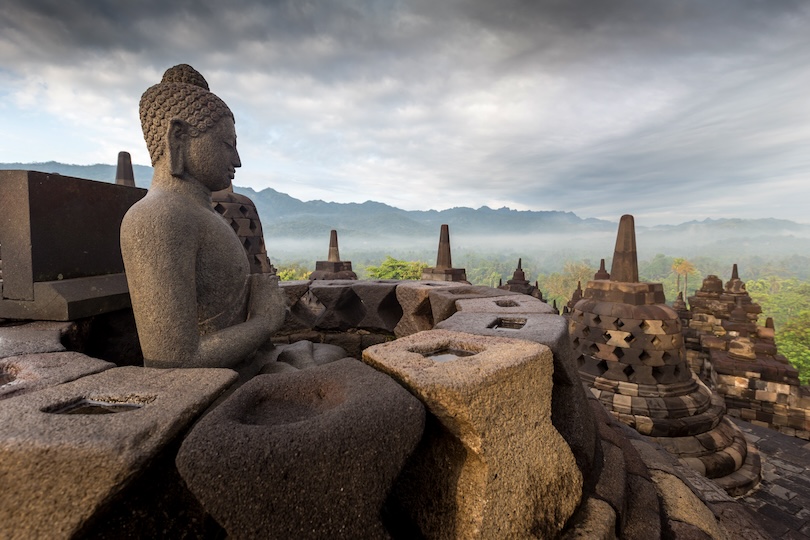
Hidden for centuries under thick layers of ash and rainforest, it is very well-preserved with a couple of museums explaining more about the site. Every June, traditional Javanese dances are performed at Borobudur, highlighting its history and how it was constructed.
6. Ifugao Rice Terraces
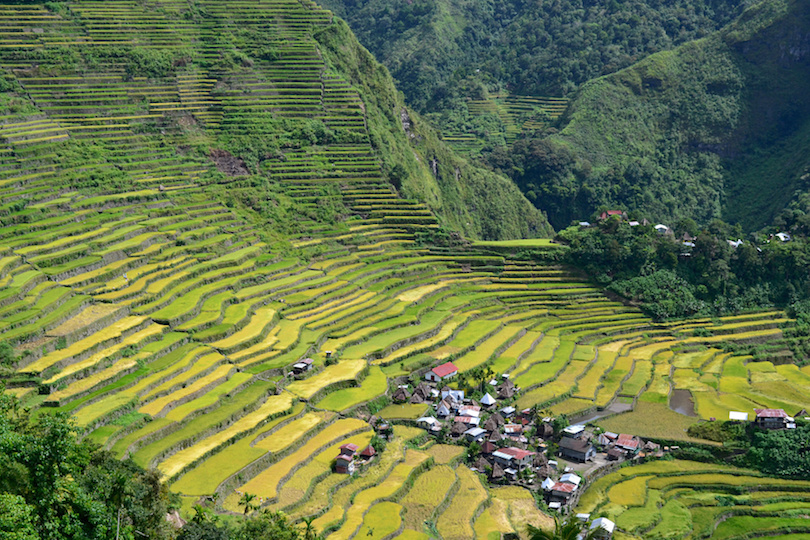
Yet another picturesque place to visit in the Philippines are the beautiful Ifugao Rice Terraces in the northern part of Luzon . Tumbling their way down the sides of steep, sweeping valleys, their vivid green hues make for some phenomenal photos.
For thousands of years now, the Ifugao people have practiced rice farming this way, hidden away amidst the Cordilleras highlands. Carved into the side of the mountains, the irrigated paddies are an astounding feat of engineering. Some even label them the ‘Eighth Wonder of the World’.
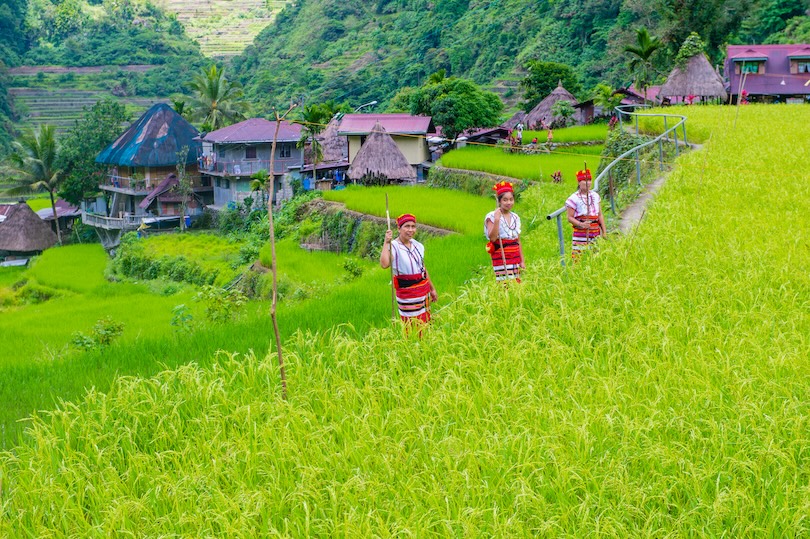
Aside from visiting viewpoints and snapping photos of the remarkable rice terraces, you can trek around and stop by some traditional hill tribe villages. Many sell woodcarvings and handicrafts with plenty of families also offering homestays.
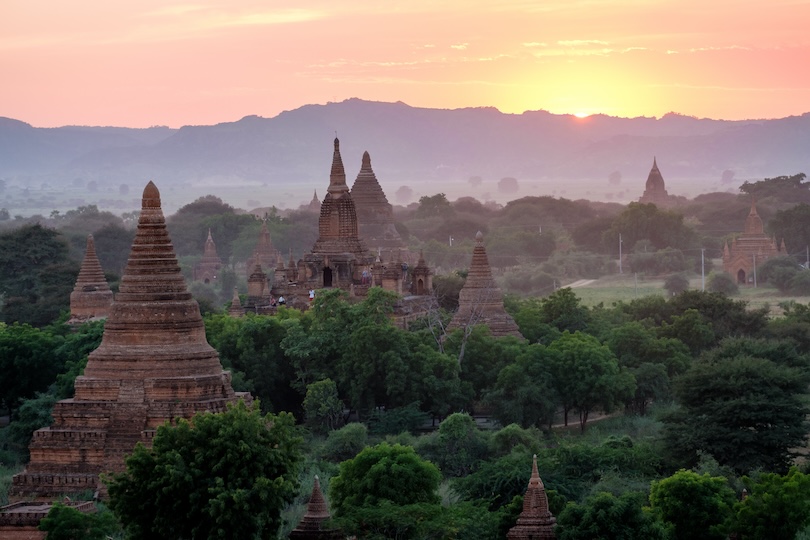
The highlight of most people’s time in Myanmar has to be watching the sunrise above all the stupas, temples and pagodas of Bagan. Rising above the trees and plains about them, its more than 2,200 spires make for an unforgettable sight.
Built between the ninth and thirteenth centuries, the immense archaeological site was once the capital of the powerful Pagan Kingdom. Actually described by Marco Polo himself as the ‘gilded city’, it contained over 13,000 monasteries and temples at its zenith.
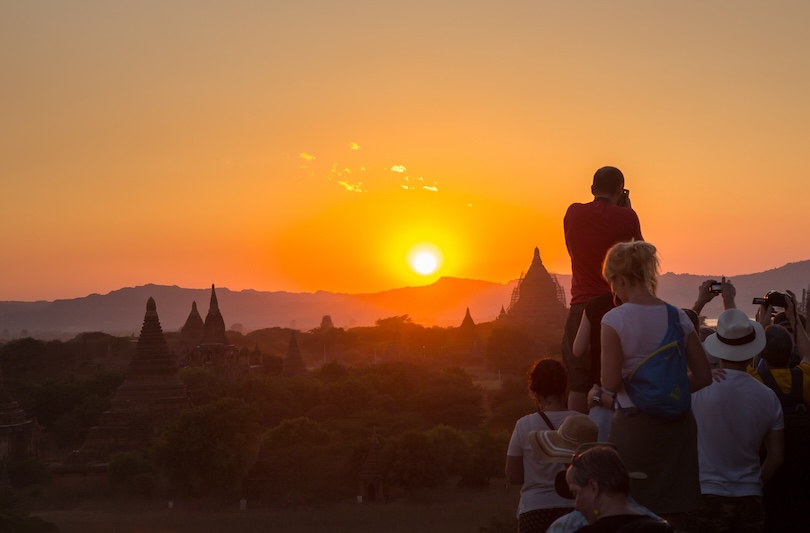
As the complex is so large, you’re best off choosing a few specific places to visit. Among the most popular, impressive and important are Ananda Temple and Dhammayangyi Temple. A lot of people also take hot air balloon rides at dawn to see Bagan from above and enjoy the glint of the rising sun on its stupas.

One of the largest, liveliest cities on the planet, Thailand’s capital Bangkok is certainly not to be missed when in Southeast Asia. Famed for its fantastic street food and nightlife scene, it also has magnificent temples and palaces to check out.
Home to almost 11 million people, its seemingly endless urban sprawl surrounds the Chao Phraya River. Numerous canals also branch off it with many taking peaceful cruises to avoid its intense heat and heavy traffic.
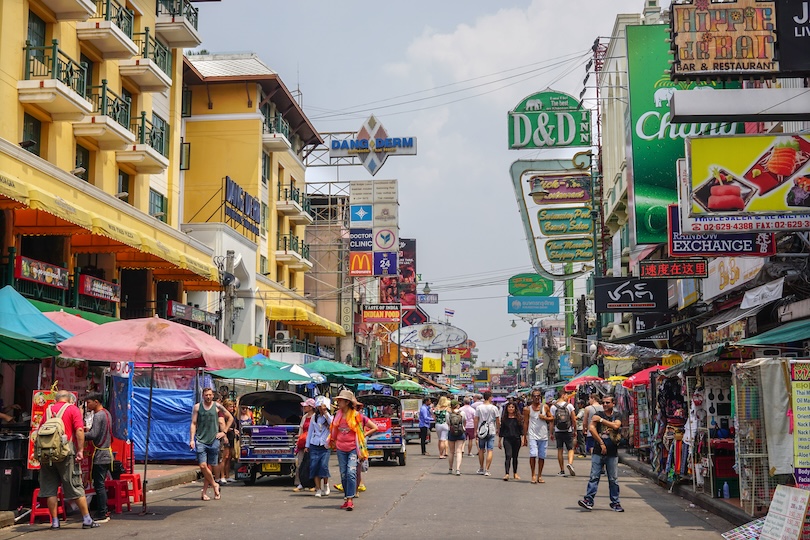
Alongside all its towering skyscrapers, you’ll also find interesting historic sites like Wat Arun and the Grand Palace. Trawling its vibrant markets is loads of fun too as is sipping cocktails at one of the city’s many rooftop bars. With luxury spas and shopping also on offer, Bangkok has something for everyone to enjoy.
3. Ha Long Bay
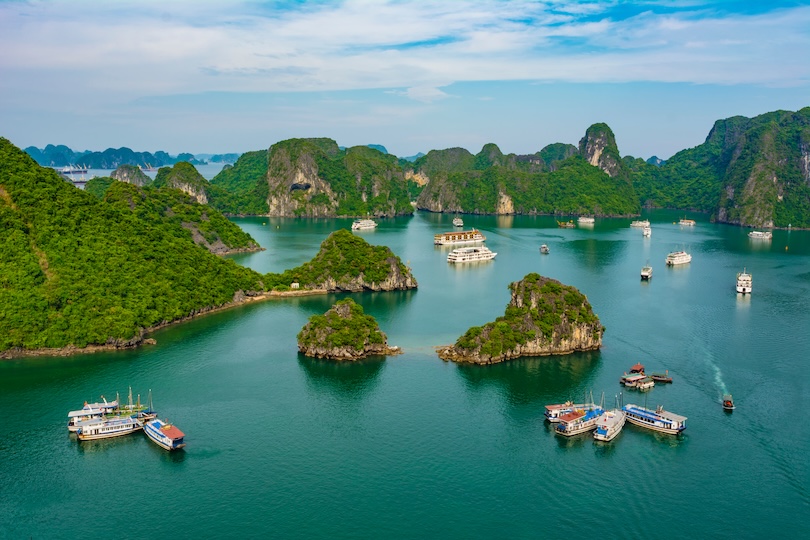
Often listed among the world’s natural wonders, Ha Long Bay’s incredible karst landscapes really are special to explore. One of Vietnam’s top attractions , it lies right in the northeast of the country, not all too far from Hanoi.
Actually meaning ‘ Bay of Descending Dragons ’, its almost endless emerald waters are home to almost 2,000 islets. These mostly consist of craggy limestone outcrops, topped with lush green foliage or jungle. Some also have cool caves for you to enter and stunning swathes of sand to relax on.
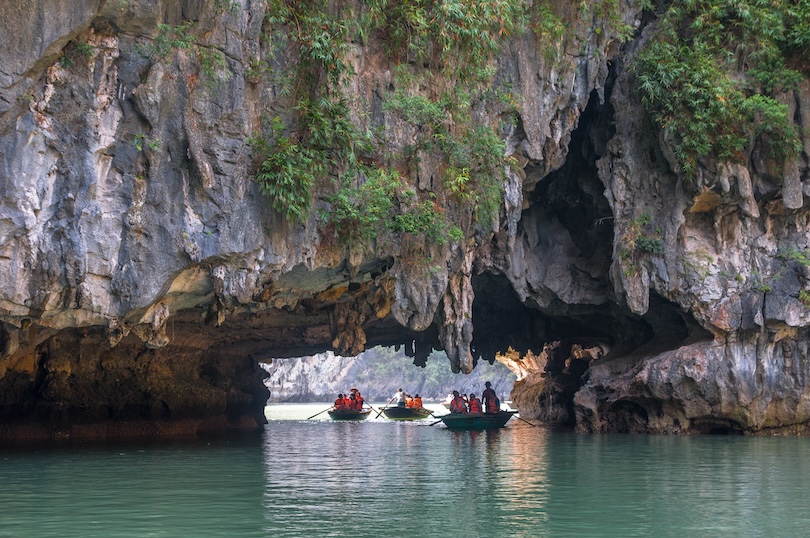
On tranquil junk boat trips about the bay, you can visit its floating villages and kayak about its grottoes. Many also take Tai Chi, yoga and cooking classes aboard the ships while taking in the stupendous scenery all around.

Fittingly known as the ‘ Island of the Gods ’, Bali more than lives up to its name with all its romantic landscapes and revered religious sites. Lying right between both Java and Lombok, its rich culture, resplendent nature and warm hospitality make it the most visited of all the Indonesian islands.
Often described as a tropical paradise, its marvelous mountains and rice terraces give way to rugged cliffs and sandy beaches. Scattered about are thousands of ancient Hindu temples and fabulous valleys, paddies and waterfalls to hike or cycle to.
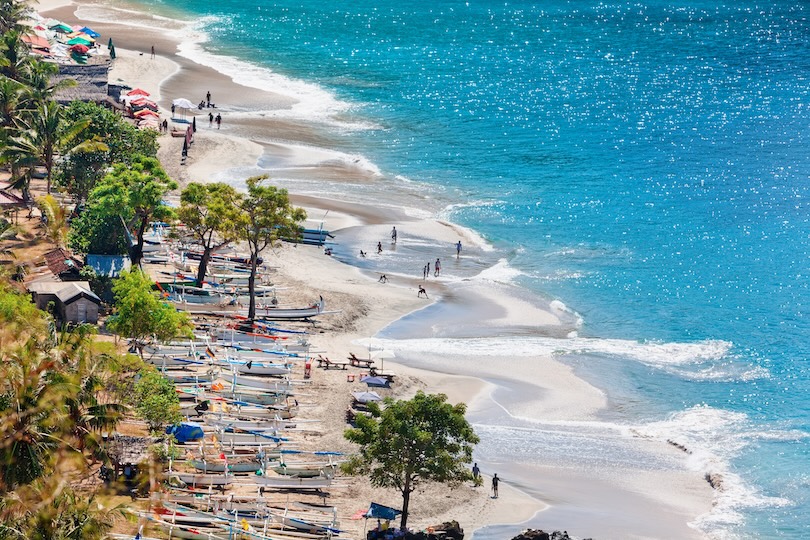
Other than spending time in Ubud , its cultural center and arts and crafts hub, you can enjoy the pounding nightlife and vivid sunsets at Seminyak. Many also attend yoga retreats or surf and party at Kuta Beach.
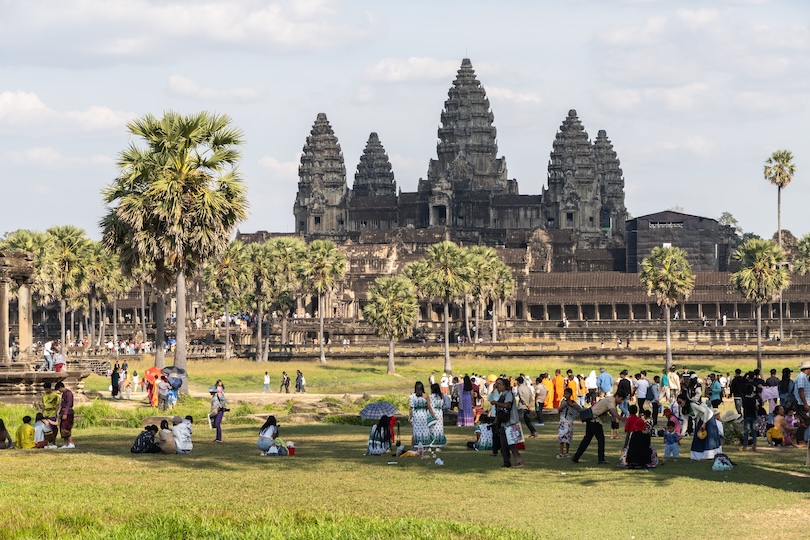
Covering an enormous area, Angkor in Cambodia contains the remains of several capitals of the ancient Khmer Empire. Fascinating to wander around, its hundreds of highly symbolic stone temples can be found just outside of Siem Reap .
Now believed to have been the largest pre-industrial city in the world, the important political and religious center was largely constructed between the ninth and fifteenth centuries. After its decline, the ruins of the temples were eventually reclaimed by the jungle.
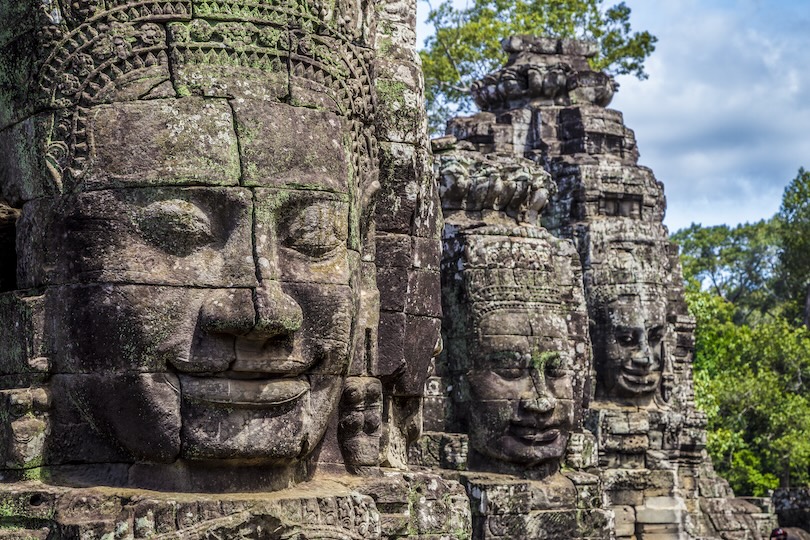
While the iconic Angkor Wat may be its largest and most elaborate structure, there are also tons of other temples like the breathtaking Bayon and tree-covered Ta Prohm to see. All of them exhibit some amazing architecture and are decorated with detailed reliefs, statues and carvings. A place like no other, Angkor is a must-visit when in Southeast Asia.
Map of Southeast Asia
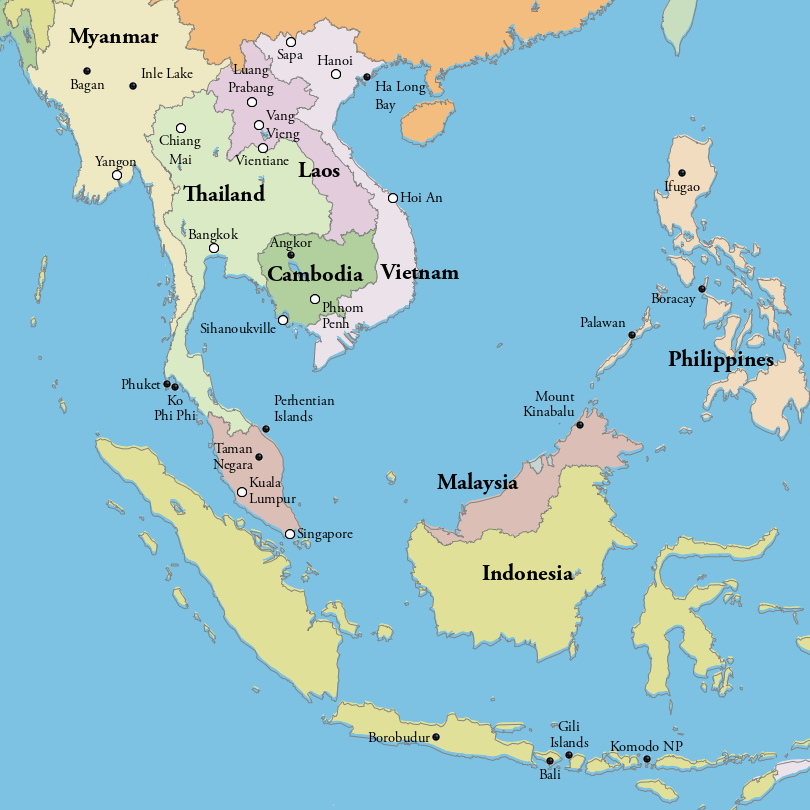
Share this post:
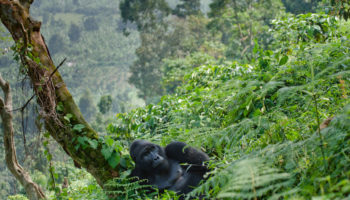
24 Best Places to Visit in Africa
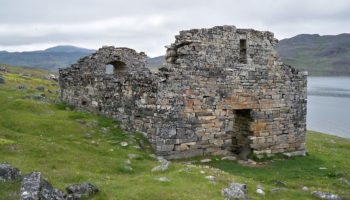
Discover the Hvalsey Church in Greenland
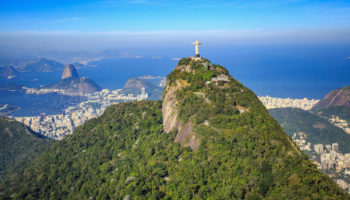
21 Best Places to Visit in South America
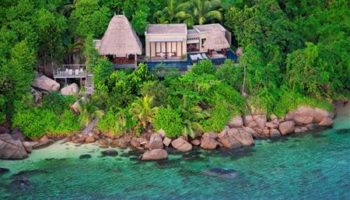
10 Best Seychelles Luxury Resorts
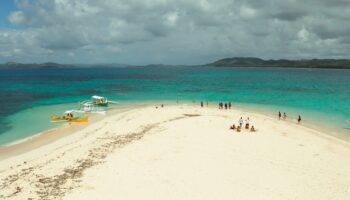
23 Most Beautiful Islands in Asia
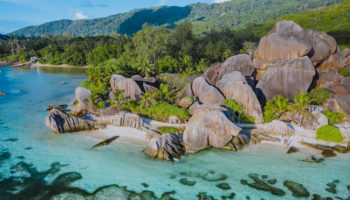
15 Best Things to Do in the Seychelles

12 Top Attractions & Places to Visit in Madagascar
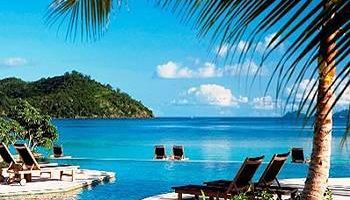
10 Best All Inclusive Resorts in Fiji
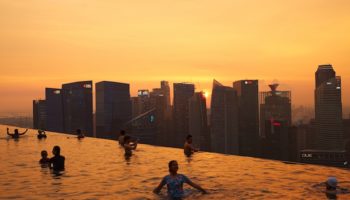
25 Best Cities to Visit in Asia
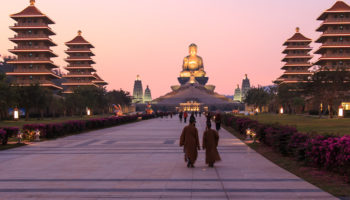
10 Best Places to Visit in Taiwan
Reader interactions.
February 15, 2021 at 4:06 am
Stay away from Sihanoukville, it is now a huge building site ruined by the Chinese building Cambodia’s version of Las Vegas.
Cambodia’s main attraction for you tourists are the Angkor Park temples in Siem Reap, amazing temples built in the 12th century.
February 13, 2018 at 7:49 am
There is also a new Elephant eco-park in Phuket.
February 3, 2018 at 8:37 pm
I just visited an elephant sanctuary park near Chang mai in Thailand where we fed, washed and walked with rescued elephants . Never felt so emotionally rewarded … kindest gentlest giants . Say no to cruel elephant trecking where animals are abused both physically and mentally …
March 8, 2017 at 12:18 pm
I agree with Marie. It would be worth searching to see if there is an eco-tourist elephant park where there is no riding. I went to one in Chiang mai and it was fantastic.
Leave a Reply Cancel reply
Your email address will not be published. Required fields are marked *
This site uses Akismet to reduce spam. Learn how your comment data is processed .
Change location
- UK / International
- Call toll-free from 10am EDT 617-223-4521 617-223-4105 or
- REQUEST A QUOTE

Thailand & Vietnam Specialist
From as far back as I can remember, I have always had a passion for travel. Growing up traveling with my family laid the foundation for embarking on my own adventures.
My time spent in Thailand and Vietnam was truly unforgettable. Whether it was the tranquil countryside, bustling cities, or pristine beaches, each area offered a plethora of sights and activities. The welcoming nature of the people in Thailand and Vietnam are unmatched, making you feel at home. Not to mention the delicious cuisine; I always asked for extra spice.
Being part of the travel industry not only allows me to pursue my passion, but also enables me to assist others in creating unforgettable travel experiences as well.

Start planning your trip to Southeast Asia with Julia
- 617-223-4521 617-223-4105
- Make an inquiry
Q&A with Julia

What’s the best local dish you’ve tasted?
In Chiang Mai, I had the pleasure of eating at an outdoor restaurant overlooking the Mae Taeng River. I indulged in a bowl of Tom Yum soup that surpassed my expectations in level of spice and flavor. Delicious food with great views.

What’s your most vivid travel moment?
One of my most vivid travel moments occurred at an elephant sanctuary in Thailand. During this experience I had the incredible opportunity to feed and bathe them. What made this experience truly special was the ethical nature of the sanctuary, which provided valuable insights into their operations and an understanding of their commitment to the well-being of the elephants. The genuine care exhibited by the sanctuary's staff for the elephants was heartwarming. Given my love for wildlife, this was a beautiful experience I am grateful to have had.

Where would you love to travel next?
I would love to travel to Australia next and explore its diverse landscapes and seascapes. I'm an outdoors enthusiast and Australia is the perfect place to indulge. I’d learn how to scuba dive and surf, hike in the varied terrain, and enjoy some wildlife spotting.

Thailand’s ‘most beautiful transgender’ shines alongside husband at public events

My husband doesn’t want to live with my parents

Investing in land is 50 times more profitable than buying gold

Korean travel agency suspended for forcing Chinese tourists to shop

Singapore Changi named world’s third cleanest airport

Thai woman sells durian in bikini despite public backlash

Climate change could force Thailand to relocate capital Bangkok

Hanoi, HCMC house rent among highest in Asia

Heavy rains leave downtown Da Nang in traffic chaos

Indonesia again top source of tourists for Singapore
Thailand beats malaysia to become most-visited country in southeast asia.

Thailand received 9.37 million foreign visitors during the January-March period. The Southeast Asia's second largest economy had launched a series of tourism promotion policies including permanent visa waivers for China.
Malaysia, which became the regional tourism champion last year, came in second with 5.8 million arrivals, increasing by 32% year-on-year, according to data from its tourism ministry.
Vietnam was third in the region with 4.6 million, up 72% year-on-year, followed by Singapore with 4.35 million that saw a year-on-year 50% increase.
Indonesia came in fifth with 3 million foreign tourist arrivals in the first quarter.
The Philippines welcomed 1.6 million, jumping by 21.3% year-on-year while Cambodia attracted 1.58 million international tourists during the same period, up 22.5%.
Laos only welcomed 1 million foreign arrivals.
Southeast Asian countries like Thailand, Singapore and Malaysia have been racing to attract potential tourism markets such as China, India and Europe by offering visa exemption or extending visa-free stays.
- Tắt chia sẻ

10 Packing Essentials For Your Southeast Asia Adventure
S outheast Asia is a vast, breathtakingly beautiful place , and there will always be something for visitors to explore. However, if venturing into this part of the world, a traveler must know what they need before they set out. Southeast Asia encompasses many countries, including Malaysia, Thailand, Vietnam, and Cambodia for example. Each of these has its own challenges that travelers may need to overcome during their trip. As with any adventure, planning should take precedence in the scheme of things.
But what does a guest to Southeast Asia have to pack when they're headed there? Travelers across the globe, and even native to the region, have a set of essential things that they would prefer to carry with them. Depending on where a visitor is headed, the list of things may vary. These ten items form the core of what visitors need, regardless of whether they're headed to Southeast Asia as a digital nomad or one of the rejuvenating resorts in the region for a casual getaway. These essentials should make up the central part of a guest's packing.
Related: 10 Dreamiest Southeast Asia Resorts For A Luxurious Vacation
The recommendations for products here come from research into these products across the Internet and through individual experiences. The criteria used for determining which products to recommend to visitors to Southeast Asia also depended on the availability of the product and what the product could be useful for while trekking through these countries. Additionally, these products offer a certain level of comfort and style the modern traveler would enjoy having in these places.
Lightweight Backpack
A lightweight backpack is an invaluable asset for travelers exploring Southeast Asia. Its featherweight design ensures comfort during long walks through bustling cities and trekking in humid jungles. With sweltering temperatures and diverse terrain, carrying minimal weight eases the strain on the traveler, allowing them to easily navigate crowded markets, ascend steep trails, and board various modes of transportation. Moreover, it provides the flexibility to adapt to local customs, as travelers can easily remove or store clothing layers to adhere to modesty requirements in temples or mosques.
- Product: Red Rock Outdoor 11.5L Large Rover Sling Pack
- Price: $35.99
- Usability: This backpack carries a massive amount and can even take a small tablet or a laptop (up to 13"). It is designed to be rugged yet comfortable, reducing sweating in the extreme heat of Southeast Asian climates.
A smartphone is an essential tool for any traveler exploring Southeast Asia. Its versatile camera capabilities enable easy capturing of the region's breathtaking landscapes, rich cultural heritage, and vibrant street life. Moreover, its ability to connect to multiple networks ensures uninterrupted communication and access to crucial navigation apps, enhancing the traveler's safety and convenience. Whether snapping memorable photos or staying connected in remote areas, a smartphone is a critical asset to have.
Visitors should ensure they get a SIM card with coverage in the area they are headed to. Some telecommunications providers don't cover the country visitors may want to see.
- Product: Google Pixel 4a Smartphone
- Price: $254.50
- Usability: Designed by Google, the Pixel 4a is not the newest version of the Pixel family but is a bit more rugged, making it a better choice for a phone when headed to Southeast Asia.
A raincoat is a must-have travel accessory for anyone exploring the epic and adventurous places in Southeast Asia . The region's unpredictable weather, especially during the monsoon season, often brings sudden and heavy rainfall. Carrying a lightweight and packable raincoat ensures the traveler remains dry and comfortable when caught in unexpected downpours. It's a practical addition to their gear, enabling them to continue their adventures, visit attractions, or navigate the bustling streets without being deterred by the tropical rains. Nothing is more miserable for a traveler than getting soaked in one of Southeast Asia's monsoons.
- Product: Nike Repel UV Windrunner
- Price: $73.97
- Usability: The climate of Southeast Asia ensures that there are always unexpected rains on the horizon. Having a waterproof covering that visitors can stow easily is necessary to ensure they remain dry during the rainiest months.
Comfortable Footwear
Comfortable footwear is a necessity for a Southeast Asia trip due to the extensive walking and exploration required. The region's diverse terrain, from bustling cities to rugged trails, demands shoes that offer support and cushioning. Ill-fitting or uncomfortable footwear can lead to discomfort, blisters, and fatigue, hindering the traveler's ability to fully enjoy the sights and experiences. With the proper footwear, they can comfortably navigate the urban streets, hike through lush jungles, and explore temples, ensuring an enjoyable and pain-free journey.
- Product: Women’s Rio Branco Alveomesh Shoe
- Price: $140.00
- Usability: This shoe is a sustainable option for visitors to Southeast Asia, made out of a combination of recycled and organic materials while maintaining ease of use and comfort for the nature-conscious user.
Moisture-Wicking Clothing
Moisture-wicking clothing is essential to any traveler's suitcase for a Southeast Asia adventure. The region's hot and humid climate can lead to excessive sweating, discomfort, and potential skin issues. Moisture-wicking fabrics pull sweat away from the body, keeping the traveler dry and reducing the risk of chafing and irritation. This type of clothing also dries quickly, making it ideal for on-the-go laundry or sudden rain showers. With moisture-wicking clothing, the traveler stays cool, fresh, and comfortable.
Southeast Asia's climate and culture often demand lightweight clothing, but remember to respect local customs when visiting temples or conservative areas. Pack modest clothing, like long-sleeve shirts and pants or a sarong, which can easily cover shoulders and knees.
- Product: Nike Dri-FIT ADV A.P.S.
- Price: $45.97
- Usability: Designed for workouts, this material is perfect for ensuring that visitors remain dry despite potential sweating in the climate of Southeast Asia. In colder areas, it can be worn as a layering piece.
Related: 10 Idyllic Islands In Southeast Asia (That Aren't In Thailand)
A hat is one of the most critical lines of defense while trekking through Southeast Asia. The intense tropical sun can lead to sunburn and heat exhaustion, making sun protection crucial. A hat shields the traveler's face and head from harmful UV rays, reducing the risk of sunburn and heat-related discomfort. It also provides relief by creating shade, allowing them to explore bustling markets, ancient temples, and stunning landscapes with comfort and peace of mind, making it an essential companion for a Southeast Asian adventure.
- Product: Undercover Khaki Bucket Hat
- Price: $276
- Usability: This hat's front and back flaps both serve as coverage to prevent sunburn and ward water off the wearer's neck. It's a complete solution for a Southeast Asian Adventure.
Travel Adapter
A travel adapter is an indispensable tool for anyone journeying to Southeast Asia. The region encompasses a variety of countries, each with its own unique plug socket and voltage standards. A travel adapter ensures travelers can charge their devices and stay connected without hassle or interruption. With this versatile accessory, they can adapt to the diverse electrical outlets in the region, from Thailand's Type A/B to Malaysia's Type G, enhancing their convenience and preparedness for the journey through Southeast Asia.
- Product: Sole Source TPAK-10EP-TAA
- Price: $8.50
- Usability: Universal worldwide adapters like this one offer a tremendous multi-point solution for electronics in Southeast Asian countries and beyond. Getting charged simply means selecting the right option for the plug mechanism.
Reusable Water Bottle
Southeast Asia is hot, and visitors should take as many precautions as possible to remain hydrated. As such, a reusable water bottle is quintessential for travelers exploring Southeast Asia. Carrying a refillable water bottle ensures access to clean and safe drinking water, even in areas with unreliable tap water. It not only reduces plastic waste but also provides a cost-effective and eco-friendly solution for staying hydrated while navigating bustling cities or trekking through the lush landscapes of Southeast Asia.
- Product: Nike Recharge
- Usability: Built out of metal, this reusable water bottle ensures that visitors to Southeast Asia don't need to overthink where they place their water bottles.
When traveling, especially for digital nomads or those who work on the go, losing power could spell disaster. Frequent power outages and limited access to charging points can pose challenges for charging devices like smartphones, cameras, and tablets. A power bank provides a reliable portable energy source, allowing travelers to stay connected, navigate with GPS apps, and capture memories without worrying about running out of battery. It's a travel essential that ensures peace of mind through this vibrant and diverse region.
- Product: Mobile Charging Kit: Black
- Price: $44.95
- Usability: This 5000-mAh charging bank is built to take a beating, as is typical of Otterbox products. Its small size allows it to be carried around in a pocket without any added fuss.
Related: Budgeting For Southeast Asia Is Easy With These Tips
Travel Documents
Losing travel documents is among the scariest things that could happen to a traveler. You should be aware of things you need to know if traveling with a US passport in this region . The region encompasses various countries, each with its own visa requirements, entry regulations, and necessary permits. Travelers must carry their passport, visa, travel insurance, and any photocopies of essential documents in a secure and waterproof pouch. This preparedness ensures a smooth entry and exit. It provides vital information in case of emergencies, making it an absolute necessity for a hassle-free and safe exploration of Southeast Asia.
- Product: Leather Passport Case
- Usability: The soft, pebbled leather is great for holding onto travel documents and has the added benefit of being waterproof - a definite plus in such a wet climate as Southeast Asia. Visitors can also add monogramming foil for a personalized product.
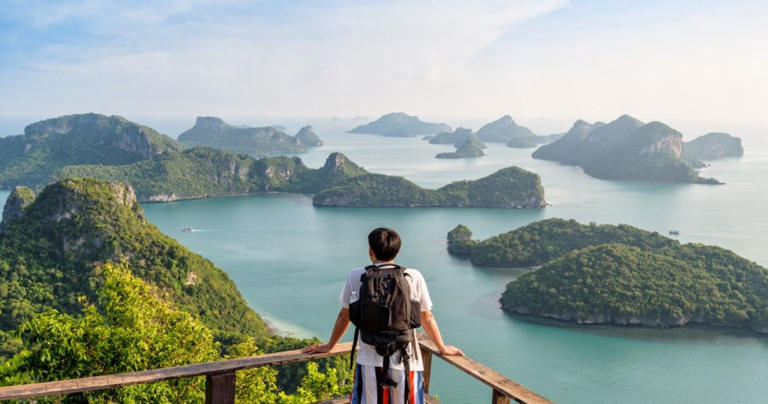
Things to Do in Monino, Russia - Monino Attractions
Things to do in monino.
- 5.0 of 5 bubbles
- Good for Kids
- Budget-friendly
- Hidden Gems
- Good for Big Groups
- Adventurous
- Good for a Rainy Day
- Good for Couples
- Honeymoon spot
- Good for Adrenaline Seekers
- Things to do ranked using Tripadvisor data including reviews, ratings, photos, and popularity.

1. The Central Air Force Museum
2. Church of St. George

IMAGES
VIDEO
COMMENTS
7 popular Southeast Asia tourist spots you can travel to in 2022. Mar 3, 2022 • 9 min read. Beaches. Cambodia's less-traveled islands visitors need to know about . Nov 15, 2021 • 5 min read. Tips & Advice. Ask LP: when can I travel to Southeast Asia again? Sep 11, 2020 • 3 min read.
Southeast Asia is an incredibly safe place to backpack and travel — even if you're traveling solo and even as a solo female traveler. Violent crime is super, duper rare. Petty theft (including bag snatching) is the most common type of crime in Southeast Asia, especially around popular tourist landmarks.
2 months is the perfect minimum time to enjoy all four countries in mainland Southeast Asia and travel through them overland without having to rush. With at least 6 to 8 weeks you can follow the complete so-called Banana Pancake Trail, a famed Southeast Asia backpacker route that mainly runs through Thailand, Laos, Cambodia, and Vietnam (though ...
Southeast Asia is a fascinating part of the world that offers beautiful islands, beaches, lush jungles, unique wildlife, tasty food and intriguing culture. This Southeast Asia travel guide is designed to uncover some of our favorite places and things about this region and help you plan your own trip to this unique part of the world.
2 weeks in Southeast Asia is not enough, that's for sure. However, with plenty of planning, you can cover many areas and do so many things. I will show you seven travel itineraries for Southeast Asia featuring Thailand, Vietnam, Cambodia, The Philippines, Indonesia, Malaysia, and Singapore. Be prepared, this is a long-form guide. You can also ...
Among all our couples' and family clients' choices, the best-selling itineraries cover the Southeast Asia travel hubs of Thailand (Bangkok, Chiang Mai, Phuket / Koh Samui), Vietnam (Halong Bay, Hanoi, Hoi An, Ho Chi Minh) and Cambodia (Angkor Wat). >>How to Plan a 3-Week Thailand, Cambodia, and Vietnam Tour Bali in Indonesia, known locally as 'the Island of the Gods', is one of the best ...
They organize all kinds of events and tours, so it's easy to make friends here. Days 27-29: Siem Reap. Follow the Siem Reap and Angkor Wat itineraries from above. If you have time, visit Tonle Sap, Southeast Asia's largest freshwater lake and UNESCO nature reserve. It is 52 kilometers (32 miles) from Siem Reap.
Itinerary #1: 2-Week to Thailand, Cambodia, and Vietnam (Time-Smart) Our carefully curated 2-Week Best of Thailand, Cambodia, and Vietnam itinerary is a fusion of cultural richness, historical wonders, and breathtaking landscapes. It's the most chosen route for first-time travelers to Southeast Asia, offering an ideal glimpse into the best of the region's three most popular countries within a ...
By Chris Quan Updated Mar. 5, 2024. With more than a dozen countries in Southeast Asia, 4 weeks/1 month can satisfy your ambitions to travel to many places. Check out recommended plans for your 4 weeks/1 month in Southeast Asia and expert advice. Content Overview. Which Southeast Asia Countries to See in 4 Weeks. Week 1: Myanmar. Week 2: Vietnam.
Southeast Asia is cheap, so much so that it is among the cheapest travel destinations on the planet. US $20 is a perfectly serviceable daily backpacker budget in most countries in the region, while the savvy traveller can eat well, drink a lot and stay in luxury hotels for US $100 per day.
14. Chiang Mai, Thailand. 15. Hanoi, Vietnam. Map of Places to Visit in Southeast Asia. 1. Angkor Wat, Cambodia. Buddhist monk in Angkor Wat. Located in northwestern Cambodia, the city is best known for being the gateway to the Angkor region, but Siem Reap has much to offer on its own.
Laos is the perfect destination for adventurers. Thanks to its many pristine jungles and karst mountain landscapes, it may well be the best country in mainland Southeast Asia for hiking and trekking. It's also an excellent place for other outdoor activities like kayaking, zip-lining, caving, and rock climbing.
Spirits Of Vietnam - Cambodia - Thailand In 16 Days. It was a trip of 14 days Vietnam, 3 days Kambodscha, 2 days Bangkok. I booked over Secret Escaoes wirh Realistic Asia as guide. In Vietnam I had a great sightseeing experience in Jan 2024. The hotels were solid 3••• Hotels partly needed renovation. Mostly organized tours, were no tour ...
See here for a guide to the climate and monsoon seasons of Southeast Asia. Travel Insurance: An essential part of any backpacking trip. The most popular with our community members are 1. Safety Wing Nomad Insurance, 2. True Traveller 3. World Nomads. Best Hostels in Southeast Asia? Check out some of the best hostels in Southeast Asia here.
Venture on a journey to Southeast Asia, a world of majestic rainforests, endless beaches, and enchanting cultures, where Southeast Asia is a destination for every dream. Explore our diverse vacation tour packages and start planning your unforgettable travel experience to Southeast Asia today.
Find trips. Speak to a certified Southeast Asia specialist to start planning your tailor-made vacation... Call one of our experts or arrange a video appointment for ideas and advice. 617-223-4105. Make an inquiry. Jack. Southeast Asia & USA Specialist. Matthew. Southeast Asia, Alaska & Maldives Specialist.
28. Sihanoukville. 29. Vientiane. Both the capital and largest city of Laos, Vientiane is an underrated place to visit with lots of different sides to it. Besides boasting beautiful Buddhist temples, it is known for its elegant French colonial-style architecture and vibrant street food scene.
Southeast Asia, a region celebrated for its bustling cities, stunning landscapes, and rich cultural heritage, is a treasure trove of hidden gems waiting to be discovered. Beyond the well-trodden ...
When it comes to solo travel, most people start in Southeast Asia. Solo travel to Southeast Asia is one of the best ways to break into a solo travel lifestyle because it's safe, easy to get ...
Find out about her travel experiences and recommendations. Julia is a Thailand and Vietnam Specialist. Find out about her travel experiences and recommendations. Skip to content. ... Start planning your trip to Southeast Asia with Julia. 617-223-4521. 617-223-4105; Make an inquiry; Q&A with Julia.
Pack light cotton clothing as it is hot and humid in Southeast Asia. In most Southeast Asian countries, you can get your clothes washed and dried in hotels or laundries for just a couple of dollars. Also, it is easy to buy clothes at the street markets for very reasonable prices. 2. Pack Clothes for Temple Visits.
A whopping 16.57% of all arrivals to Boracay in 2023 were American citizens. This is the second largest group of tourists after Koreans, although U.S. travelers were by far the bigger spenders, making them the most valuable in the eyes of the local authorities.
If you're looking to travel within Southeast Asia, you can't beat these seats at this price. Bottom Line. Booking flights to Thailand, Bali, the Philippines, Singapore, or Vietnam might seem daunting, but prices - whether you're paying cash or cashing in your points and miles - aren't scary at all right now.
Some 5.73 million people passed through Changi Airport in March, up 23.6 per cent versus March 2023 and 1.7 per cent higher than 2019, before Covid closed borders and all but put a stop to ...
The Southeast Asia's second largest economy had launched a series of tourism promotion policies including permanent visa waivers for China. Malaysia, which became the regional tourism champion last year, came in second with 5.8 million arrivals, increasing by 32% year-on-year, according to data from its tourism ministry.
Embarking on a backpacking adventure through Southeast Asia is a dream for many travelers seeking vibrant cultures, stunning landscapes, delicious cuisine, and unforgettable experiences. With its ...
Best Asian Restaurants in Odintsovo, Odintsovsky District: Find Tripadvisor traveller reviews of Odintsovo Asian restaurants and search by price, location, and more.
A travel adapter is an indispensable tool for anyone journeying to Southeast Asia. The region encompasses a variety of countries, each with its own unique plug socket and voltage standards.
Things to Do in Monino, Russia: See Tripadvisor's 294 traveler reviews and photos of Monino tourist attractions. Find what to do today, this weekend, or in September. We have reviews of the best places to see in Monino. Visit top-rated & must-see attractions.
Singapore Airlines Ltd. staff, including pilots, may get a profit-sharing bonus of 7.94 months, the Straits Times reported, citing an announcement it had seen from chief executive officer Goh ...